

25 Bolivia Tourist Attractions That You Just Can’t Miss
By Author Sarah Ketchum
Posted on Last updated: 6th October 2023
Bolivia is a country full of beautiful places and people. There is seemingly no end to the gorgeous scenery, unique landmarks, and intriguing culture that Bolivia has to offer.
When planning a trip here, it can feel hard to narrow down all the options among the different Bolivian tourist attractions on offer.
Click to navigate this article:
Bolivia tourist attractions you’d be silly to not experience
But this country has something to offer to every type of traveler, from city-lovers to backpackers, historians to adrenaline junkies. Join us as we dive in to Bolivia’s most intriguing, blood-pressure increasing and historic things to do in Bolivia.
1. Bike down the world’s most dangerous road
One of the most popular tourist attractions in Bolivia is the famous “Camino de la Muerte” – also known as the Death Road or World’s Most Dangerous Road.
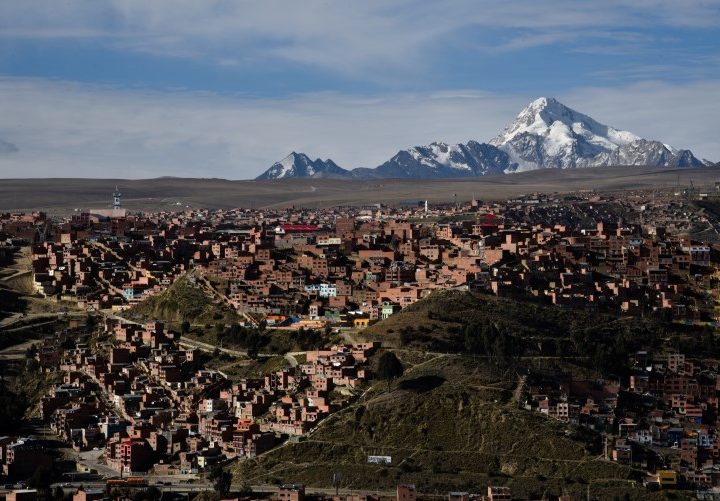
The best way to experience this crazy ride is to hurtle down it on a mountain bike! There are many tour operators that offer mountain biking down the Death Road, including Gravity . If you’re an adrenaline-junky, this activity absolutely must be on your list.
Planning Your Trip to South America?
Save time, stress & money with a customized travel itinerary planned for you by a South America expert
What previous clients have said:
Going to a new and exciting place is an adventure AND has its challenges. Being able to carve out an in-depth plan with someone that has been there and whom you can trust was extremely helpful. We felt comfortable embarking on a six-week backpacking trip with kids ages 8 and 11 with Steph on our team. Her expertise and ability to hear what we wanted gave us a great jumping point for planning. Her advice and wide array of options also allowed us to be flexible. It also gave us peace of mind knowing that we had someone we could call if our plans went awry. Every one of Steph’s recommendations panned out to be incredible pieces of our trips and we would highly recommend her!
2. Summit a 6,000-metre mountain
If you fly into El Alto International Airport, the breathtaking Huayna Potosí is probably the first thing you’ll notice when you walk out the doors.
At a towering 6,088-meters (19,974 ft.) above sea-level, Huayna Potosí is one of Bolivia’s top points of interest for budding mountaineers from around the world who want to cross a 6k peak off their bucket list and is considered one of the best South American hikes .
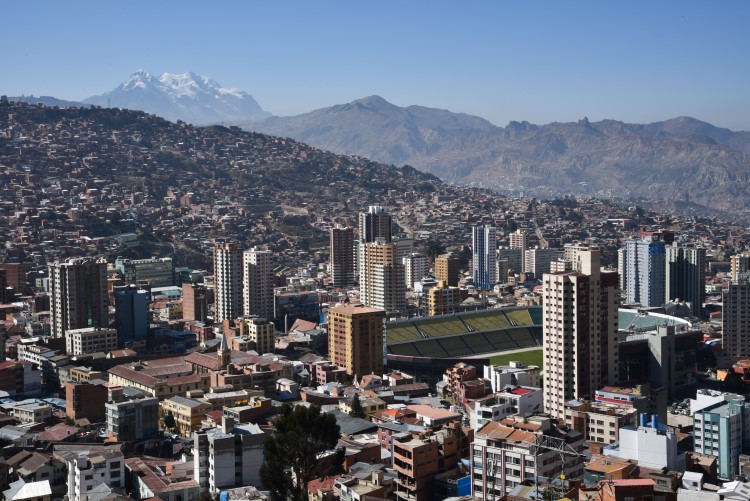
From La Paz, many tour operators (such as Andean Ascents) offer three-day excursions, complete with gear and training with how to use crampons and ice axes.
This trek isn’t easy (you should definitely give yourself a few days to acclimatize), but the view from the top and sense of accomplishment you’ll feel at the end are worth it!
3. Stand in awe of the world’s largest salt flat
Arguably the most famous place in Bolivia, the Salar de Uyuni is truly a spectacular and beautiful sight.
Hop on a tour and experience the salt flat for yourself, as well as the surrounding lagunas and deserts.
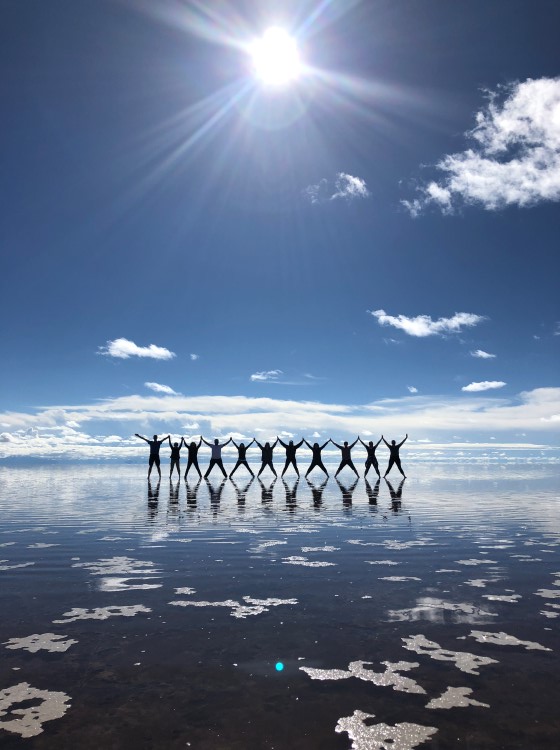
Be sure to take your camera along to snap some amazing reflection and perspective shots; you’ll also get the chance to admire the stunning landscapes and flamingoes of Laguna Colorada.
Find out everything you need to know before visiting with this comprehensive guide to the Salar de Uyuni and read about the experience of visiting it at dawn .
4. Go caving in Uma Jalanta
About four hours outside of Cochabamba there is a small, but awesome national park called Toro Toro. Inside the park, there’s plenty to see and do, but one of the coolest things is the Uma Jalanta cavern – a huge cave that you can explore!
Park rangers serve as guides, and you will be provided a helmet and headlamp upon arrival. Along the route inside you’ll be able to see plenty of stalactites and stalagmites, and even some blind fish deep within the cavern!
5. Shop for souvenirs on Calle Sagarnaga
Calle Sagarnaga is in the heart of La Paz, beginning right by the San Francisco Basilica. The best souvenir shopping in the country can be down there and around the nearby streets.
If you want anything made out of alpaca or aguayo (the colorful woven fabric) the options are endless, and the prices are easy on the wallet.
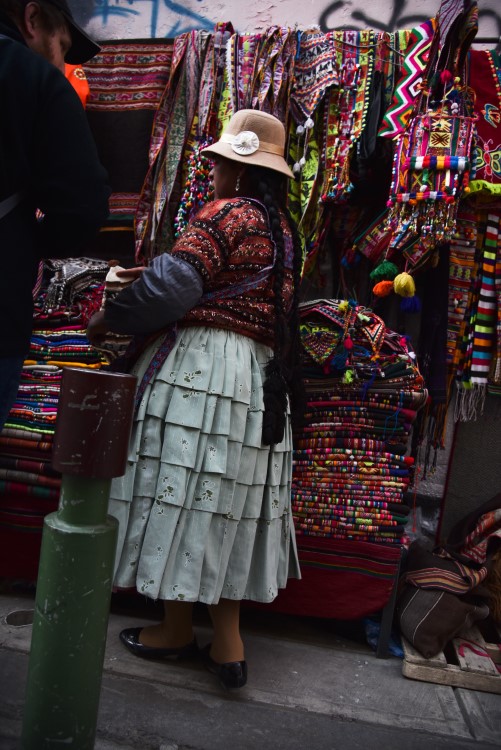
Want to step it up a notch? Check out the Mistura shop which offers a variety of specialty, high quality Bolivian products.
It was named one of the top 50 concept stores in the world last year by Insider Trends (one of only three Latin American shops to make the list).
6. Visit the UNESCO Jesuit Missions
In the area surrounding Santa Cruz, the Jesuits built ten missions in the 16th century, and six of these missions were named UNESCO World Heritage sites in the 1990s, making them some of Bolivia’s most interesting historical sites.
While the Jesuits at one time had a large presence and many missions throughout South America, the ones in Bolivia managed to avoid the disrepair and destruction that was visited on many others following the colonial period.
Many companies offer tours to these historic Bolivian monuments, which showcase a beautiful architectural mix of New and Old-World styles coming together.
The art and architecture evident at these missions is an interesting illustration of the cultural mix that makes up Bolivia today.
7. Trek historic Inca Trails
While most people usually think of Peru when they think of the “Inca trail,” the facts are that there are Inca trails all over South America, including Bolivia!
One of the top things to do in Bolivia is to strap on your hiking boots and get ready to walk in Inca footsteps.
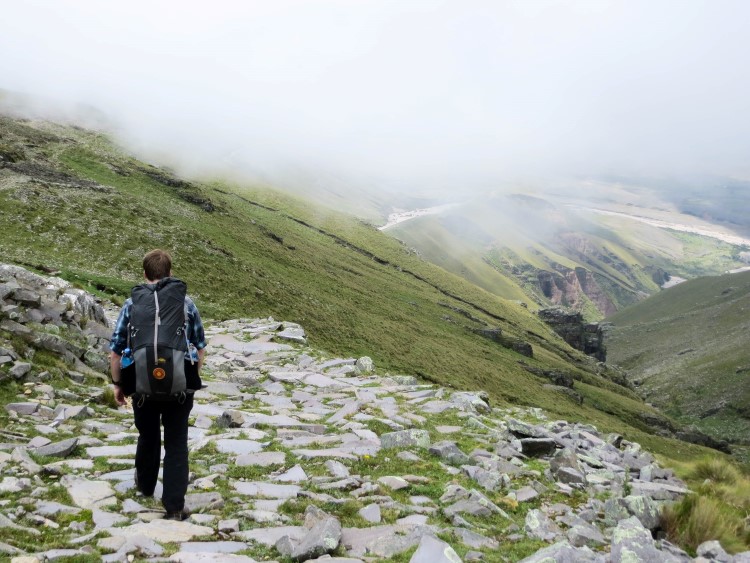
Two great options are the Takesi trek , which begins near the village of Palca and ends at the village of Yanacachi outside of La Paz.
This 40 km trek will take you up and over a mountain and down into the jungle. It usually takes hikers two-three days depending on your speed and acclimatization, and the best part is, it’s completely free to hike and camp.
Another self-guided Inca trail option takes you outside of Tarija and to hiking along the Inca Trail in the Reserva Biológica Cordillera de Sama .
8. Explore the Cerro Rico Mine
Potosi was once the largest and wealthiest cities in the western hemisphere thanks to the Cerro Rico silver mine.
Today, the city’s colonial wealth and splendor has faded a bit, but visiting Potosi’s still-active mine is an exciting way to experience this major part of Bolivia’s history and economy first-hand.
It’s a Bolivian destination that many miss – but those that go, come away with a gritty understanding of the hardships of daily life in this country.
9. Float downriver in the Amazon Jungle
While many think of Brazil when they are considering visiting the Amazon rainforest, eastern Bolivia is also part of the Amazon Basin. The jumping off point for most people wanting to explore this area is Rurrenabaque.
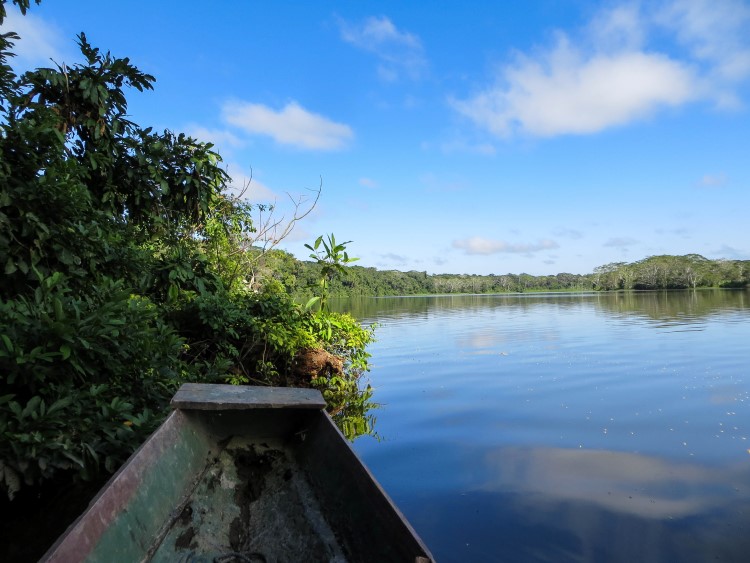
Hop on a tour that will take you on a boat trip down the river to Madidi National Park where you can come face-to-face with wildlife such as pink dolphins, parrots, and even anacondas!
Find out how to visit Madidi National Park or read about a truly off-the-beaten-track adventure: taking a cargo boat from Trinidad deep into the Amazon Jungle .
10. Hike through Bolivia’s “Grand Canyon”
Located in Toro Toro National Park, the Vergel Canyon is a fun day hike. Be sure to check out the horseshoe bridge that allows visitors to actually step out over the canyon to admire the scenery; take a walk if you want to test your fear of heights!
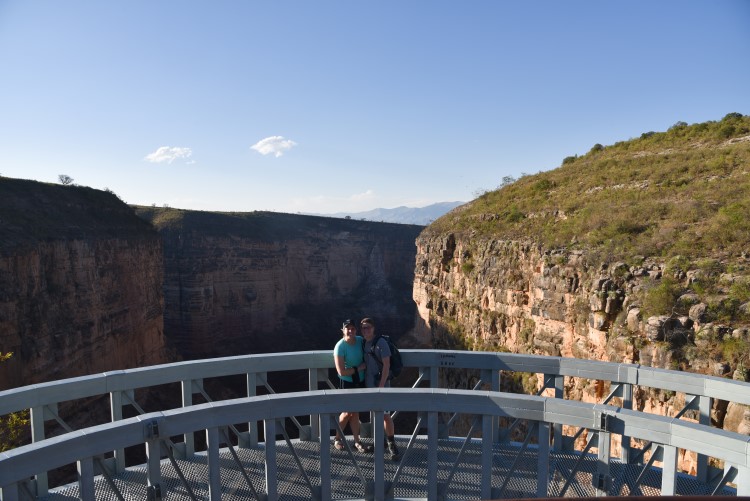
If you visit around dusk you’ll be able to spot flocks of the unique, and endangered, red-fronted macaws that are native to this area of Bolivia.
11. Assist animals in need at La Senda Verde
La Senda Verde is a wildlife rescue facility that fights the trafficking of exotic animals in Bolivia. They rehabilitate monkeys, rare Andean Spectacled bears, macaws, capybaras, caimans, toucans and more!
If you decide to stay on site or eat at their restaurants, the money goes toward maintaining their facilities. You can even volunteer there for a time and really get hands-on with the rehabilitation process!
12. Swim in waterfalls at Amboro National Park
Amboro National Park is located outside of Santa Cruz, and it’s another great way to experience the Bolivian jungle.
Many companies offer multi-day tours of the park, but if you are short on time, you can visit the Jardín de las Delicias area to hike to and swim in three picturesque waterfalls – just some of Bolvia’s beautiful natural places.
13. Take a boat ride on Lake Titicaca
Copacabana is the place to go if you want to visit Lago Titicaca. This lakeside town is a great place to plop down in a hammock and enjoy a sunset or two over the water.
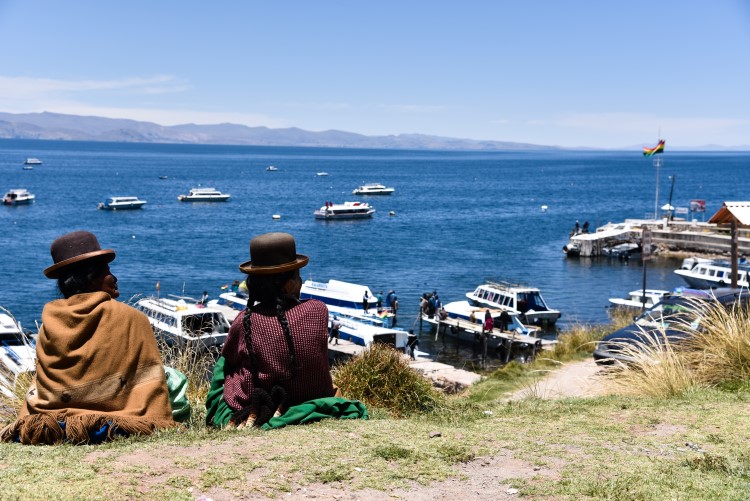
From Copacabana there are plenty of options for actually getting out on the world’s highest navigable lake – from renting a paddle boat to buying a ticket on a ferry to Isla del Sol and Isla de la Luna, both of which house Inca ruins.
Another option is to jump on a boat to nearby floating islands where you can enjoy a delicious meal of trucha (trout).
14. See the world’s largest collection of dinosaur footprints
In the 1990s, a concrete company accidentally stumbled along the site now known as Cal Ork’o – a giant wall housing thousands of fossilized dinosaur footprints!
Thus, Sucre’s Parque Cretacico museum was born. This unique natural monument should definitely be on your list of top things to see while in Bolivia.
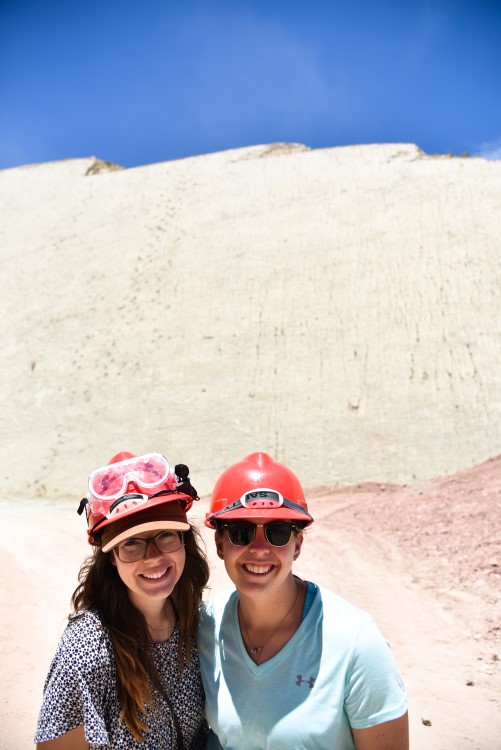
If you are interested in donning a hard hat and walking down for an up-close look at the wall, be sure to visit in time for their tours at 12:00 and 1:00 pm.
15. Explore the Tiwanaku Archaeological Site
The Tiwanaku archaeological site is located about two hours outside of La Paz. This pre-Inca historical site is a great way to learn about Andean culture and history.
You can explore the museums to see recovered artefacts, including some of the famous monoliths, and read up on the history of the site.
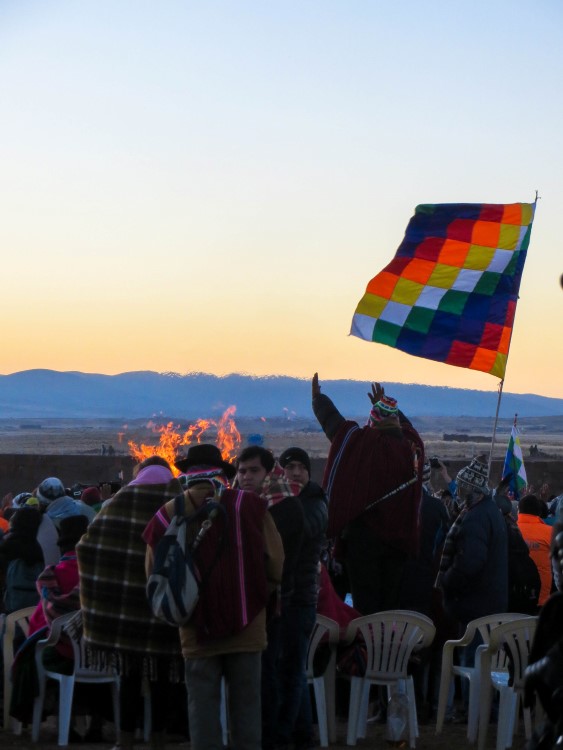
However, the best part of visiting Tiwanaku is actually being able to wander around the excavations and observe the Tiwanakan temples and technology that have been uncovered.
If you’re interested in learning more about the indigenous culture of Bolivia, schedule your trip during the Aymara New Year celebration on June 21 where you can watch the ancient religious festivities that take place at dawn.
16. Sample traditional Bolivian food in Cochabamba
The city of Cochabamba is referred to as the “Gastronomical Capital of Bolivia,” and it is one of the best places to visit in Bolivia if you want to taste traditional Bolivian food!
Be sure to try dishes such as sopa de mani (peanut soup), silpancho (schnitzel-style meat with a fried egg over rice), pique macho (fried potatoes and meat), and chicharron (fried pork).
Also, while you’re in Cochabamba, be sure to check out the Cristo de la Concordia statue and park, which have a great view over the entire city.
17. Rappel down waterfalls in Coroico
Coroico is known by most as the end of the Death Road, but this little town has so much more to offer!
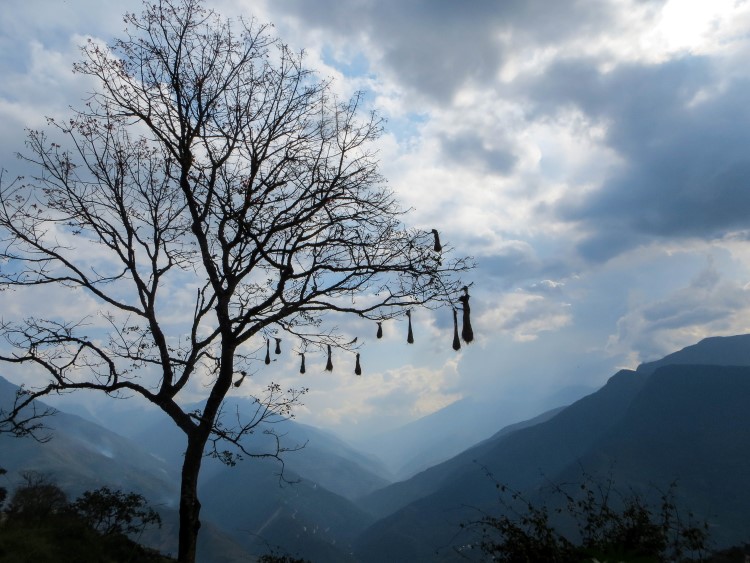
Plenty of adventure activities exist here, but one of the most exciting is to rappel down waterfalls in El Vagante Canyon. The day trip ends at the Rio Negro swimming hole when you can also cross cliff jumping off your bucket list.
While you’re there, don’t miss out in staying in the beautiful, hammock-slung Sol y Luna Ecolodge .
18. Sup some singani
Singani is the national liquor of Bolivia, and it is a sort-of distilled grape brandy. While you can try it in almost all bars and restaurants in Bolivia, to get the real experience you should visit Tarija, the country’s wine region.
There you can relax in the warmer weather and visit several vineyards in the lovely Valle de la Concepción.
If cocktails are more of your thing, try a popular chuflay , made with singani, ginger, and lime.
19. Soar over La Paz in the telefericos
La Paz is such a unique city, but it can be difficult to navigate. A great way to fully experience and see as much of the city as possible without getting hopelessly lost is to ride the network of telefericos (cable cars) all the way from the Zona Sur to El Alto!
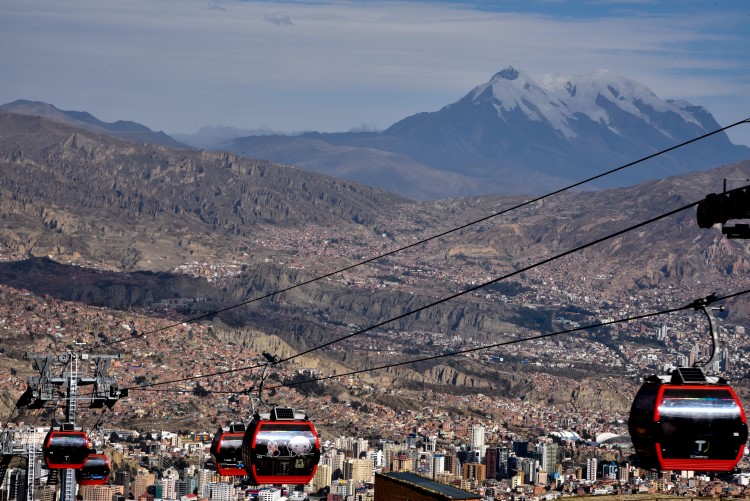
Green, celeste, white, orange, red, blue… and back down again. This calming ride will give you a bird’s eye view of this marvelous city and on a clear day, spectacular views of the surrounding snow-capped mountains as well.
20. Get up-close-and-personal with Bolivian wildlife at Biocentro Güembé
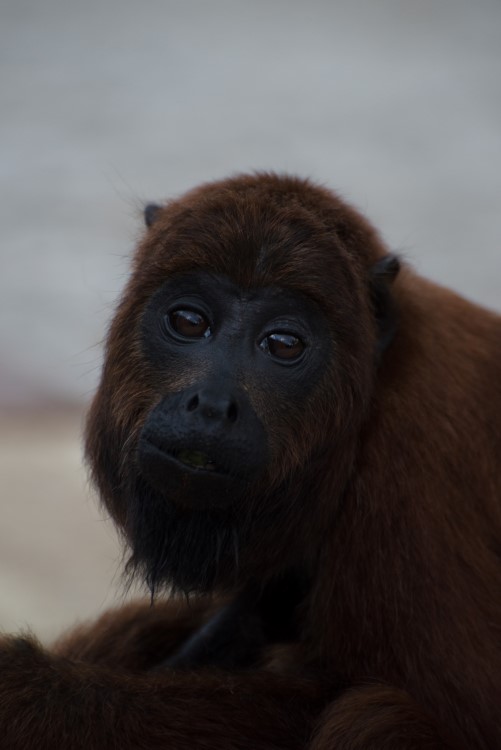
Biocentro G ü emb é is located in Santa Cruz, and it’s an awesome place to visit in Bolivia if you want to see native species and relax by a pool (or ten!).
Güembé is a refuge for rescued animals that are unable to be returned to the wild. In the aviary, macaws, toucans, peacocks, and other exotic birds will literally fly right up beside you.
The mariposario , or butterfly house, is another major highlight. You can also visit monkeys, tapirs, tortoises, and more.
If you’re not much of a nature lover, the recreational side of the park offers beach chairs, volleyball, putt-putt golf, and tons of swimming pools to enjoy.
21. Soak in hot springs near steaming geysers
Visit Sajama National Park to wander through eerie geyser fields and take a dip in some soothing hot springs.
Not only will you enjoy the mineral waters, you’ll also see the highest of Bolivia’s peaks and spot some Andean wildlife along the way such as vicuñas, vizcachas, Darwin’s rheas, and tons of llamas and alpacas (of course).
22. Experience traditional Bolivian dances
Dance is a hugely important part of Bolivian culture. The best way to experience Bolivian dances is during a holiday, where tons of colorfully and ornately costumed dancers will take to the streets for parades and events.
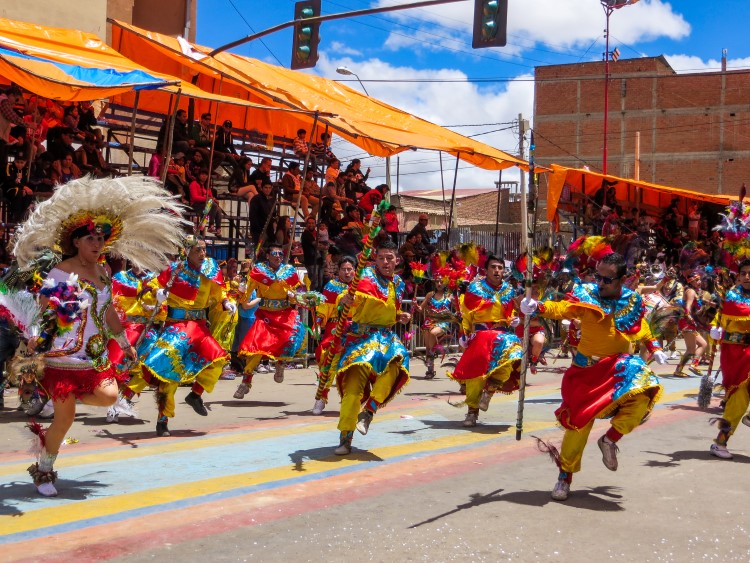
The most famous of these holidays is Carnaval, which takes place in February, and the most famous Carnaval celebration takes place in Oruro.
If the crazy Carnaval scene isn’t your thing, or your travel dates don’t match up with a Bolivian holiday, head to Sucre and catch a show at Espacio Cultural Origines where you’ll be able to see traditional dances such as the Pujllay, Caporales, Tinku, and more.
23. Dine at one of the top 15 restaurants in Latin America
Gustu , a restaurant in La Paz, should definitely be on your list of what to do in Bolivia if you’re a foodie.
By putting a modern flair on traditional Bolivian dishes, this restaurant provides a unique and delicious dining experience (but definitely not a cheap one!).
Try one of their set tasting menus of five or seven courses and prepare to be amazed.
24. Hike through Valle de la Luna
Just outside of La Paz, the suburb of Mallasa is home strange, other-worldly rock formations.
Inside the protected area known as Valle de la Luna or “Moon Valley”, you can hike around and not only experience this unique geological landmark, but also see some stellar views looking back on the city.
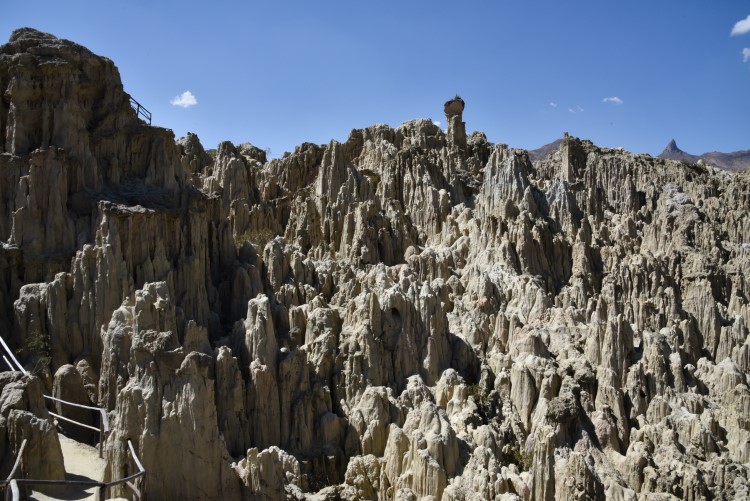
It’s a great (and cheap) way to spend an afternoon. To get there, take a minibus from Plaza Humboldt in the Zona Sur to Mallasa for only 2 BOB ($.3 USD)and ask to get down (“Voy a bajar!”) at the Valle.
25. Visit the White City
One of the most beautiful cities and famous places in Bolivia is the historical capital of Sucre .
This city’s colonial architecture has been well-preserved, and the city’s museums, such as the Casa de la Libertad , where the Bolivian Declaration of Independence was signed, are a must for history lovers.
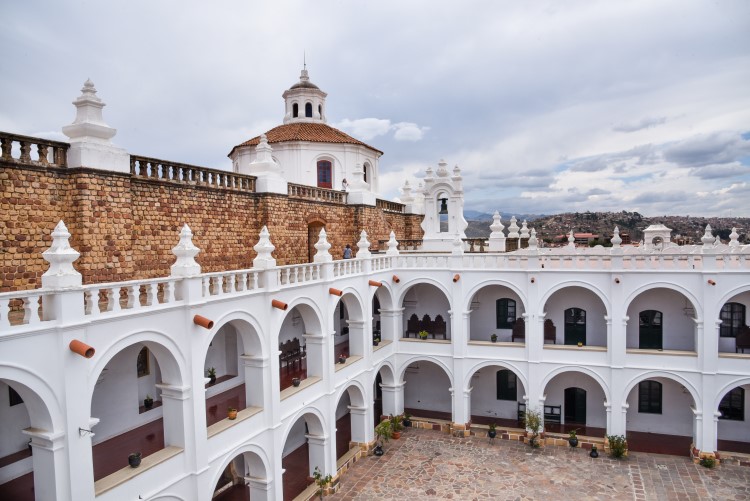
Not only is the city itself lovely, there are plenty of adventure activities to do in the surrounding area as well, including hiking to the spectacular Maragua Crater .
There are so many exciting things to do, interesting things to see, and wonderful things to experience in Bolivia!
These 25 tourist attractions just scratch the surface, but my hope is that this list encourages you to move Bolivia closer to the top of your bucket list and delve deeper into what each of these Bolivian attractions has to offer.
Pin this article for later!
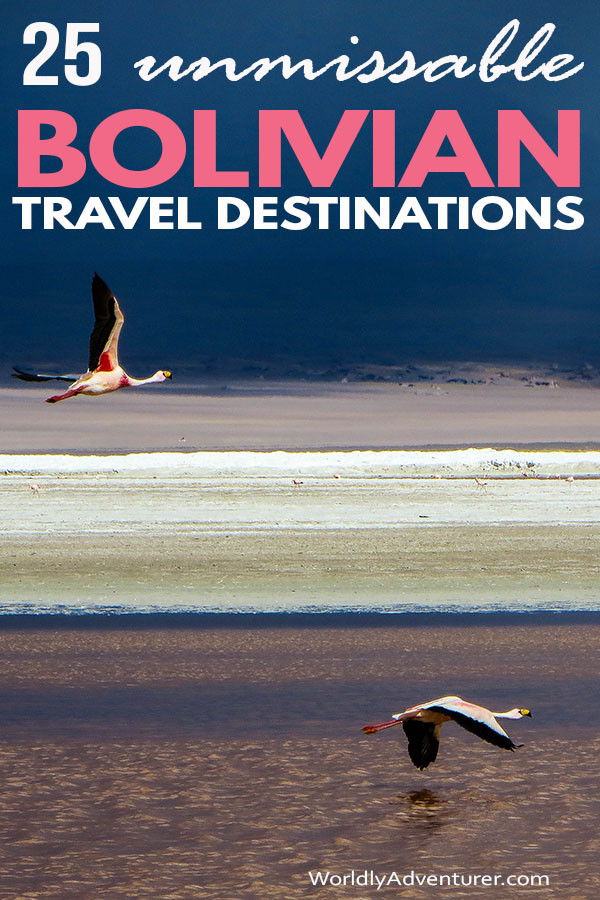
Latitudeadjustmentblog
Wednesday 9th of November 2022
Greta information. Thank you!
Travel Guide Bolivia
Book your individual trip , stress-free with local travel experts
Select Month
- roughguides.com
- South America
- Travel guide
- Itineraries
- Local Experts
- Travel Advice
- Accommodation
Plan your tailor-made trip with a local expert
Book securely with money-back guarantee
Travel stress-free with local assistance and 24/7 support
Stretching from the majestic icebound peaks and bleak high-altitude deserts of the Andes to the exuberant rainforests and vast savannahs of the Amazon basin , Bolivia embraces an astonishing range of landscapes and climates. This mystical terrain boasts scores of breathtaking attractions including stark otherworldly salt pans, ancient Inca trails and towering volcanic peaks. Landlocked at the remote heart of South America, Bolivia rewards the adventurous travellers and encompasses everything that outsiders find most exotic and mysterious about the continent.
Where to go in Bolivia
Travel ideas for bolivia, created by local experts.

4 days / from 1320 USD
Highlights of Bolivia
Bolivia for those on a tight timeline. In just 4 days, you will visit the de facto capital La Paz, a day tour to Lake Titicaca with the beautiful Copacabana town. A short flight to Uyuni will allow you to explore the wonders of salt processing before heading back to La Paz.

16 days / from 5050 USD
Andean Triangle - Chile, Bolivia and Argentina
Start your South American adventure in Santiago de Chile before exploring the wonders of the Atacama desert. A short hop across the border and you'll find yourself in the middle of the Bolivian salt flat. Afterwards, you'll continue to Argentina with Salta and Buenos Aires.

14 days / from 2271 USD
Multi-country adventures from salt flats to the Andes
South America is full of wonders and this trip packs Argentina, Chile and Bolivia into 2 weeks. Bustling Buenos Aires, beautiful valleys around Salta, the surreal looking surroundings of San Pedro de Atacama, the salt flat of Uyuni as well as Lake Titicaca are all part of this itinerary.

7 days / from 2550 USD
Natural and cultural wonders of Bolivia
One of only two landlocked countries in South America, Bolivia is full of wonders. Within a week, you will visit Lake Titicaca, the de facto capital La Paz, the actual capital Sucre as well as the fascinating Salar de Uyuni.

11 days / from 2980 USD
Machu Picchu, Titicaca & Uyuni
The highlights of every Peru and Bolivia trip: the fascinating ruins of Machu Picchu and the Sacred Valley, followed by a trip to Lake Titicaca, the highest navigable lake in the world. Afterwards, continue via La Paz to the Salar de Uyuni, the incredible salt flats.

10 days / from 2287 USD
Wonders of Peru and Bolivia
Start your trip by exploring Lima before heading out to Cusco, the Sacred Valley and Machu Picchu. Spend a few days exploring these wonders before heading off to Lake Titicaca. Just a short hop across the border lies Bolivia with the de facto capital La Paz, ready to be explored.
The country’s cultural diversity and ethnic make-up are equally fascinating. Three centuries of colonial rule have left their mark on the nation’s language, religion and architecture, but this is essentially little more than a veneer overlying indigenous cultural traditions that stretch back long before the arrival of the Spanish. Though superficially embracing the Catholic religion, many Bolivians are equally at home making offerings to the mountain gods or performing other strange rites, such as blessing vehicles with libations of alcohol. And although Spanish is the language of government and business, the streets buzz with the cadences of Aymara, Quechua and more than thirty other indigenous languages .
Geographically, Bolivia is dominated by the Andes, which march through the west in two parallel chains, each studded with snowcapped peaks ; between them stretch the barren, windswept expanses of the Altiplano . Reached via a series of lush valleys, the country’s lowlands range from dense Amazonian rainforest to vast plains of dry thornbrush and scrub. The geographical extremes are fascinating to explore, but can take their toll on travellers. This varied topography supports an extraordinary diversity of flora and fauna from condors to pink freshwater dolphins– Parque Nacional Amboró, for example, has over 830 species of bird, more than the US and Canada combined. The country’s underdevelopment has in some ways been a blessing for the environment, allowing vast wilderness areas to survive in a near-pristine condition.
Though it covers an area the size of France and Spain combined, Bolivia is home to just under ten million people, who are concentrated in a handful of cities founded by the Spanish . Some of these, such as Potosí and Sucre, were once amongst the most important settlements in the Americas, but are now half-forgotten backwaters, basking in the memory of past glories and graced by some of the continent’s finest colonial architecture. Others, like La Paz and Santa Cruz, have grown enormously, and are now bustling commercial centres .
Despite these attractions, Bolivia remains one of South America’s least-visited countries. Some blame Queen Victoria, who after a diplomatic incident is said to have crossed the name from a map and declared that “Bolivia does not exist”. Among those who have heard a little about Bolivia, meanwhile, it has a reputation for cocaine trafficking and political instability . These clichéd images have some basis in reality, though the 2006 election of Evo Morales has reduced the instability to a certain extent, and Bolivia remains one of the continent’s safest countries for travellers. And for those who make it here, the fact that Bolivia – one of the continent’s least expensive countries – is still not yet on the major tourist routes means you’re unlikely to find yourself sharing the experience with hordes of other foreign visitors.
Most visitors spend a few days in the fascinating city of La Paz, Bolivia’s de facto capital (Sucre is its official capital), which combines a dramatic high-altitude setting with a compelling blend of traditional indigenous and modern urban cultures. La Paz is also close to magical Lago Titicaca, the massive azure lake that straddles the Peruvian border, and is a good base for trekking, climbing or mountain biking in the magnificent Cordillera Real.
Just north of La Paz the Andes plunge precipitously down into the Amazon basin through the deep, lush valleys of the Yungas. The Yungas towns of Coroico and Chulumani are perfect places to relax, while Coroico also makes a good place to break the overland journey from La Paz to the Bolivian Amazon. The best base for visiting the Amazon is the town of Rurrenabaque, close to the near-pristine rainforests of Parque Nacional Madidi and the wildlife-rich Río Yacuma. More adventurous travellers can head east across the wild savannahs of the Llanos de Moxos via the Reserva de la Bíosfera del Beni to the regional capital Trinidad, the start of exciting trips north along the Río Mamoré towards Brazil or south towards Cochabamba.
South of La Paz, the bleak southern Altiplano – stretching between the eastern and western chains of the Andes – is home to some of Bolivia’s foremost attractions. The dour mining city of Oruro springs to life during its Carnaval, one of South America’s most enjoyable fiestas, and the legendary silver mining city of Potosí offers a treasure-trove of colonial architecture and the opportunity to visit the Cerro Rico mines.
Further south, Uyuni is the jumping-off point for expeditions into the astonishing landscapes of the Salar de Uyuni and the Reserva de Fauna Andina Eduardo Avaroa, a remote region of high-altitude deserts and half-frozen, mineral-stained lakes, populated by flamingos. Further south lie the cactus-strewn badlands and canyons around Tupiza and the isolated but welcoming city of Tarija.
To the north of Potosí, Bolivia’s official capital, Sucre, boasts fine colonial architecture, but the city is very different in character: charming and refined, it is set in a warm Andean valley in the midst of a region noted for its textiles. Further north, the city of Cochabamba has less obvious appeal, but offers a spring-like climate and a friendly welcome. Not far from here are the rainforests and coca fields of the Chapare region, but for most travellers Cochabamba is just somewhere to break the journey between La Paz and Santa Cruz, the country’s eastern capital. Completely different in character to the highland cities, Santa Cruz is a brash, modern and lively tropical metropolis. Though it has few attractions itself, the city is a good base for exploring the Eastern Lowlands, including the rainforests of Parque Nacional Amboró and the idyllic town of Samaipata. Scattered across the lowlands east of Santa Cruz, the immaculately restored Jesuit missions of Chiquitos provide one of Bolivia’s most unusual attractions, while a train line heads east to the Brazilian border and the wildlife-rich wetlands of the Pantanal. Santa Cruz is also the jumping-off point for trips to the remote and spectacular Parque Nacional Noel Kempff Mercado.
Top image © Loredana Habermann/Shutterstock
Coca: Sacred leaf of the Andes
Nothing is more emblematic of Bolivia than coca , the controversial leaf that has been cultivated for thousands of years in the Andean foothills. To ordinary Bolivians, coca is at once a useful stimulant to combat hunger and tiredness, a medicine for altitude sickness and a key religious and cultural sacrament with magical powers used in rituals and offerings. To the outside world, however, it is infamous as the raw material for the manufacture of cocaine (as well as, reputedly, still a key ingredient of Coca-Cola).
Thousands of farmers depend on coca for their livelihoods, and President Evo Morales – who remains head of the biggest coca-growing union – has repeatedly stressed that the leaf is an intrinsic part of indigenous Andean culture. Although Morales has promised a policy of “zero cocaine but not zero coca”, Bolivia remains the world’s third-largest producer of the drug, and cocaine use within the country has risen dramatically in recent years. In 2011 the country renounced a UN anti-drug convention because it classified the coca leaf as an illegal drug.
Discover more places in Bolivia

- The Amazon Travel Guide
- The southern Altiplano Travel Guide
• They look similar at a glance but alpacas have shorter legs, necks and snouts than llamas, and also have a fluffier fleece.
• Named after Simón Bolívar, Bolivia won its independence in 1825, after nearly three centuries as a Spanish colony.
• In 2001 the highest football match in the world was played on the top of the 6542m Sajama volcano.
• A bridge stretching from Potosí to Spain could reputedly have been built with the silver extracted from the Cerro Rico mines during the colonial period.
• Since independence, Bolivia has lost almost half its territory, including its Pacific coast, which was captured by Chile in 1879.Despite being landlocked, the country still has a navy.
Travel advice for Bolivia
From travel safety to visa requirements, discover the best tips for traveling to Bolivia
- Eating and drinking in Bolivia
- Getting around Bolivia: Transportation Tips
- Travel Health Bolivia
- Crime and personal safety tips Bolivia
- Culture and Etiquette in Bolivia
- National Parks in Bolivia
- Sports and Outdoor activities in Bolivia
- Travel Tips Bolivia for planning and on the go
- Best time to visit Bolivia
- How to get to Bolivia
The Rough Guides to Bolivia and related travel guides
In-depth, easy-to-use travel guides filled with expert advice.

Find even more inspiration here

Planning your own trip? Prepare for your trip
Use Rough Guides' trusted partners for great rates
written by Rough Guides Editors
updated 26.04.2021
Ready to travel and discover Bolivia?
Get support from our local experts for stress-free planning & worry-free travels.
- Where to stay
- Travel advice
- South America
- 20 Must Visit Attractions In...
Must-Visit Attractions in Bolivia

This largely undiscovered country is just starting to gain international recognition as a must-visit tourist destination – and for good reason. Bolivia has plenty in store for the curious traveler. Marvel at the surreal landscapes of the Salar de Uyuni , conquer some of the most beautiful mountains on Earth, fish for piranha deep in the Amazon rainforest or pave your own way through a land whose indigenous inhabitants still cling to the fascinating traditions of a bygone era.
Did you know – Culture Trip now does bookable, small-group trips? Pick from authentic, immersive Epic Trips , compact and action-packed Mini Trips and sparkling, expansive Sailing Trips .

Very few people come to Bolivia without spending at least a day or two in the world’s highest (administrative) capital. Besides having a myriad of things to see and do , it serves as the perfect jumping off point for other attractions in the country.
The gastronomic center of Bolivia, Cochabamba is famous for serving huge portions of the country’s finest cuisine. It also happens to have a perfect year-round climate, a thriving cultural scene and plenty of stunning nature reserves right on its doorstep.
Bolivia’s economic powerhouse tends to be largely overlooked by travelers. While this rapidly expanding city doesn’t have many tourist attractions itself, venture a few hours beyond its borders and you’ll find captivating sand dunes, rainforests, rivers and waterfalls. You might even see a sloth casually hanging out in one of its central plazas.

Upon visiting Tarija, not far from the border with Argentina, many might wonder if they are still in Bolivia. This laid back, Mediterranean-style town features whitewashed colonial architecture, a thriving wine industry and a noticeable Argentine cultural influence.
Apart from being an alternative starting point for the Salar de Uyuni tour, Tupiza is also a terrific spot to spend a couple of days. Its surrounding badlands feature impressive canyons, rivers and valleys, which are perfect for exploring on a guided horseback tour. Reminiscent of the wild west, these are the lands where Butch Cassidy met his fateful end.

Become a Culture Tripper!
Sign up to our newsletter to save up to $1,656 on our unique trips..
See privacy policy .
The former economic center of the Spanish empire, Potosi used to be one of the biggest cities in the world due to its silver-rich Cerro Rico (Rich Mountain). These days, a visit to Potosi provides a fascinating insight into Spanish Colonialism and mining history. Many travelers join a guided tour to gain firsthand experience of the horrendous working conditions in the country’s most notorious mine.

Bolivia’s official capital and colonial centerpiece manages to charm even the most weary traveler. Its delightful array of whitewashed churches, government buildings, parks and monasteries entices many a visitor to stay longer than originally intended. It’s also the best place to learn Spanish in South America, with numerous high-quality yet inexpensive language schools to choose from.

Oruro hosts one of the continent’s best carnival parades. Tens of thousands of intricately-dressed dancers strut their stuff down Oruro’s main streets to the infectious rhythm of exuberant marching bands. It’s a loud, outrageous and refreshingly unpretentious alternative to Rio de Janeiro’s carnival.
La Cordillera Real

Meaning the ‘Royal Range’ in English, this spectacular Andean mountain range earned its name for one simple reason – it’s truly majestic. Every year, hordes of climbers come from all over the world to conquer the snowy peaks of this wondrous region.

Just two hour’s drive from La Paz, Coroico’s relaxed way of life feels worlds away from the big city. Spend a day or two just kicking back and enjoying the stupendous views or exploring nearby rivers and waterfalls. There’s also some fantastic trekking in the region, including the famous three-day El Choro hike.

Most travelers come to Sorata for its trekking, climbing and downhill mountain biking. But if you’re just looking to chill out for a bit, then Sorata’s the perfect place. This gorgeous little town enjoys a slow pace of life and impressive views of snowy mountains and lush forest valleys.
Lake Titicaca

As one of the most historically significant places in the Andes, a trip to Lake Titicaca is a must. Grab a delicious plate of fresh trout on Copacabana’s lake shore before jumping on a ferry to the sacred Isla del Sol (Sun Island) . A three-hour hike across the island passes numerous Inca ruins and takes in some spectacular lakeside views. Locals believe the Sun and the Moon were born here and, for many visitors, it’s not hard to see why.
Madidi National Park

This wondrous National Park is internationally renowned for its incredible diversity. Over 1,200 species of bird call Madidi home (14 per cent of the world’s known bird species) as well as countless other mammals, reptiles and insects. Jungle treks, eco-lodges and animal safaris create the perfect opportunity to observe nature at its rawest.
Salar de Uyuni

Bolivia’s number one tourist attraction never fails to amaze. Salar de Uyuni, the world’s largest and highest salt flat, is conveniently surrounded by a throng of other natural wonders, including colorful lagoons, towering volcanoes, bubbling hot springs and steamy geysers. An absolute must while traveling through Bolivia.
Toro Toro National Park
Toro Toro National Park has an impressive collection of well-preserved dinosaur footprints, some of which are mindbogglingly huge. If that doesn’t excite you, there’s also hikes through impressive canyons, bizarre animal-shaped rock formations and a fun caving experience.
Sajama National Park

If you really want to get away from it all, then Sajama is the place to go. This isolated National Park features a climbable dormant volcano, reflective lagoons, more llamas than you can poke a stick at, the world’s highest forest and some temperate hot springs to relax in after a long day exploring.
Amboro National Park
This nature lover’s paradise is just a short drive away from the metropolis of Santa Cruz. The park offers plenty of superb hiking trails which take in cascading waterfalls, scenic viewpoints and an incredible variety of flora and fauna.
This pleasant little town nestled in a lush valley is a favorite of retired expats and international tourists alike. It boasts a temperate climate, close proximity to Amboro National Park, an ancient pre-Colombian fortress and a fantastic waterfall and swimming hole.
As one of the most important pre-Colombian sites in the Americas, a visit to Tiwanaku is a must for any history buff. Set under the majestic Cordillera Real mountain range, Tiwinaku features an impressive number of beautifully crafted sculptures, gigantic stone building blocks and the mysterious, megalithic stone arch known as El Puerta del Sol (The Gate of the Sun). Take the time to peruse the onsite museum to learn more about this fascinating ancient culture.
Rurrenabaque

Rurrenabaque is a humid little jungle town on the edge of Madidi National Park. Scores of adventurers brave the arduous 18-hour bus ride (or opt for a 45-minute flight) from La Paz to visit this renowned Amazonian eco-tourism hub. A three-day pampas tour utilizes dugout canoes to provide a floating wildlife safari that is arguably the best in South America.
Culture Trips launched in 2011 with a simple yet passionate mission: to inspire people to go beyond their boundaries and experience what makes a place, its people and its culture special and meaningful. We are proud that, for more than a decade, millions like you have trusted our award-winning recommendations by people who deeply understand what makes places and communities so special.
Our immersive trips , led by Local Insiders, are once-in-a-lifetime experiences and an invitation to travel the world with like-minded explorers. Our Travel Experts are on hand to help you make perfect memories. All our Trips are suitable for both solo travelers, couples and friends who want to explore the world together.
All our travel guides are curated by the Culture Trip team working in tandem with local experts. From unique experiences to essential tips on how to make the most of your future travels, we’ve got you covered.

Guides & Tips
Stay curious: experience bolivia from your living room.

See & Do
Climbing around la paz, bolivia: the best mountains to summit.

Food & Drink
8 traditional bolivian breakfasts you must try.

These Are Bolivia's Most Beautiful Hikes

How Bolivians Celebrate Christmas

7 Ways to Have a Truly Immersive Experience in Bolivia

Places to Stay
The best hotels to book in bolivia for every traveler.

Takesi and El Choro: The Best Multi-Day Treks Near La Paz, Bolivia

This Art Project Empowers Victims of Domestic Violence

Everything You Need to Know About Visiting Isla del Sol, Bolivia

Snacks You Must Try in Bolivia

How These Bolivian Ranches Are Helping to Conserve Endangered Jaguars
Culture trip spring sale, save up to $1,656 on our unique small-group trips limited spots..

- Post ID: 1052319
- Sponsored? No
- View Payload

- 12 Unmissable Tourist Attractions In Bolivia
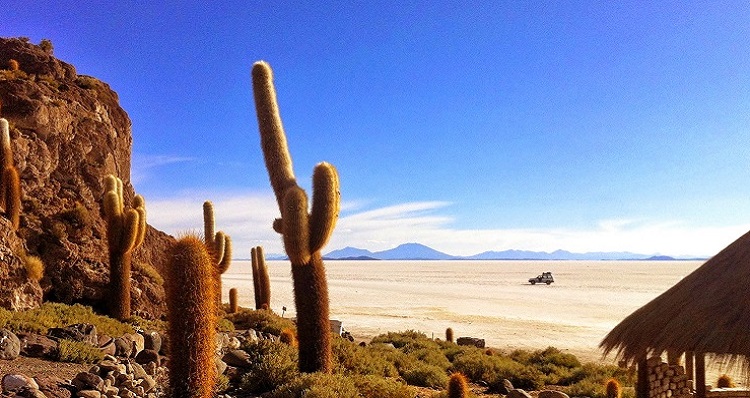
One of the most secluded and underrated travel destinations in the world, Bolivia is a country like no other.
Offering up surreal landscapes, unique cultures, fun-filled festivals, vibrant cities, bustling markets and adrenaline pumping activities, it’s not a question of what to see and do in Bolivia. Rather, it’s a question of knowing which sights and experiences simply cannot be missed.
Here we have selected 12 of the most popular tourist attractions in Bolivia:
Bolivia travel tips Bolivia has a variety of tourist attractions for all types of travelers, make sure to plan ahead of time! Many travelers continue their journey to Peru. Make sure to check out Bolivia Hop , considered the best way to travel between Bolivia and Peru. Nearly everyone visits Bolivia for the Salt Flats. Check out the official Salar de Uyuni website for all the information you’ll need.
Lake Titicaca
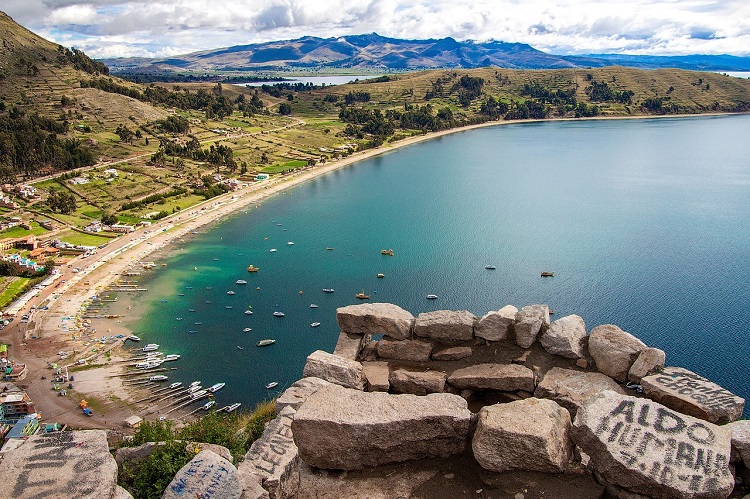
Lapping the shores of Copacabana , Lake Titicaca is not only one of Bolivia’s most beautiful and treasured landmarks, but is also the highest navigable lake in the world .
Travelers flock to the resort town to soak in stunning views of Lake Titicaca, savor freshly caught trucha and explore what the Inca’s believed to be the birthplace of their empire.
One of the best ways to grasp the sheer magnitude of Lake Titicaca is to take a boat trip from Copacabana to Isla del Sol . Here you will discover ancient Inca ruins scattered throughout the island as well as Aymara villagers busy farming the land and tending to the sacred sites. Walking from one side of the island to the other is a cathartic experience and one which will enable travelers to witness some of Bolivia’s most breathtaking scenery.
Copacabana itself is a quaint little town to explore, with many shops, restaurants and bars lining the main streets. And if it’s amazing views your after, there is no better place than the summit of the “Stations of the Cross” walk to observe Lake Titicaca in all its glimmering glory.
One of the best ways to enjoy Lake Titicaca is with a fully immersive tour . There are 2-hour tours, full days, and homestay tours where you get to spend the night with local families. Check out findlocaltrips.com to see all the best options available!
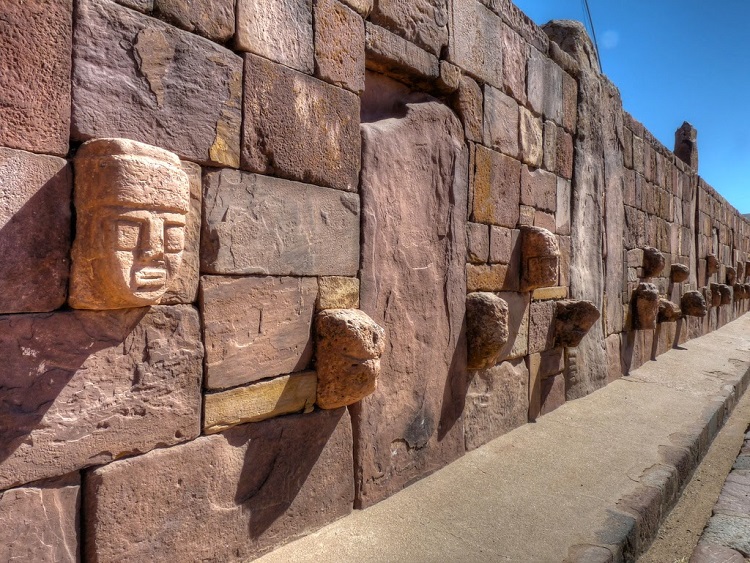
Photo Credit: Juan Manuel Rodriguez
Listed as a World Heritage Site in 2000 by UNESCO, Tiwanaku is a Pre-Columbian archaeological site in western Bolivia, named after what is believed to have been one of the most important civilizations prior to the Inca Empire. It is also one of the oldest and highest urban cities ever built.
Today, Tiwanaku remains an enigma, shrouded in mysteries of how, when, and by whom it was constructed. Ruins are made up of impressive architectural structures with many of Tiwanaku’s stone creations defying explanation, posing more questions to archaeologists than answers.
Located about 72 km (44 miles) west of La Paz, visiting Tiwanakau is a must for anyone fascinated by ancient civilizations and mind boggling architecture.
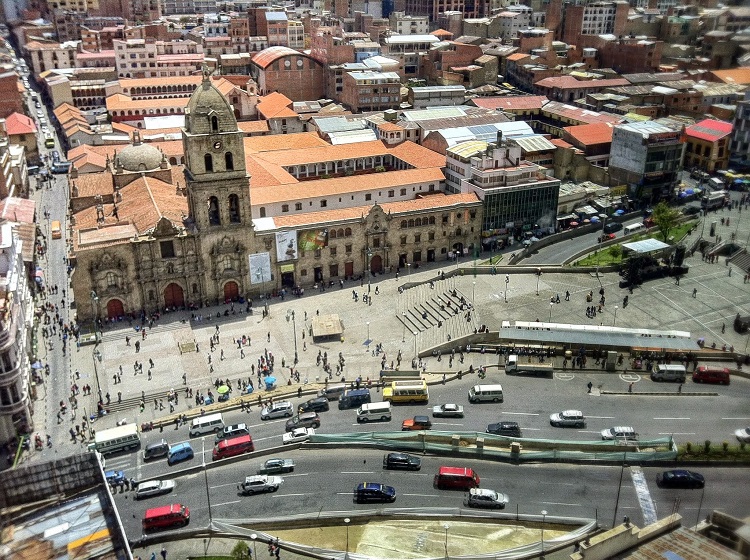
Set against a striking backdrop of snow-capped mountains is Bolivia’s third most populous city and the world’s highest seat of government.
Juxtaposed with the colorful lifestyle and traditions of the Aymara people, La Paz is full of modern cafes, clubs, bars and restaurants as well as traditional markets, historic plazas and colonial architecture. There are numerous sights to discover, free events to join, and adrenaline pumping activities to experience.
At a height of 4058 meters above sea level, La Paz is best explored at a slow pace , taking the time to soak up the city’s rich culture and fascinating history.
From our experience (and from other travelers as well), Bolivia Hop has been the best way to get to and from La Paz . They’re a unique hop-on, hop-off bus system provides a more flexible, comfortable and not to mention fun, way of getting you from A to B. Learn more about the service and how it works here !
Yungas Road
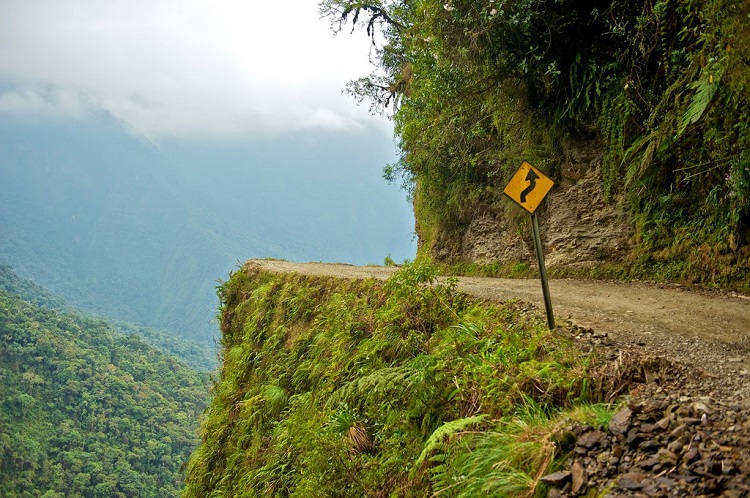
Photo Credit: Jonas Witt
One of the most popular activities in Bolivia is the exhilarating and death-defying bike ride along one of the world’s most dangerous roads.
Surrounded by mountainous terrain and terrifying precipices, the winding road grimly known as ‘Death Road’ due to its notoriously high death rate, stretches 69kms from La Paz to Coroico, connecting the Amazonian rain-forest to the busy city.
In 2009, construction of an alternative road replacing the dangerous stretch was completed with all traffic being diverted to the new road. Thankfully motorists can now travel from La Paz to Coroico without fearing the journey may be their last.
Even with these improved conditions, Yungas Road shows no mercy. Nowadays, the death toll is limited to local workers and daredevil backpackers still using the infamous road. It is believed that more than 30 cyclists have lost their lives on Bolivia’s “Death Road” since 1998.
Best Death Road Tour Company: View FindLocalTrips here for more info on the best bike companies
Madidi National Park
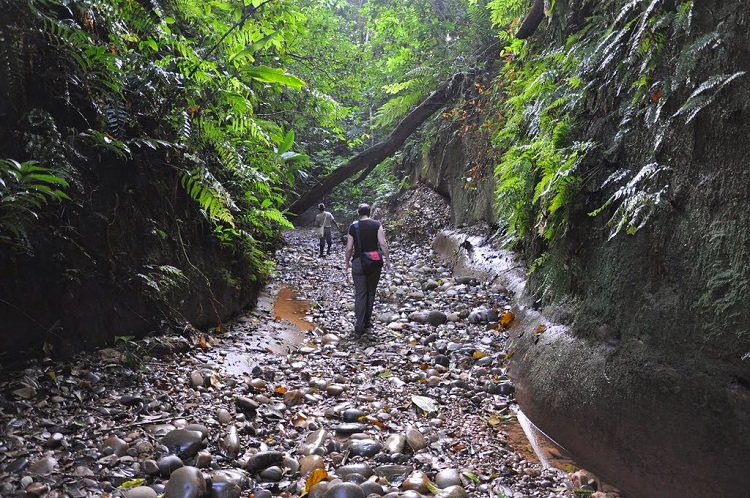
Photo Credit: Joe Lazarus
Spanning 7000 square miles from the Andes deep into the Amazon, Madidi National Park is one of the most bio-diverse places on the planet.
Traveling by boat from Rurrenbaque across the Beni river, tourists stepping foot onto the jungle’s muddy floors will delight in the multitude of flora and fauna on offer. Traversing the rugged terrain, you will come across winding rivers, rolling grasslands, mosquito laden lakes, steep slopes and possibly the seldom seen indigenous people of the tropical rain forest.
The best way to experience Madidi National Park is through one of the many ecological and cultural tours providing an authentic and safe jungle experience. Whether it’s spotting a jaguar, smelling the scent of a rare type of flower, learning about the different medicinal plants, or listening out for the chirps of more than 1000 species of bird, this national park has something to offer every nature lover.
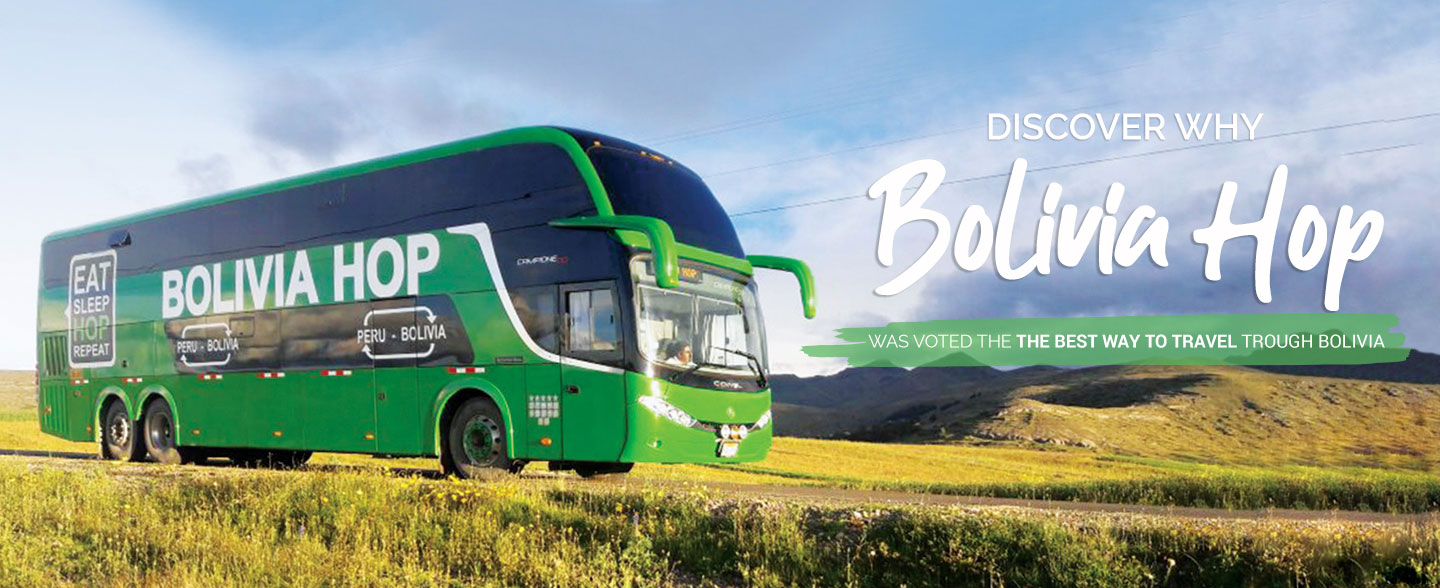
The Chiquitania Region
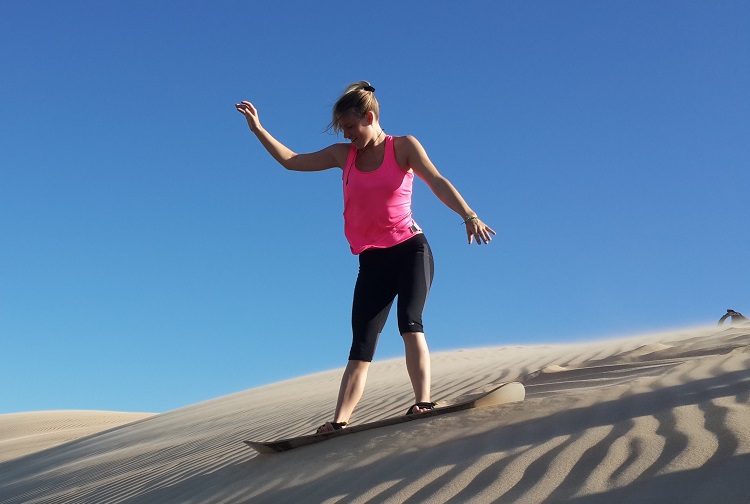
Veering slightly off Bolivia’s backpacker trail is the Chiquitania Region, a stunning yet rarely visited area teeming with exciting and unspoiled attractions.
Differentiating itself from other parts of the country, the Chiquitania Region shines for its tropical savanna climate, Jesuit Missions, fascinating wildlife and unique natural history. With sights such as the mysterious rock formations of the the Santiago de Chiquitos Mirador and the hot thermal springs of Aguas Calientes as well as activities such as jaguar watching at Kaa Iya National Park and sandboarding in Lomas de Arena , it’s difficult to understand why the area is so delightfully devoid of tourists.
One of Bolivia’s most beautiful attractions, the Chiquitania Region is a must see for anyone fond of history, nature and the great outdoors.
Oruro Carnaval
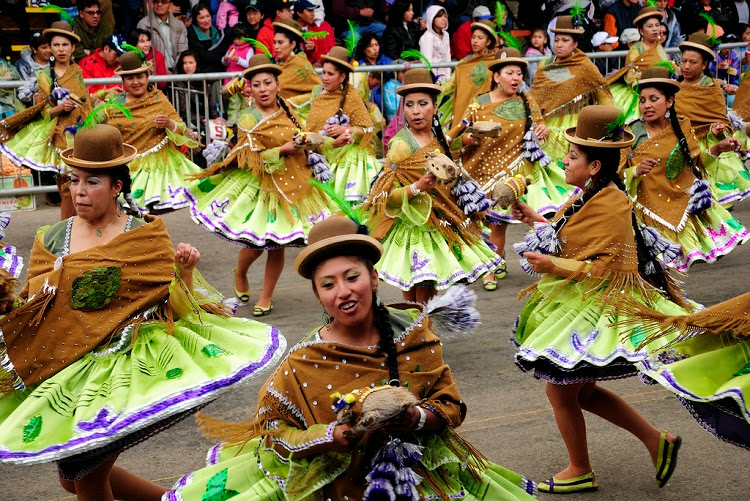
Photo Credit: Wakusrgh
Situated at dizzying heights in the arid Altiplano region of Bolivia is a mining town home to one of the most famous festivals in all of South America.
Each year on the Saturday before Ash Wednesday, the usually sleepy Oruro comes alive, hosting the world renowned Carnival. The unique festival features spectacular folk dances, extravagant costumes, beautiful crafts, lively music, and up to 20 hours of continuous partying.
A party like no other, Oruro Carnival is Bolivia’s most sought after tourist attraction, drawing crowds of up to 400,000 people annually. Whilst the festival is celebrated throughout most of the country, Oruro is without doubt the most popular, offering a memorable experience for all those involved.
If you’re lucky enough to be in Bolivia at this time of year, Oruro Carnival is one fiesta not to be missed!

Bolivia’s fifth largest and most beautiful city, Sucre is the ideal place for travelers to recharge their batteries, study Spanish and immerse themselves in the local culture.
Founded by the Spanish in the 16th century, Sucre has been designated as a UNESCO world heritage site to protect its many pristine and historically significant buildings. Largely untouched by tourism, the youthful city is a goldmine of unexplored treasures and cultural activity. It’s also one of the cheapest and safest cities in South America, making it a desirable place to travel to.
With its numerous fascinating sights, free events, and cool places to go out, Sucre truly is an amazing place to visit and live.
Cerro Rico Potosi
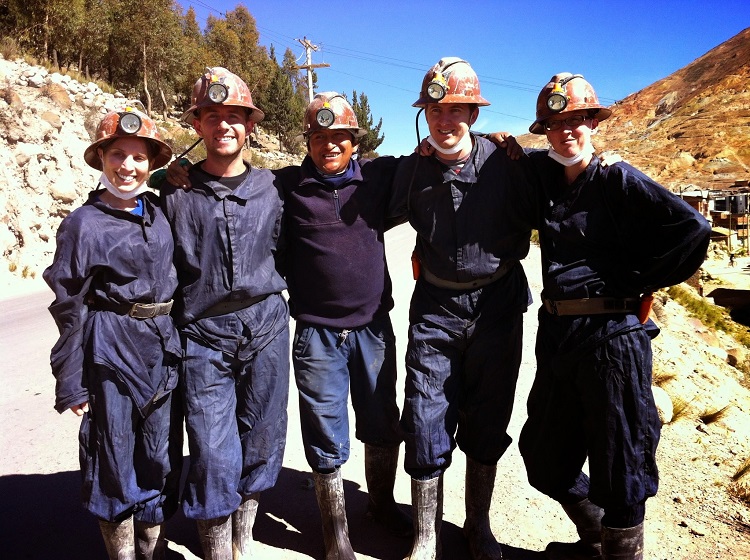
Looming over the highest city in the world is a red, dusty mountain, notorious for claiming the lives of Bolivia’s hard working men and children.
Cerro Rico, rich in natural resources, once produced so much silver it pushed Potosi onto the world stage, becoming the wealthiest city in the Americas. Due to lack of infrastructure and inadequate safety equipment, millions of workers lost their lives extracting silver from the mountain’s veins, making it one of the most dangerous jobs in the world.
Despite the past abundance of precious metals, Potosi is now one of the poorest cities in South America. Many of Bolivia’s men have no choice but to work the unstable, mineral-depleted mines in order to scrape together enough money to feed their families.
Today, tourists can witness the perilous state of Cerro Rico first hand, taking guided tours through the mountain’s narrow and claustrophobic tunnels. Here they’ll learn that difficulty breathing, lack of food, and unbearably long hours are just a few of the conditions miners have to endure on a daily basis.
Travelers who manage to finish the tour of Cerro Rico will emerge from the mines thanking their lucky stars that this is not their reality.
Salar de Uyuni
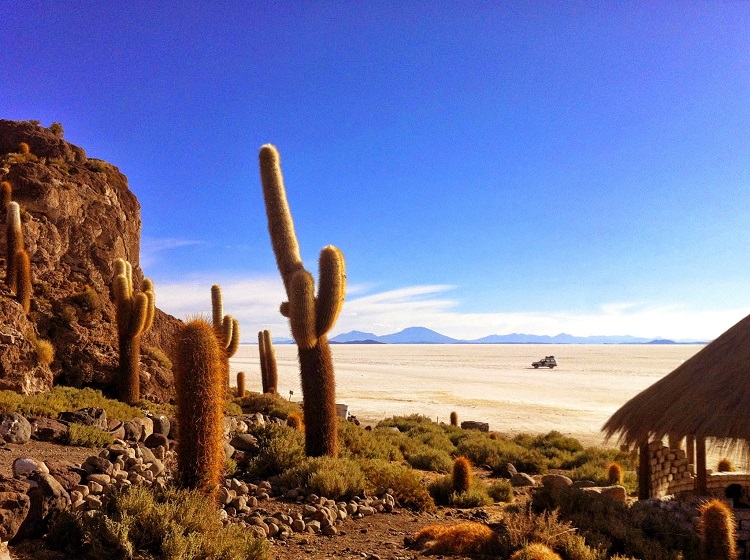
If you’re planning a trip to Bolivia, chances are you’ll want to experience the world’s largest salt flat; Salar de Uyuni.
Once an inland ocean covering most of the Altiplano and reaching all the way to Lake Titicaca, the endless white desert is now home to some of the most unique and breathtaking scenery on earth.
Those visiting will notice that Salar de Uyuni’s landscapes change quicker than a shake of salt. One hour you’re surrounded by flamingos on a high altitude lagoon, and the next you’re standing on an island covered in cacti. When it rains, the water sitting on top of the cemented salts reflects the sky above, turning Salar de Uyuni into the world’s largest mirror. Travelers with an observant eye will encounter various wildlife during their trip including llamas, flamingos and even vizcachas (a squirrel / rabbit like animal often referred to as “scrabbit”).
With nothing in sight for miles, taking “perspective pics” on the 4000 square-mile flats has become a popular pastime for tourists and photographers. During the trip, travelers also have the opportunity to sleep on beds made from salt and soak in natural hot springs under Bolivia’s moonlit sky.
There are 2 different ways to visit the salt flats: with a full day tour or a 3 day tour. Check out this full day option and this 3 day option which we believe are with the best tour operator.
Finding the words to accurately describe Salar de Uyuni is no easy task. It’s a truly unique and awe-inspiring part of the world, one which must be seen to be believed.
If you’re looking for a more detailed guide of all the things Salar de Uyuni, check out the official information website to get all the info needed!
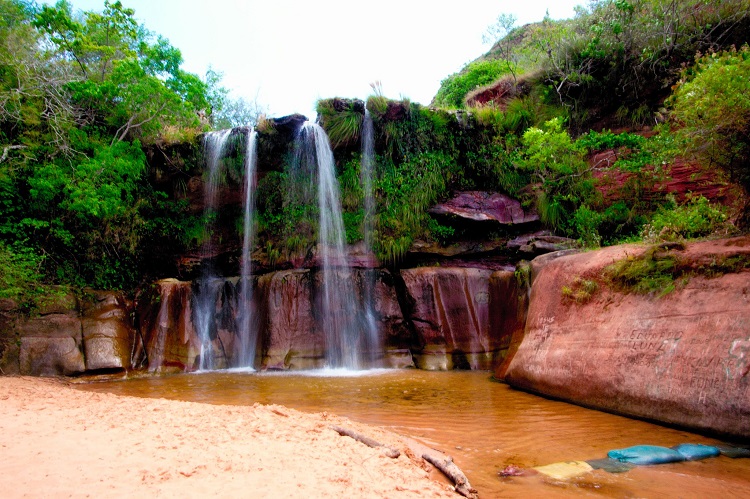
Photo Credit: Alma Apatrida
Veering slightly off Bolivia’s tourist trail is an enchanting town located in the foothills of Santa Cruz .
Quechua for “Rest in the Highlands”, Samaipata is not only a unique tourist destination but a popular weekend retreat for Bolivia’s wealthier residents. Featuring stunning landscapes, stylish hangouts, ancient history and peaceful nature walks, the town is a relaxing hideaway for those looking to kick off their boots and enjoy the tranquil surrounds.
Samaipata’s main attraction is the World Heritage, pre-Inca archaeological site of El Fuerte, home to the largest carved stone in the world. The town is also the gateway to Bolivia’s natural treasure, Parque Nacional Amboró . The well preserved nature reserve boasts over 912 species of birds and over 177 mammalian species including the puma and the rare spectacled bear.
Often referred to as “The Little Switzerland of Bolivia”, Samaipata is the ideal place to stop and unwind before moving onto Bolivia’s more bustling locations.
Tarija Wine Region
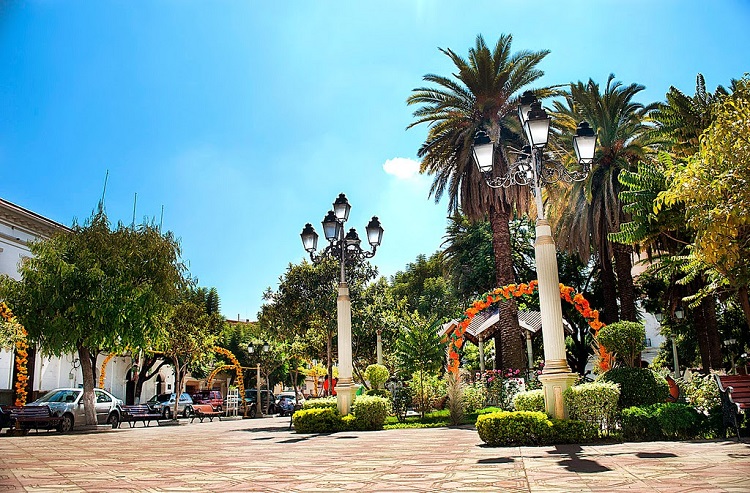
Photo Credit: Juan Alvaro
Chasing the tails of Chile and Argentina’s well-established vineyards, is a small Bolivian town producing some of South America’s finest wines
Growing most of their grapes at an elevation of around 1800 meters (6000 feet), Tarija is officially the highest wine producer in the world. Located in the south of the Bolivia, the scenic area enjoys a Mediterranean climate making it the ideal location for wine production. Due to the unique mix of high altitude and warm weather, Tarija’s winemakers claim to be able to age grape juice at a faster rate, enabling them to produce a two year old wine with similar qualities to a six year old wine.
Though wine tasting tours in Tarija are not a refined experience, wine aficionados and budding sommeliers will enjoy sampling the variety of fruity reds and floral whites on offer, as well as the local specialty – singani. And for those looking to tickle their taste-buds with food rather than alcohol, Tarija boasts a variety of culinary treats including grilled bife de chorizo and local favorite, dulce de lacayote (caramelized squash).
One of the fastest growing cities in Bolivia, Tarija itself is a great place to spend time, exploring the contemporary art galleries, bustling markets and youthful bars.
If you happen to be passing through Bolivia’s highlands and wish to indulge in a glass of wine or two, Tarija is a destination well worth visiting.
What Bolivian tourist attraction would you add to the list? Share in the comments below:
Submit a Comment Cancel reply
Your email address will not be published. Required fields are marked *
YOU MAY LIKE
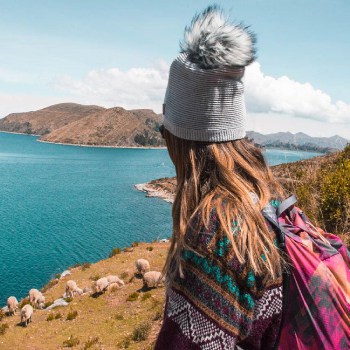
Discover The Real Bolivia

Popular Posts
- A Guide To Bolivia’s Most Mouthwatering Foods
- Weather and Climate in Bolivia
- 10 Bolivian Fun Facts That Will Blow Your Mind
- Carnival in Oruro (Carnaval de Oruro)
Get ready to discover
BOLIVIA in 2021
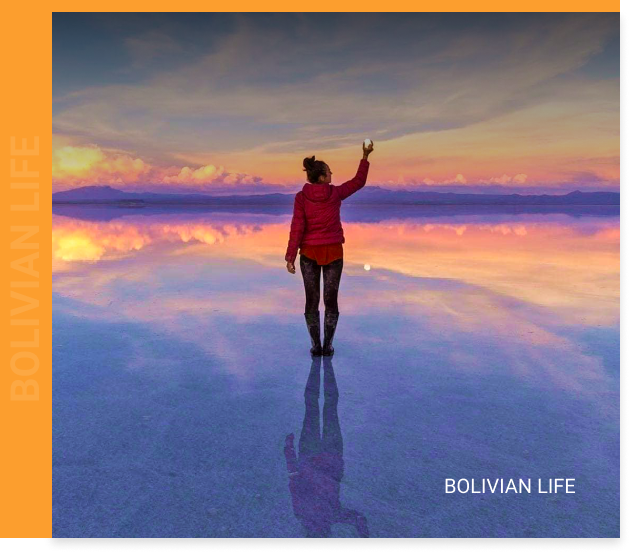
Sign up to stay up to date with all tips and recommendations for 2021 travel

15 Tourist Attractions in Bolivia Worth Visiting
Author: Caroline
Always wanted to go to Bolivia, but not entirely sure where to start? Browse through the various attractions Bolivia has to offer and start planning your dream itinerary!
The variety and sheer number of places to see in Bolivia is absolutely staggering. From the arid salt flats in Uyuni , the lush Amazon rainforest filled with beautiful wildlife or the far lesser-known chaotic carnival celebrations in Oruro , even the most avid traveler is sure to find his kicks.
This guide combines the must-see tourist attractions in Bolivia, with a few places that are well and truly off the main tourist track to ensure you get to see the very best this wonderful country has to offer.
Please note: This post contains affiliate links, meaning I may earn a commission if you make a purchase by clicking a link (at no extra cost to you). Learn more .
15 Tourist attractions in Bolivia
There are so many beautiful places in Bolivia to visit, picking just 15 was a bit of a herculean task. To keep things easy to read the attractions have been split into various groups starting with the most popular and ending with the so-called “hidden gems”.
Further reading: Is Bolivia worth visiting?
Main Attractions in Bolivia

1. SALAR DE UYUNI
READ | How & when to see the mirror effect on the Salar Why visit: The biggest tourist attraction in Bolivia is hands-down the Salt Flats of Uyuni or Salar . It is not hard to see why! Located in the southwestern part of Bolivia, the vast expanse of the Salar stretches out over 8,000 km (4,970 mi). At a staggering altitude of 3,656 meters (11,995 feet high) it will quite literally take your breath away. Be mindful of potential altitude sickness.
When to go: We went in Dec-March to for the reflections
How to visit: You can opt to rent a car in Uyuni (4×4) and explore the Salt Flats without a tour. However, the Salar is one of the most beautiful places to see in Bolivia and really merits splurging to take a tour with a knowledgeable guide to learn all about the legends of the Salar, find the many colorful lagoons and have help creating awesome videos/pictures involving dinosaurs or pringle jars.
Top-rated tours : If you are short on time opt for the top-rated one-day tour (incl. lunch), make sure to ask them to include watching the sunset in the Salar. Alternatively, take the 3-day tour which includes 2 nights and 3 days exploring the Salar and the surrounding mirror lagoons with flamingoes.
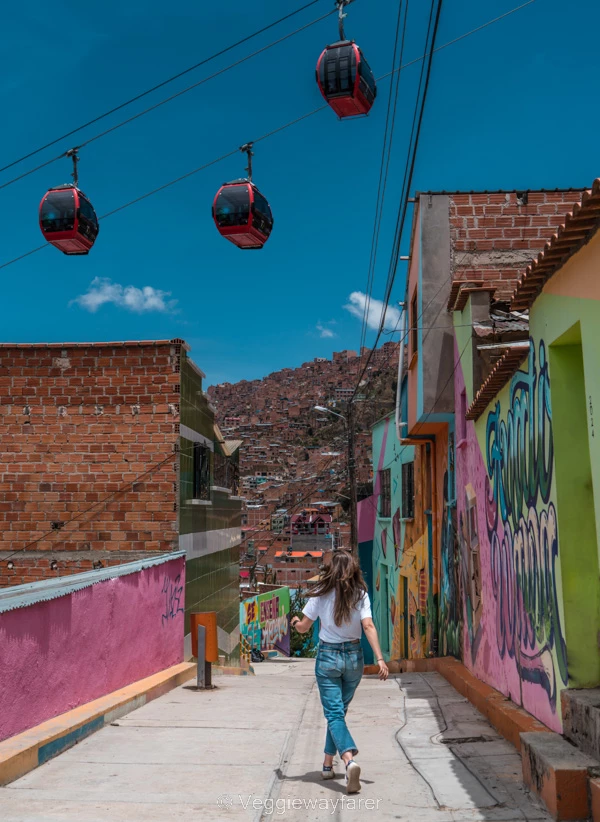
READ | 13 Unmissable things to do in La Paz Why visit: Exploring the vibrant capital city La Paz should be a non-negotiable when traveling to Bolivia. Get a birdseye over the city from the cable cars, take in the street art around the Chualluma neighborhood and try eating the famous Salteña without making a mess! There is always the option for a private tour of the city to learn about its history and – more important – where to get the best food. When to visit: La Paz can be visited year-round though personally, I loved visiting around Carnival as the city really comes alive with festivities. One of the top things to see in Bolivia is Safety tip: It is noteworthy to mention that La Paz is one of the tourist spots in Bolivia which can get a bit hairy at nighttime. Be mindful of your valuables and double-check with your accommodation which areas of the city are best to avoid at night.

Why visit: Sucre is known as the white city, the reason for which becomes clear within minutes of reaching the whitewashed city center. This beautiful colonial architecture is best viewed from the Recoleta Monastery, or by strolling down the historical center. Visiting the Mercado Central and the Mercado de la Ciudad are none of the unmissable things to do in Bolivia if like me you love people-watching!
When to visit: March to October (dry season)
Additional information: Sucre might one of the most famous landmarks in Bolivia, but it has a very compelling additional reason to visit: Cal Orck’o , 5 kilometers from Sucre. The park has the world’s largest collection of Dinosaur footprints!
Bolivian Cuisine: Oddly enough, the highest-rated cooking class in all of Bolivia can be found right here in Sucre. Learn how to traditional Bolivian cuisine with accompanying cocktails. Delish!

4. MADIDI NATIONAL PARK
Why visit: The Madidi National Park located in the Amazon Rainforest is the best place to see wildlife when visiting Bolivia. Book an eco-tour, taking you into the heart of the rainforest via the Rio Beni, take a jungle trek with a local guide and spend the night in a local indigenous community where you can learn about their way of life. Though it might not be one of the most popular places in Bolivia to visit, it was an absolute highlight for me personally. Experiencing the wild rainforest through the eyes of locals, spotting monkeys while trekking and seeing the effects of eco-tourism first-hand, how it is helping entire communities to sustain their way of life, are much-cherished memories. When to visit: Ideally from April to October (dry season) although we visited in February which, aside from a lot of mosquitos, was perfectly fine!
Additional information: Tours to visit the Madidi National Park all start from the town of Rurrenabaque which is serviced by 3 flights a week from La Paz. Book your 2 or 3-day eco-tour directly in Rurrenabaque, no need to book in advance. Make sure you bring a lot of mosquito repellent and lightweight clothing that covers your arms and legs as the mosquitos are no joke here.

5. DEATH ROAD
Why visit: Get a little out of your comfort zone and embrace your inner daredevil by taking on one of La Paz’s most exciting experiences. It could be described as either exhilarating, terrifying or a whole lot of fun, but there’s no doubt that biking the Death Road (aka Camino de la Muerte) is one of the top tourist attractions in Bolivia.
Starting atop the Andes Mountains and descending 1200m down to the Yungas Valley on the edge of the Amazon rainforest, this 60 km (37 mi) ride not only gets the adrenaline pumping but it lets you take in incredible views of really diverse landscapes too. When to visit: April to October Can anyone partake? Whilst the road did earn its reputation, these days it’s luckily a lot safer with only the odd local driver and other cyclists using the road. It is one of the more physical activities to do in Bolivia, therefore an average fitness level and familiarity with riding a bike are required.
Before you book a tour: Starting from approximately US$120, tours can be arranged from La Paz and should include transport to and from the road, along with all the gear required. Just be sure to choose a reputable provider that has excellent safety reviews – as reliable, effective brakes and good suspension will be essential!
Additional popular attractions in Bolivia

6. AMAZON BASIN (PAMPAS)
Why visit: The Amazon Basin or “Pampas” was a true highlight of my Bolivia trip thanks to the large variety of wildlife we spotted. It is known to have capybaras, monkeys, caimans, sloths, river turtles, pink dolphins and tons of exotic birds.
When to visit: If your aim is to see the pink dolphins then make sure to visit outside of the rainy season. The rains make the river swell causing the dolphins to retreat deeper into the Amazon Basin making them harder to spot.
How to see the Pampas: Visiting the Pampas entails taking a tour from Rurrenabaque as it is one of the tourist places in Bolivia that is harder to access. From Rurrenabaque a 3-hour bumpy ride taking you past hundreds of grazing capybara, a handful of sloths and finally to the Santa Rosa Protected Park where the Pampas start. All tours of the wetlands are conducted on the water in small boats. Good to know : The boats are not covered. This mean be it blistering sun or pouring rain, you are open to the elements. Bring enough sunscreen, lightweight clothing and (if applicable) rain gear. If you are traveling with expensive camera gear, make sure to foresee protection against the rain (if needed).
Which tour do I take: The most common tour is the 3-days, 2 nights package which costs around US$190. This includes overnight stays in an ecolodge, meals, and transport. The park fee is usually not included in tours (US$22) and needs to be paid in cash at the entrance.

7. VALLEY OF THE CONDOR S
Why visit: The Valley of the Condors is a mountainous hiking area located just south of the Bolivian city of Tarija, one of the best places in Bolivia for world travelers . Set near the Argentine border, this hiking area is home to plenty of wildlife and natural spaces, offering fabulous views of mountaintops for miles. As the name suggests, the Andean condor is often seen soaring around the valley.
Andean condors are the world’s largest flying birds by both weight and wingspan. With wingspans reaching reach up to 10’10” or about 3.3 meters! These scavengers live among the rough cliff in the Andean mountains, feeding mostly on the cattle and deer that roam the area.
How to hike: Because the landscape is unforgiving and difficult to navigate, it’s strongly recommended that visitors join a tour if they’d like to see the condors in their natural habitat. Valle de los condores is a family-run tour company that offers 1-4 day tours through the mountains with experienced local guides.
The tour begins at a mountain farm, where you’ll enjoy a delicious dinner, wine, and friendly company. Then, you’ll hike into the mountains for the duration of your tour, utilizing the gear that the tour company has stashed away in the various campsites along the route. You’ll want to be reasonably fit for this experience, as the route can be steep at times.

8. COPACABANA & LAKE TITICACA
Why visit: Copacabana is a hippie town-turned-city nestled on the shores of the famous Lake Titicaca. There is a multitude of things to do in Copacabana itself: Watching the Blessing of the Automobiles , stopping by the local mercado and hiking up Cerro Calvario. However, this tiny bolthole is most often used as a starting point to explore the Lake
How to visit Lake Titicaca: Unless you are taking a day tour from La Paz to Lake Titicaca you will need to stop in Copacabana to book a tour. Make a stop on the Isla del Sol and hike between Challapampa in the north to Yumani in the south. This 3-hour hike gives you the very best views over the island and takes you around the mythical Inca Ruins. Be aware that along the hike there are various points where a small local tax has to be paid (5 Bs) to support the local economy.
Things to keep in mind : Copacabana is located at 3,810 m (12,500 feet). If you do want to visit the town and/or hike around the islands on the Lake it is wise to plan an acclimatization day or scout around for some coca leaves to help combat altitude sickness.

9. BOLIVIAN INCA TRAIL
Why visit: The Inca Trail in Peru is widely known and very, very popular. However, Peru is not the only country through which the 30,000 km Inca road system runs. It traverses Argentina , Chile , Colombia, Ecuador, Peru and Bolivia. The Bolivian portion of the trail is one of the more unknown landmarks in Bolivia and as such a great easy hike, without hordes of tourists. When to go: April to October (dry season)
How to hike: Base yourself out of Sucre if you are looking to do this hike! The hike leaves from the nearby village of Chataquila and ends in Chaunaca. The cobblestoned path offers majestic views over the soaring Andes peaks, while you walk an easy 4,3 km (2,7 mi) downhill.
Read before you go: Practical guide to the Bolvian Inca Trail

10. LAGUNA COLORADA
Why visit: A striking red lake surrounded by the snow-capped peaks of the Andes, a bevy of flamingos foraging for food in the shallow water while a herd of fluffy vicuñas grazes nearby. Exploring Laguna Colorada , located within Eduardo Avaroa Andean Fauna National Reserve in southwestern Bolivia, almost feels like being on a different planet.
When to go: Although most guides say to visit during dry season (April-November) we visited the Salar de Uyuni in February and loved it as this is the time to see the mirror effect.
How to get to Laguna Colorada: Laguna Colorada is one of the most remote places to go in Bolivia and as such requires a tour to get to. The easiest way to visit this incredibly remote location is by booking a three-day Salar de Uyuni tour departing from either Uyuni or Tupiza. You’ll also get to see natural volcanic hot springs and the impressive turquoise Laguna Verde along the way, as well as the rest of the stunning landscapes of this desolate but beautiful region.
Lesser-known PLACES TO SEE IN BOLIVIA

11. TIWANAKU
Why visit: The site was once the capital of the Tiwanaku culture, a pre-Incan culture which flourished from around 300 BC to 1150 AD. Inside visitors can marvel at the Akapana Pyramid, the Sunken Temple and a number of intricate stone carvings and sculptures. Tiwanaku is considered one of the most important pre-Columbian archaeological sites in South America.
When to go: Explore Tiwanaku when you are in La Paz, which can be visited yearlong.
How to explore Tiwanaku: The closest city to Tiwanaku is La Paz as such most travelers choose to take a day tour from La Paz to Tiwanaku . The ruins are reachable via public transportation from the La Paz Central Bus Terminal (one-way ticket 50 Bs).
Practical information: Opening hours: 09.00 am to 04.00 pm; Entrance fee 100 Bs
Short on time? There is an option to combine Tiwanaku with Lake Titicaca in a one-day tour from La Paz. If you itinerary is jam-packed this 12-hour tour might be worth looking into.

12. CARNIVAL IN ORURO
Why visit: Oruro is one of the best places to visit in Bolivia to partake in Carnival. This UNESCO World Heritage Festival is an interesting mixture of Andean rituals interlaced with Catholic traditions. The highlight of the Oruro Carnival is the day-long folkloric parade. Over 50 groups of dancers and musicians (roughly 70.000 people) decked out in opulent costumes depicting devils and other mythical characters dance their way through the streets of Oruro.
When to go: During Carnival – The parade takes place on the last Saturday before Lent.
Read before you go: Guide to attending the Carnival of Oruro .

13. EDUARDO AVAROA NATIONAL RESERVE
Why visit: The Eduardo Avaroa Andean Fauna National Reserve is located in southwestern Bolivia. Home to some of the country’s most spectacular volcanoes, hot springs, geysers and colorful lakes (including the aforementioned Laguna Colorada). Take a dip in the tiny hot spring pools at Geysers Sol de Manana, snap a shot at the stone tree, or catch your breath while walking through the Valley of Rocks, watched over by the 5000-meter-high Volcano Tunupa in the background.
When to go: Many Bolivia travel guides will tell you to go between April and November, however, I highly recommend going in February to see the mirror effect on the Salar of Uyuni.
How to explore Eduardo Avaroa National Reserve: Due to its remoteness this popular tourist attraction in Bolivia is best visited as part of a three-day Salar de Uyuni tour departing from either Uyuni or Tupiza. If you are coming from Chile, consider booking a tour from Atacama to Uyuni

Why visit: The city of Potosí is a designated UNESCO world heritage site thanks to its beautifully preserved colonial architecture and the historical importance of Cerro de Potosi , to this day the richest deposit of silver in the world. Potosí is one of the best places to visit in Bolivia to learn about the country’s mining industry and the devastating effect it had on the indigenous population.
When to go: The warmest months are November, December and January
Additional info: The city is located at 4,090m (13,418ft) above sea level. Make sure to pack enough warm clothes as average temperatures in summer are 15°C (59°F) while in winter temperatures drop to -2°C (28°F).
How to visit the mines: The mines can only be visited as part of a half-day tour as they are currently still actively being mined. Tours start at US$35 and last 3,5 hours.

15. SANTA CRUZ
Why visit: The largest international airport in Bolivia is located in Santa Cruz (Viru Viru Internation Airport, VVI) as such many travelers transit through the city on their way in/out of the country. The city is an interesting mix of colonial architecture, highrise commercial buildings and lush vegetation resulting from its proximity to the Amazon Rainforest.
When to go: Santa Cruz has a tropical climate avoid the stifling heat and humidity from November to March and aim to visit anywhere between May to November.
How to explore Santa Cruz: We only had one evening in Santa Cruz unfortunately but would love to come back to walk around the historical center or take a sloth and wildlife tour as we read there is a ton of wildlife that can be spotted right in the city center itself!
Map of places to see in Bolivia
Have a look at the interactive Google Map to get an idea of where the various highlights of Bolivia are located.

How to get around the Bolivia tourist attractions
Traveling around the various famous places in Bolivia is a piece of cake thanks to the very well-developed network of public transportation.
Inside the cities , a seemingly endless supply of public transportation is available: radio taxis (white cars with an official taxi sign); Puma Katari (only in La Paz); micros (multi-colored busses) and trufis (shared taxis with fixed routes).
Traveling between cities will entail taking an overnight bus. Before you panic, buses in Bolivia are super comfortable and relatively safe.
- Which ticket should I book : Book a “cama” : These seats recline 180° are spacious and have a nice comfy footrest. Check schedules and buy tickets online via Busbud or head to the station directly
- Is there food: Cama-ticketholders will be served a meal – Vegetarian alternatives exist but need to be requested in advance at the ticket counter in the bus terminal.
- Safety: Do not pop your valuables in the luggage which goes into the luggage hold. Keep them on you at all times
- Terminal tax: Upon departing from a bus terminal, each traveler will be requested to pay a small fee on board (usually a few Bolivianos). This needs to be paid in cash.

Plan your trip to the various attractions in Bolivia
Can i pay with a credit card everywhere.
Inside the big cities credit cards are widely accepted. That being said, I had a lot of issues with my Mastercard as it did not seem to work. Fellow travelers using a Visa card had no issues. Outside of the cities cash is still very much king. The maximum amount of money you can take out of an ATM at any given time is 3000 Bs.
Yellow Fever Vaccine for Bolivia
Before entering the country, travelers are required to show proof they have been vaccinated for Yellow Fever.
How long should I spend in Bolivia
There are a ton of beautiful places in Bolivia, spread out across a large area. I would consider spending at least 10 days to ensure you can see the highlights: Salar de Uyuni (3-days), La Paz (one day), Amazon Rainforest (3 days) and Sucre (1 day). Make sure to factor in enough time to acclimatize to the altitude as well as travel time between the various places. Internal flights are generally speaking a lot more expensive than intercity buses, the latter being considerably more time-consuming.
What do I pack for a trip to Bolivia
That depends on which exciting places in Bolivia you will be visiting. As a rule of thumb pack mosquito repellent and lightweight clothing for the jungle (avoid black if possible as this attracts the mosquitos); warm clothing, sturdy shoes, sunscreen and sunglasses for the Salar de Uyuni; light jacket and comfortable walking shoes for the cities.

To conclude on what to see in Bolivia
I truly hope this guide has provided you with a comprehensive overview of what to do in Bolivia. The country has an immense natural and cultural wealth, which somehow has remained blissfully off the tourist radar, resulting in wonderfully authentic encounters with locals, folkloric markets and overall great value/money experiences. The plethora of activities in Bolivia on offer will have you scrambling to extend your trip. We spent only 8 days, which was nowhere near enough time. Time permitting spend at least two weeks in Bolivia! Make sure your vaccines are up to date, pack a pair of sturdy hiking boots and some warm clothes, and whatever you do, don’t forget to bring mosquito repellent if you are planning on heading into the Amazon Rainforest.
MORE TRAVEL RESOURCES FOR VISITING SOUTH AMERICA
Bolivia: Is Bolivia worth visiting? Bolivia: Complete guide to Oruro Carnival Bolivia: Complete guide to Salar de Uyuni in rainy season Bolivia: Practical guide to Chualluma La Paz Bolivia: 13 Things to do in La Paz – A local’s guide to the capital of Bolivia South America: 10 Vibrant Carnivals in Latin America Argentina: Everything you need to know before planning a trip to Argentina Argentina: Things to know before planning a trip to Patagonia Chile: Three day Easter Island Itinerary

Tourist attractions in Bolivia: Pin it

RELATED POSTS
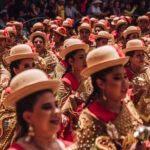
Caroline Muller is an award-winning travel blogger. She writes and photographs full-time while oscillating between Sicily and Brussels as a home base. She has documented over 60 countries across six continents and does not plan to stop any time soon. A staunch vegetarian for over 25 years, she loves exploring local cuisine in search of that perfect (plant-based) mouthful. With this blog, she hopes to help you travel slower, more sustainably and a hella lot more meaningfully. Pack your bags!
Submit a Comment Cancel reply
Your email address will not be published. Required fields are marked *
Save my name, email, and website in this browser for the next time I comment.
Submit Comment

Thanks for dropping in! My name is Caroline , and I am a full-time writer & photographer. With this blog, I hope to harness the power of travel to do good in the world. Think connecting with local cultures, sustainable tourism , and in-depth guides to known and lesser-known adventures. Adventure awaits!

Looking for something?
Must-see attractions in Bolivia
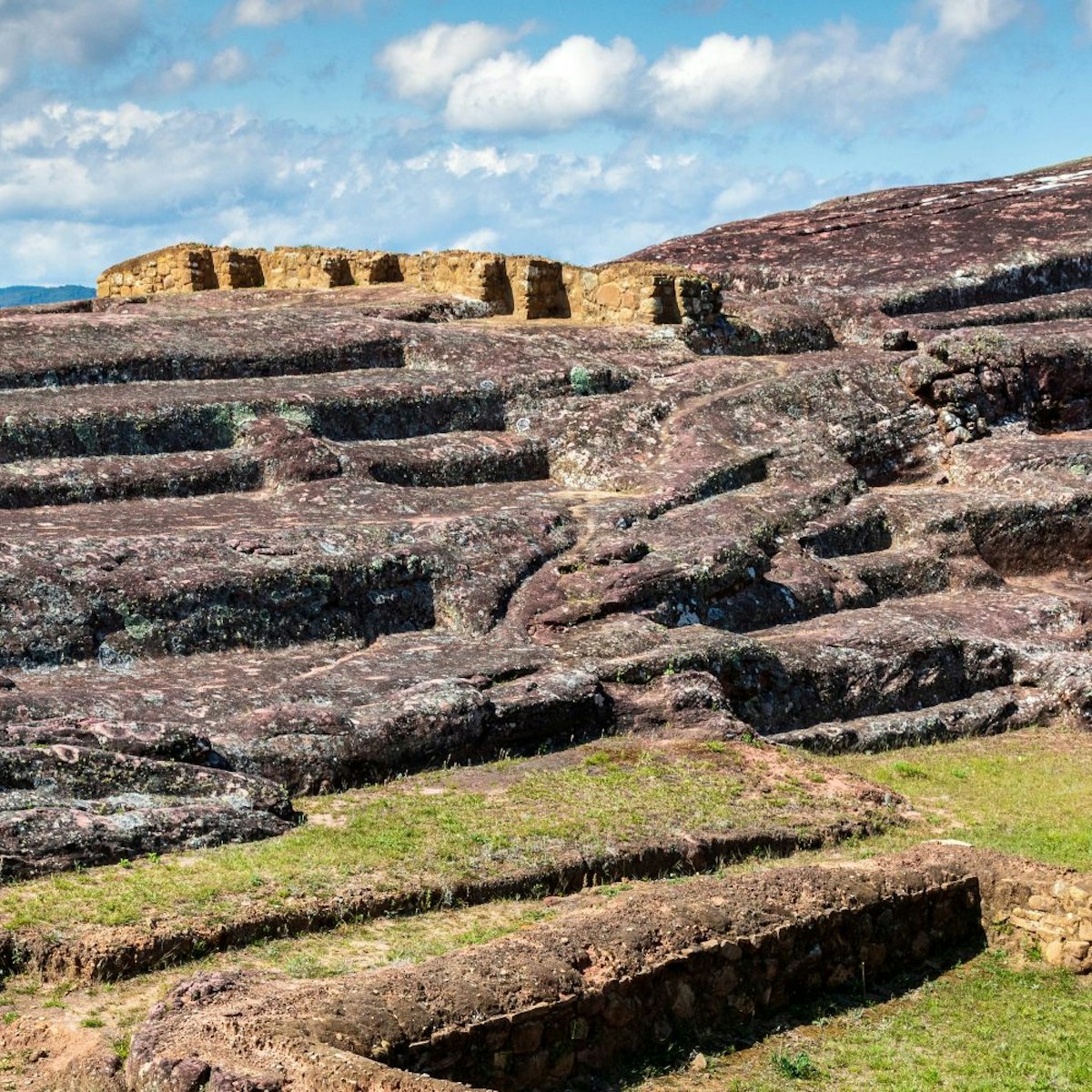
Santa Cruz & Gran Chiquitania
The mystical site of El Fuerte exudes such pulling power that visitors from all over the world come to Samaipata just to climb the hill and see the…
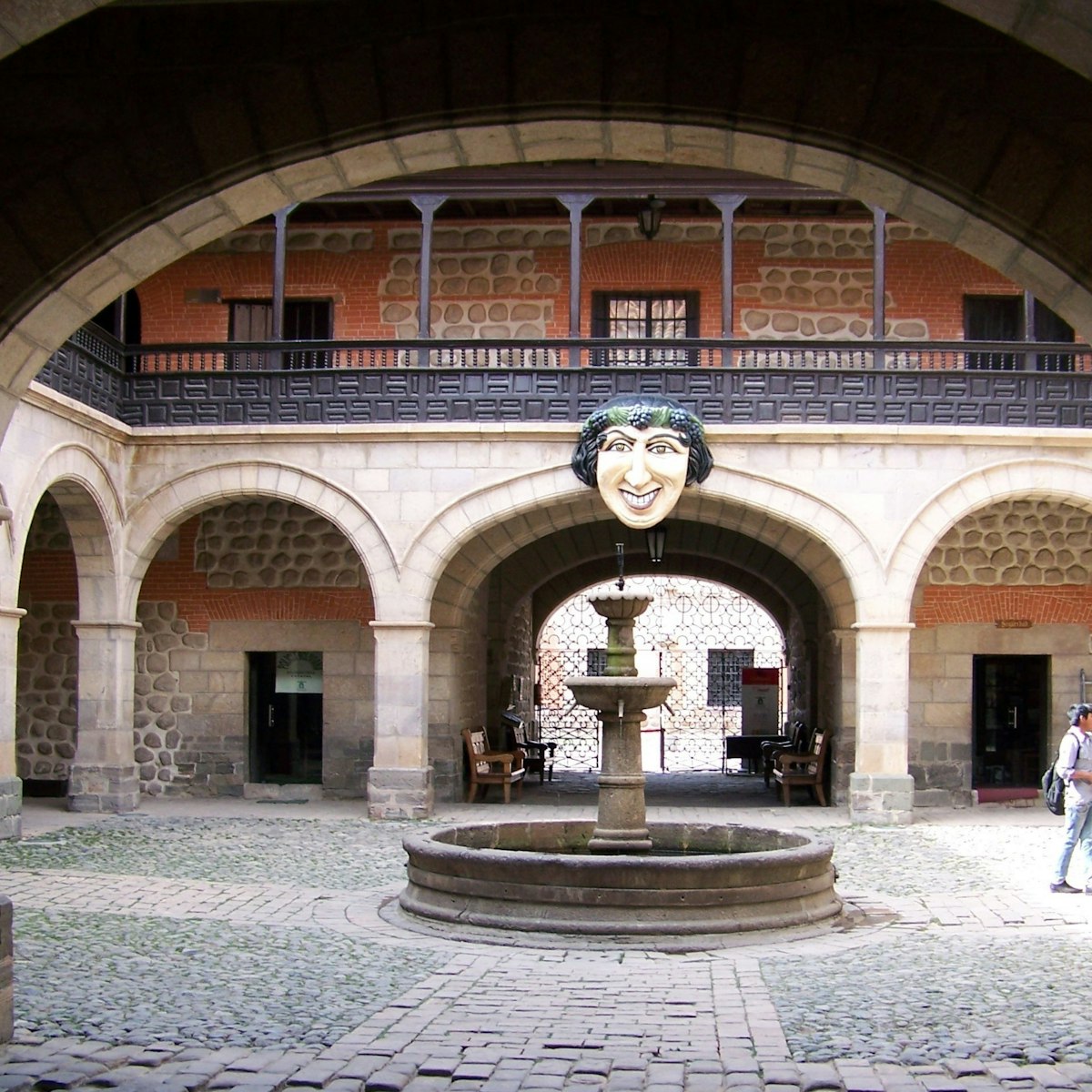
Casa Nacional de la Moneda
The National Mint is Potosí’s star attraction and one of South America’s finest museums. Potosí’s first mint was constructed on the present site of the…

The riverfront hacienda of former Bolivian president Jaime Paz Zamora was designed by Zamora himself as his own version of Gabriel García Márquez' Macondo…
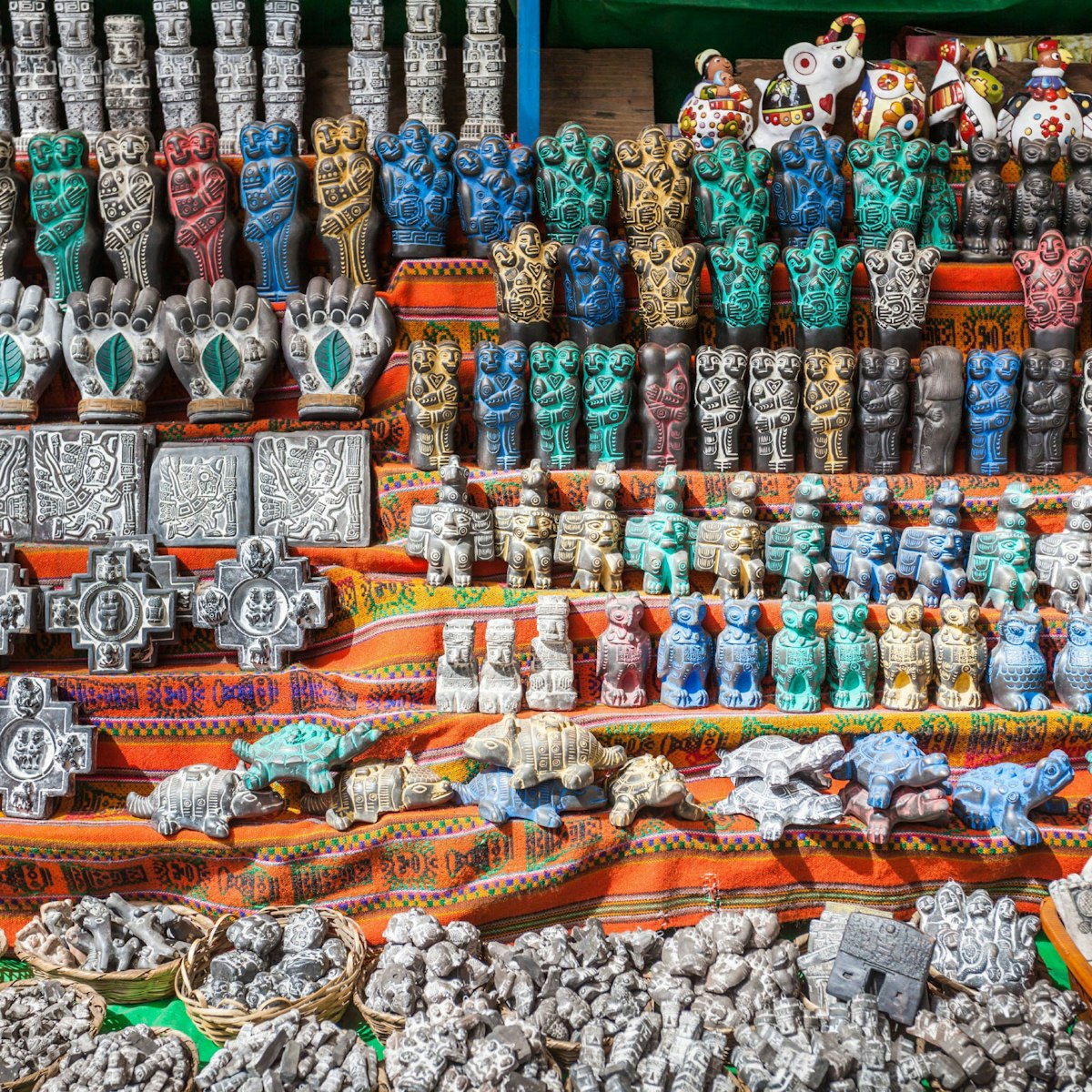
Mercado de las Brujas
The city’s most unusual market lies along Calles Jiménez and Linares between Sagárnaga and Av Mariscal Santa Cruz, amid lively tourist artesanías (stores…
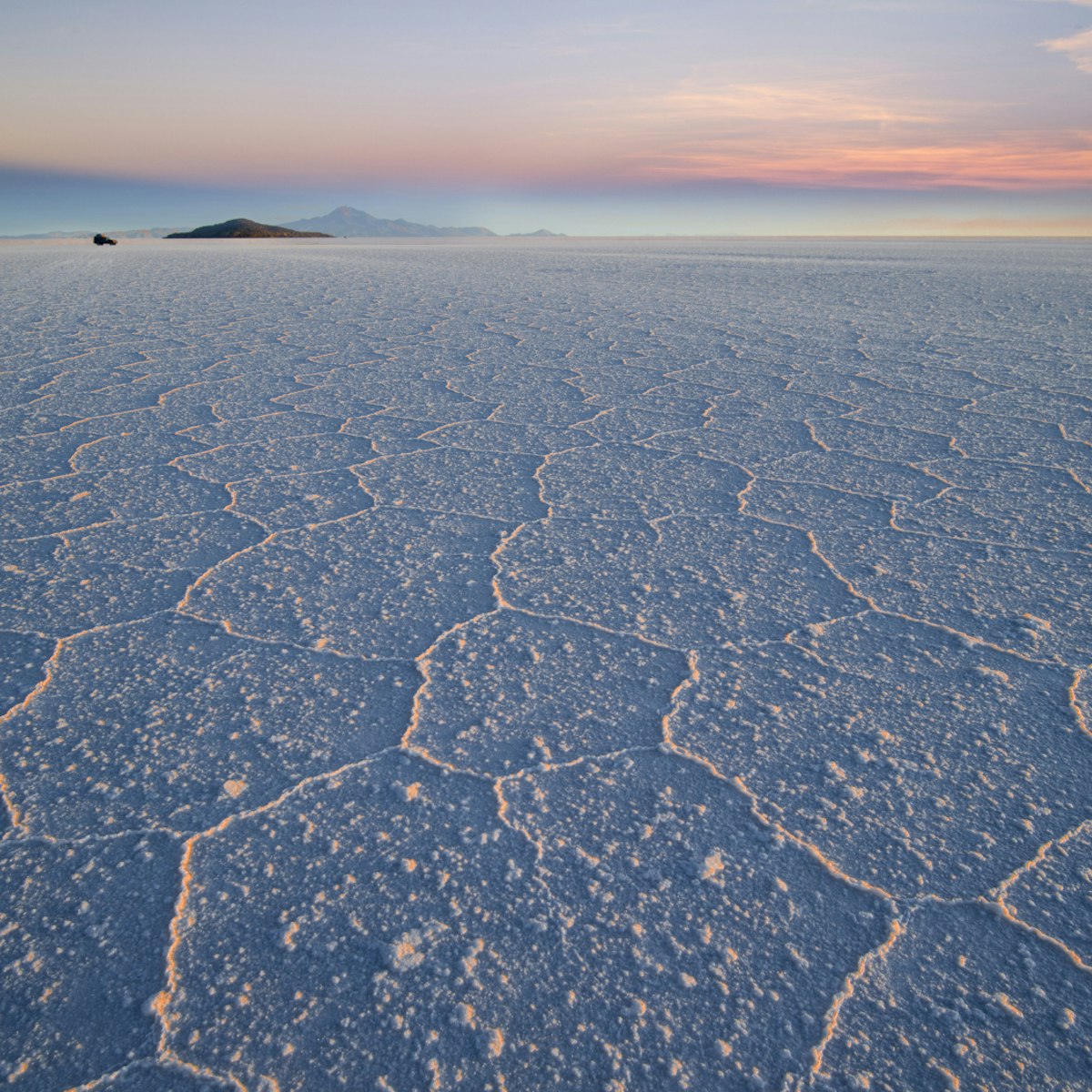
Salar de Uyuni
The world's largest salt flat sits at a lofty 3653m (11,985ft) and blankets an amazing 12,000 sq km (4633 sq miles). It was part of a prehistoric salt…
Dinosaur Tracks
As you might have guessed from the dinosaur figure in the plaza or the dinosaur head sticking out of city hall, Torotoro has become synonymous with…
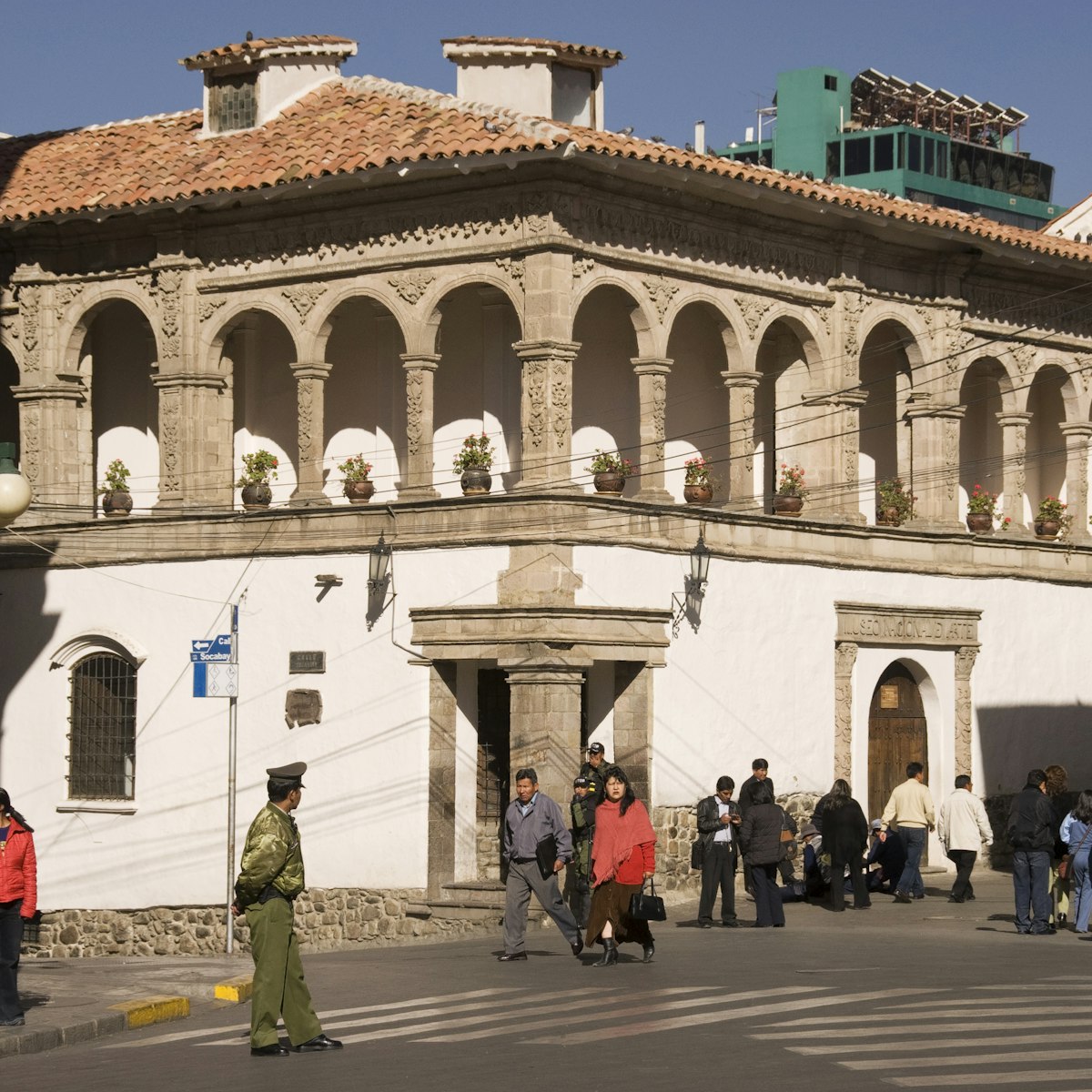
Museo Nacional del Arte
This colonial building was constructed in 1775 of pink sandstone and has been restored to its original grandeur, in mestizo (mixed) baroque and Andino…
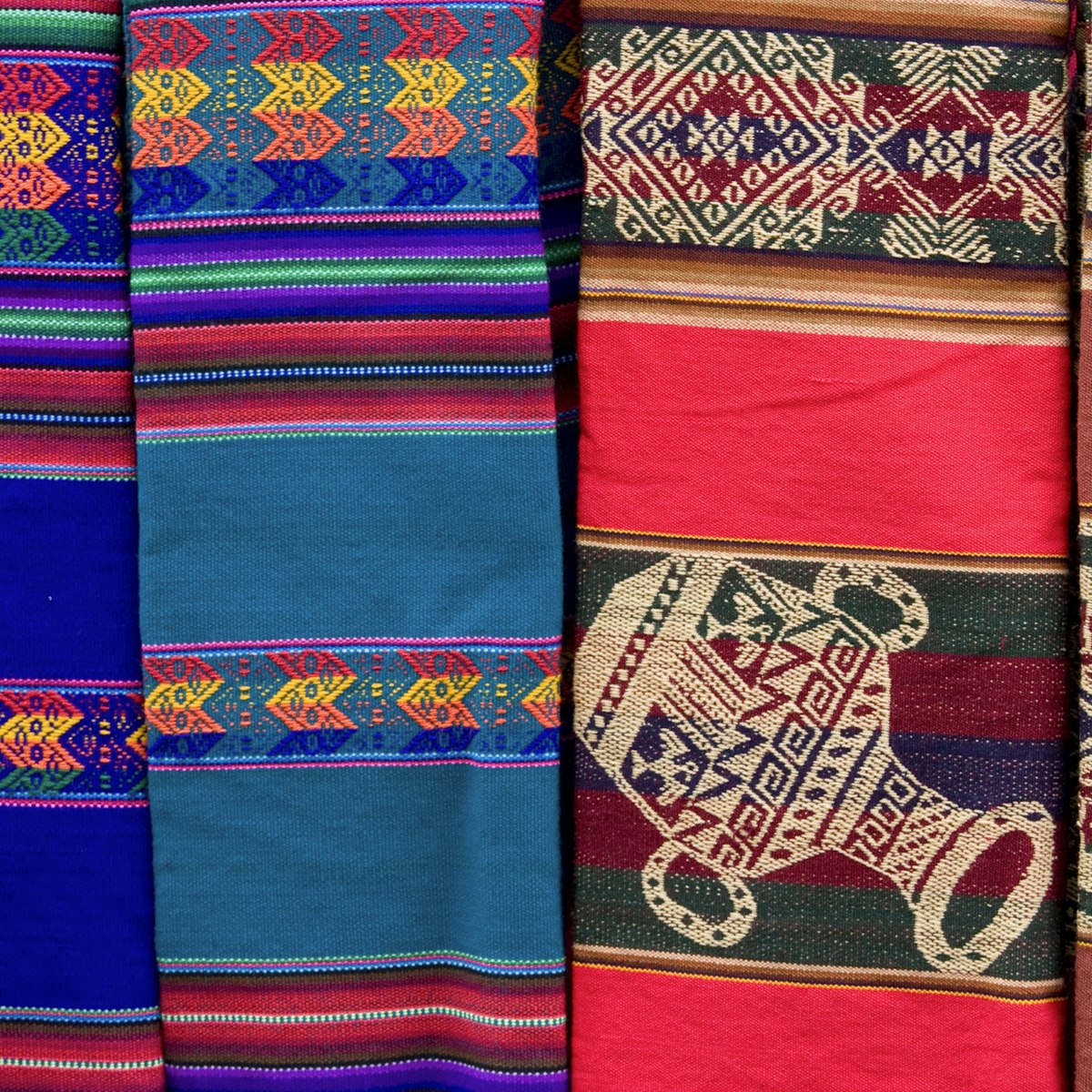
Museo de Textiles Andinos Bolivianos
Fans of Bolivia’s lovely traditional weaving consider this small textile museum a must-see. Examples of the country’s finest traditional textiles …
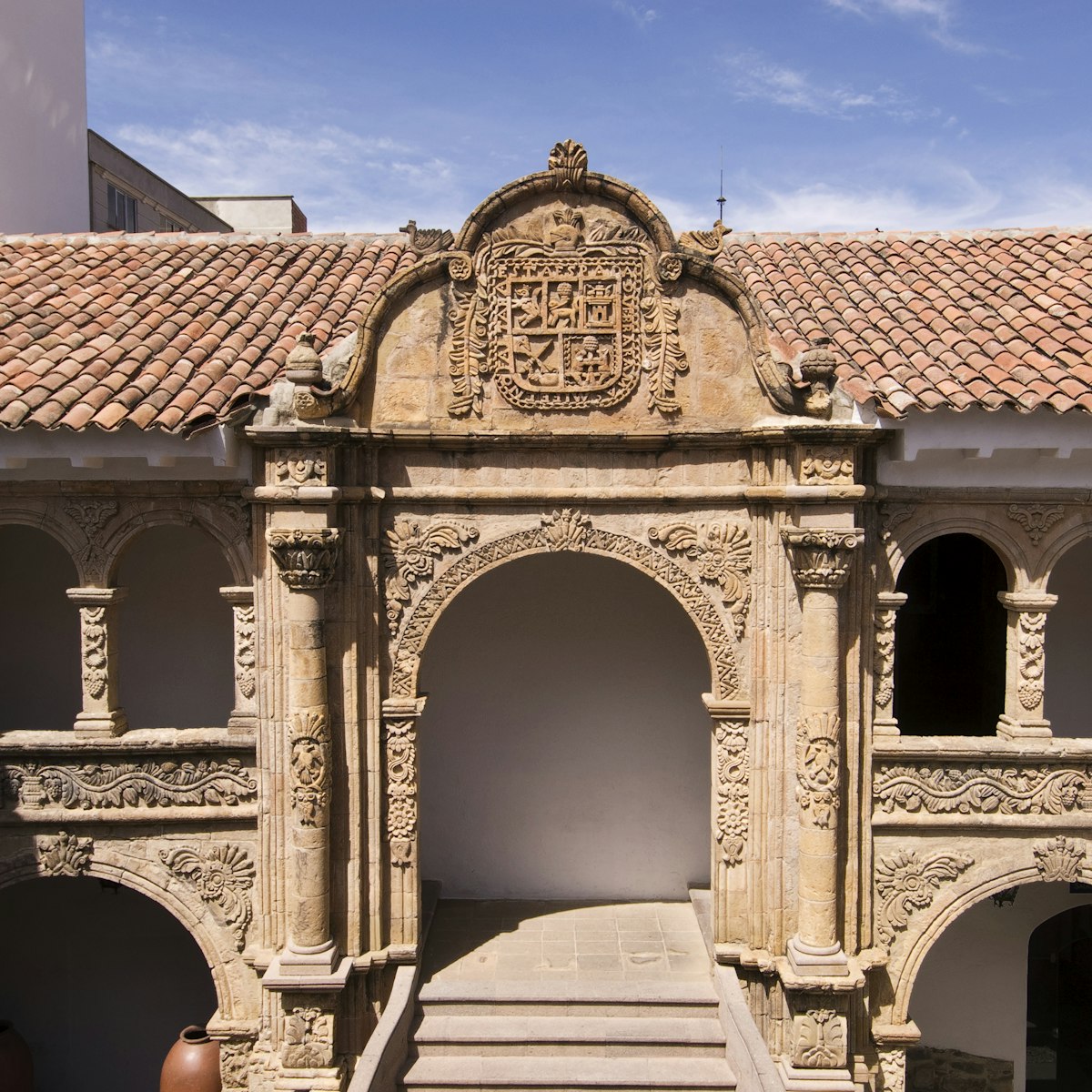
Museo de Etnografía y Folklore
Anthropology buffs should check out this museum, one of the city's best. The building, itself a real treasure, was constructed in 1720 and was once the…
Caverna de Umajalanta
The Río Umajalanta, which disappears beneath a layer of limestone approximately 22m thick, has formed the impressive Umajalanta Cavern, of which 4.5km of…
Santuario Chuchini
Amazon Basin
The Santuario Chuchini (Jaguar's Lair) is one of the few easily accessible Paitití sites. This wildlife sanctuary and camp sits on an 8-hectare loma …
Casa de la Libertad
For a dose of Bolivian history, it’s hard to beat this museum where the Bolivian declaration of independence was signed on August 6, 1825. It has been…
Palacio Portales
Nothing symbolizes Bolivia's gilded mineral age like tin baron Simón Patiño's European-style Palacio Portales. Though he never actually inhabited this…
Isla Incahuasi
One of the highlights of a Salar de Uyuni tour is a hike around the spectacular Isla Incahuasi, otherwise known as Inkawasi. It's located in the heart of…
Sunday Market
Despite the presence of other camera-wielding gringos and the ubiquity of travel agencies in Sucre selling 'tours,' Tarabuco's Sunday market is well worth…
Lake Titicaca
The sparkling white mudéjar (Moorish–style) cathedral, with its domes and colorful azulejos (blue Portuguese-style ceramic tiles), dominates the town…
Gruta de San Pedro
A popular excursion, San Pedro Cave, known in the Aymará language as Chussek Uta (House of Owls), is approximately 500m deep, with an enclosed lagoon that…
La Senda Verde Wildlife Sanctuary
At 12-hectare Senda Verde, there's a new concept: humans are 'caged' while most of the 200-plus monkeys run free. This protects people and monkeys alike …
Reserva Nacional de Fauna Andina Eduardo Avaroa
Tucked away in the southwestern corner of Los Lípez near the Chilean border is the remote Reserva Nacional de Fauna Andina Eduardo Avaroa. It's a rough…
Museo de Arte Indígena
This superb museum of indigenous arts is a must for anyone interested in the indigenous groups of the Sucre area, focusing particularly on the woven…
This is a beautifully preserved village where the homes are built with flat stones joined in an earthen mortar. There is a stone church on the hilltop…
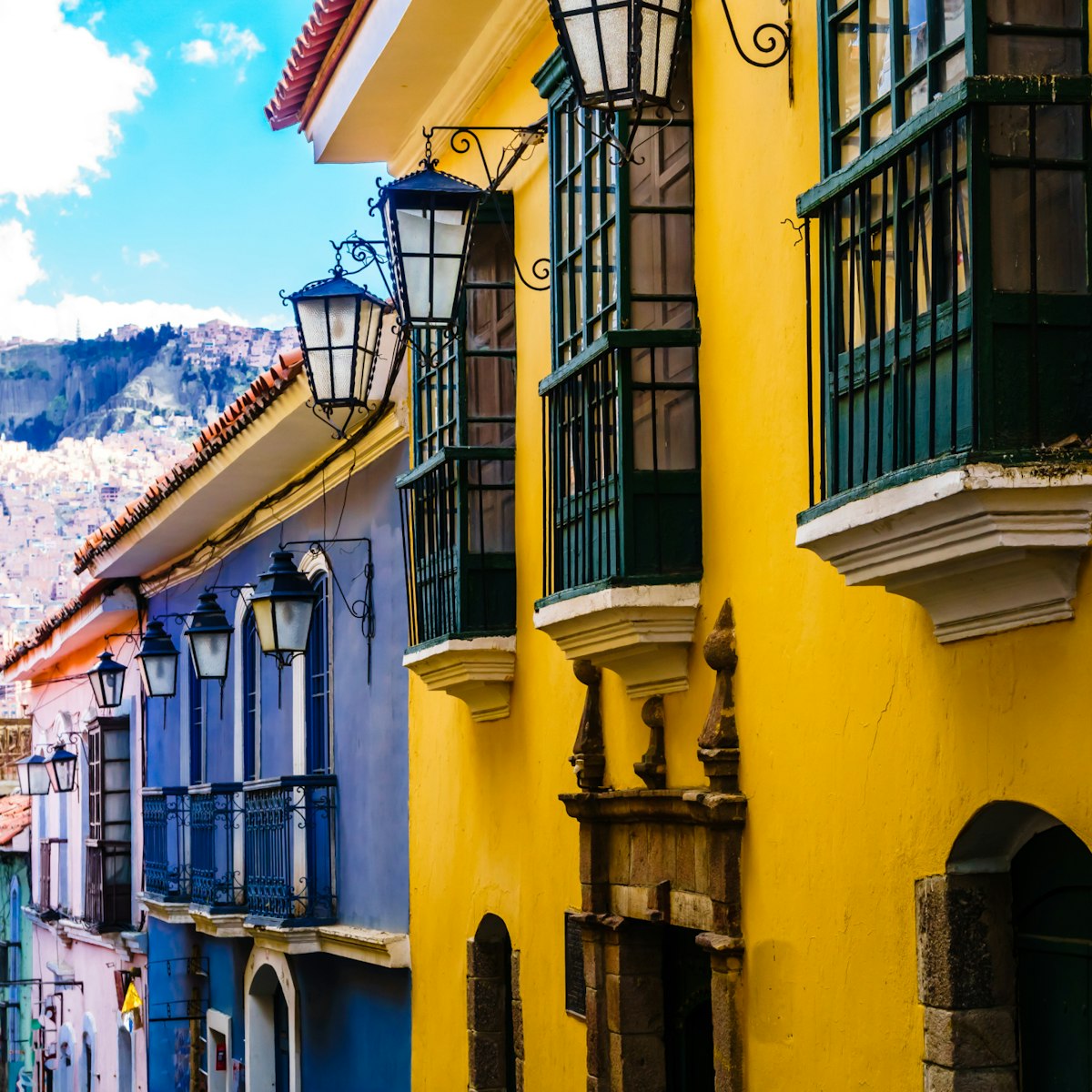
Calle Jaén Museums
La Paz’s best-preserved colonial street is home to four small museums. They are all clustered together and can generally be bundled into one visit. Buy…
Museo y Convento de Santa Teresa
The fascinating Santa Teresa Convent was founded in 1685 and is still home to a small community of Carmelite nuns who have restored the sizable building…
Cristo de la Concordia
This immense Christ statue standing atop Cerro de San Pedro (2800m) behind Cochabamba is the second largest of its kind in the world. It's 44cm higher…
Convento de Santa Teresa
The noble, timeworn Convento de Santa Teresa is straight out of a Gabriel García Márquez novel. Guided tours (around 45 minutes) of this gracefully…
Jardín Botánico
Santa Cruz's lush botanical gardens, 12km east of the city center, make for a tranquil escape from the urban scene. Covering more than 200 hectares, the…
La Capilla Sixtina del Altiplano
Like its famous counterpart in Vatican City, the interior of this lovely adobe-and-thatch church is covered with frescoes. But unlike the other Sistine…
Museo Nacional de Etnografía y Folklore
Known locally as MUSEF and housed in the impressive former Banco Nacional building, this museum brings together a series of fascinating temporary…
Santuario Mariano de la Torre
Intricately carved wooden pillars and doors displaying a fascinating combination of motifs are the star attraction at this moving memorial, completed in…
Museo Etnoarqueológico Kenneth Lee
Named for the gringo querido del Beni, the beloved white man of the Beni, this small museum north of the center is considered the city's top cultural…
Parque Nacional Noel Kempff Mercado
The wonderfully remote and globally important Noel Kempff Mercado National Park is home to a broad spectrum of Amazonian flora and fauna and has a wide…
Reserva Barba Azul
Thanks to the efforts of the conservation NGO Armonía, the endangered blue-throated macaw or barba azul has become something of a regional celebrity in…
The major but near-forgotten ruins of Iskanwaya, on the western slopes of the Cordillera Real, sit in a cactus-filled canyon, perched 250m above the Río…
Cañon de Torotoro & El Vergel
Three kilometers from Torotoro, the ground drops away into an immense and spectacularly beautiful canyon, more than 250m deep. From the mirador (lookout)…
Isla del Sol
Yumani is the main village at the south end of the island. Most boats drop you at the village’s dock, about 200m downhill from the town proper. The small…
Ciudad de Itas
Though the weirdly shaped set of caverns, once the refuge of isolated communities, are striking, they aren't the main reason to make the 21km, often white…
Tajzara Lagoons
Along the eastern shores of the lagoons, the wind has heaped up large arenales (sand dunes). An interesting climb takes you to the symmetrical peak of…
Parque Nacional Sajama
With expansive high-plains views, rare wildlife (including flamingos and graceful vicuña), geyser fields, hot springs, the world's highest forest, and…
Tumichucuá is a small community about 25km south of town (B$30 by moto-taxi) toward ‘El Triángulo’ (the road junction to Cobija). There is a lake for…
Area Protegida Municipal Aquicuana
This lush jungle reserve 22km north of Riberalta (B$30 by moto-taxi) is a great spot for bird-watching, wildlife watching (particularly caimans and…
More destinations you need to see
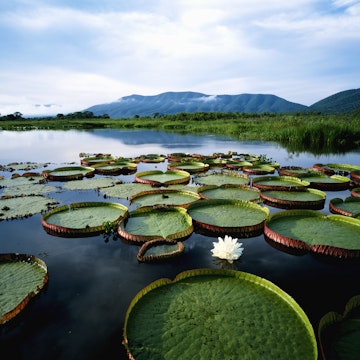

- Amazon River
- Galápagos Islands
- Indonesian Archipelago
- Mekong River
- Irrawaddy River
- India Cruises
- Pacific Coast
- Patagonia Cruises
- Machu Picchu
- Iguazu Falls
- Bolivia Travel Guide
11 Must-See Places To Visit In Bolivia

South America is rich with unique cultures, varied landscapes, and rewarding destinations. Despite many millions of tourists visiting the continent each year, landlocked Bolivia still remains relatively untouched and off the well-worn tourist path. For travelers looking to see a lesser-visited (yet equally remarkable) destination with stunning nature, bustling cities, and ancient cultures, consider traveling to the underrated Andean country of Bolivia.
The diverse geography of Bolivia offers plenty of opportunities to go out for an exciting adventure. This country differs from other popular tourist destinations by providing you the chance to dive deep into the local culture, explore the great outdoors, and experience some of the most unique experiences available in the world.
Wondering where to visit? Here are the most interesting, must see places to visit in Bolivia on your vacation :
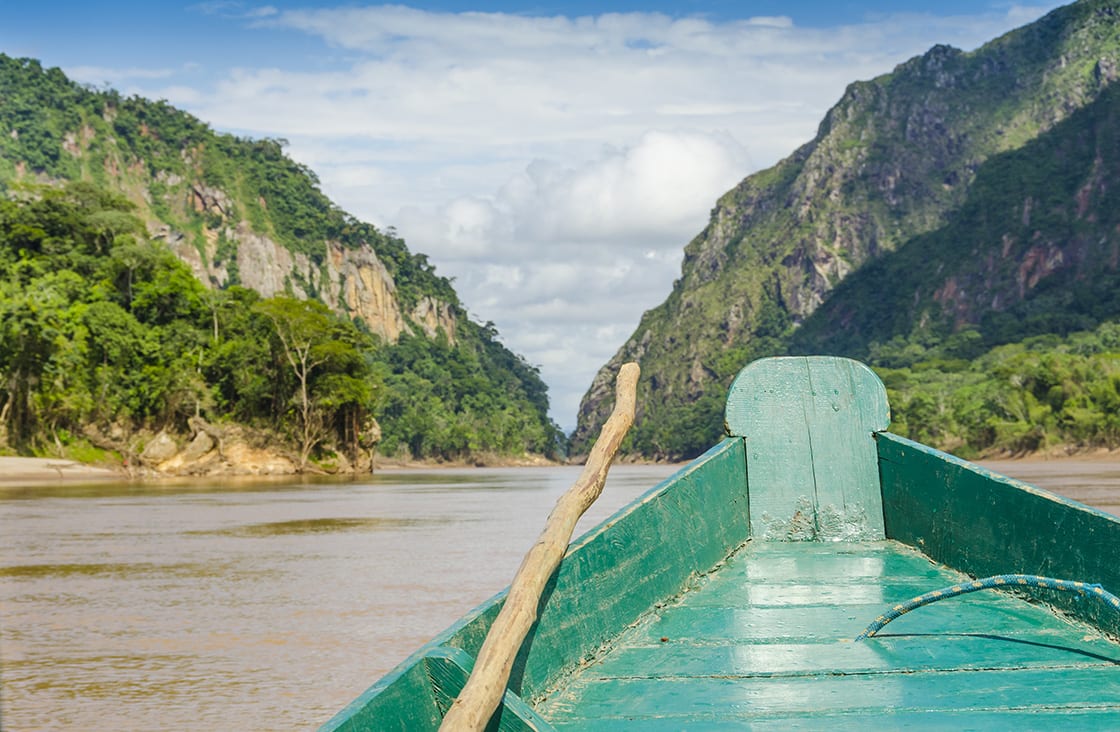
Bolivian Jungle
1. The Bolivian Amazon
The Bolivian Amazon may rest more than a thousand kilometers from the flow of the Amazon River itself, but the piece of the Amazon Rainforest that lies within Bolivia’s borders is some of the best you’ll find. Largely untouched, the Bolivian Amazon boasts a well-preserved natural environment with all of the nature and none of the tourists. Here reside jaguars, tapirs, giant anteaters, and a flurry of exotic birds flying through the lush rainforest canopy. Caimans and turtles lounge along the shores of the water as piranhas and pink dolphins swim past, the sounds of the wild poking through the tranquil jungle air.
The best way to explore the Bolivian Amazon is by cruising along the Amazonian tributaries, with routes that embark from the lively, tropical city of Trinidad, Bolivia. Cruises here explore the Rio Mamore and Rio Ibare, and nearby Llanos de Moxos region, the southernmost extension of the Amazon basin.

Driving on the Mirror Surface of the Uyuni Salt Flats
2. Salar de Uyuni (Uyuni Salt Flats)
Perhaps Bolivia’s most photogenic destination, Salar de Uyuni is dreamy, in a word. These massive plains of salt are easily recognizable by the beautiful contrast of the deep blue sky and bright white ground, stretching infinitely in every direction. The cracks in the salt form in the shape of hexagons, naturally perfect in form. Most impressive is when the ground floods in the rainy season, constantly maintaining just a couple of inches of water above the salt. The water turns the salt flats into a massive mirror, reflecting the far off mountains and perfect sky, and the thin wet layer makes it appear as if visitors are walking on water.
Spend a day sailing across the salty stretch of land in an old Jeep, visit Cactus Island still standing in the middle, and walk on water as the sun sets in a hundred hues or pink, purple and blue. Those with more time should spend several days driving deeper into Uyuni’s impressive desert to be rewarded with flamingos, mountains, multi-colored lakes, and the best desert scenery you’ll find in all of Bolivia.
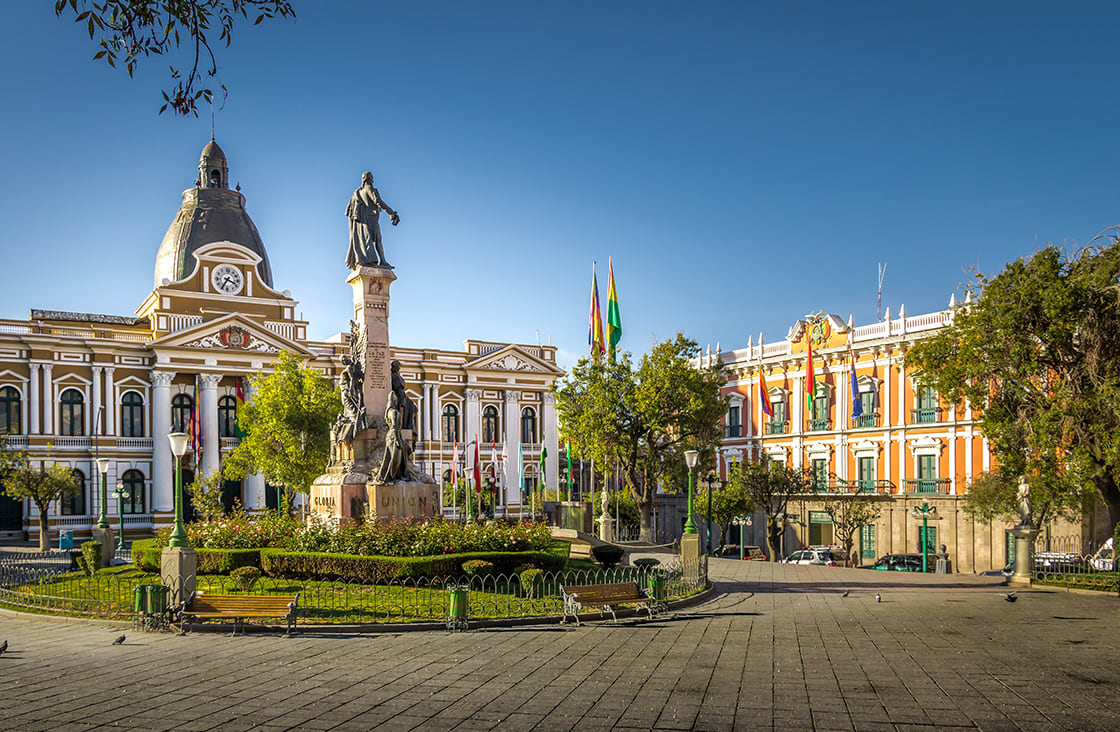
Plaza Murillo & the Government Palace in La Paz, Bolivia
Bolivia’s de facto capital city, La Paz is a unique metropolis when compared to other major South American cities. Nestled high in the Andes, the chaotic tumble of terracotta pours down the hillsides, the classic downtown pooling in the center. The ominous Mount Illimani volcano and otherworldly rock formations of the Valle de la Luna (Valley of the Moon) perch on one side of the city, the highland residences of the El Alto neighborhood on another, and the popular teleferico – the world’s largest cable car system – strings over it all from above.
Wander the hilly cobblestoned roads with a guide, stopping by sights such as the San Francisco Church, guard-less San Pedro Prison, or historic government palace, and learn about their roles in Bolivia’s complicated past. Explore local haunts by climbing through the winding alleys of the eerie Witch Market, the local go-to for love potions or offerings to Pachamama (Mother Earth), or barter with Bolivia’s beloved cholitas selling over 7,000 varieties of potatoes at the Mercado Rodriguez.
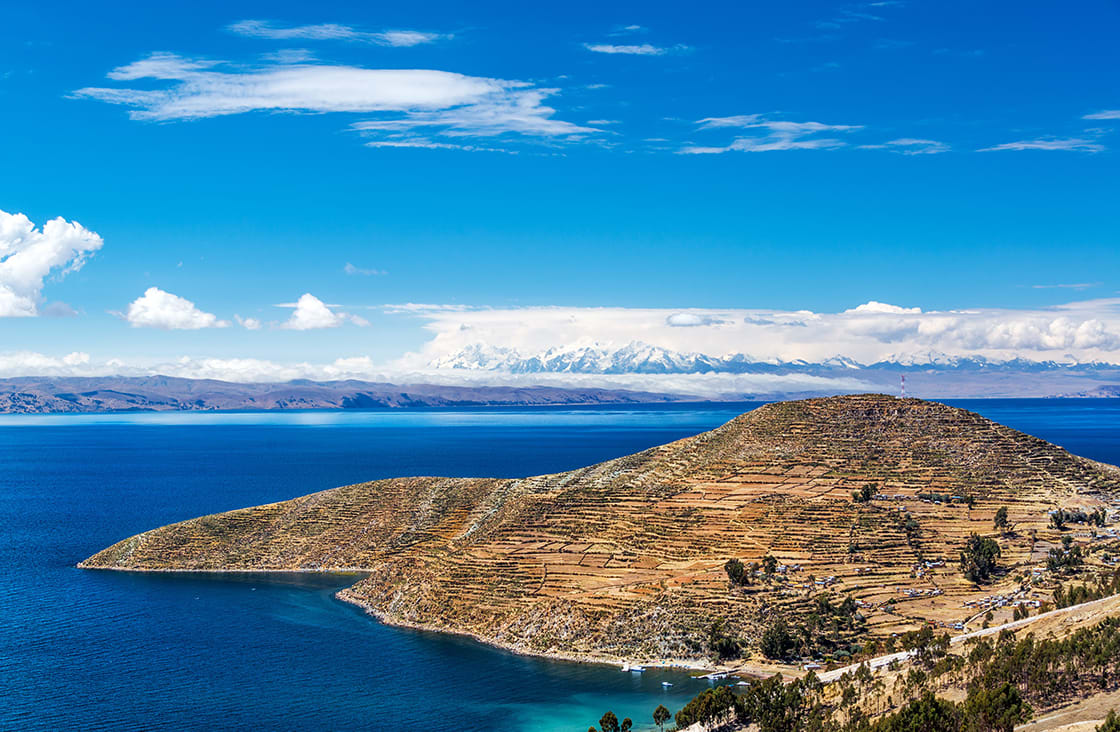
Terraced Landscape, Sun Island
4. Lake Titicaca’s Copacabana & Isla del Sol
An idyllic destination, Lake Titicaca lies on the border of Peru and Bolivia with two of the lake’s main destinations resting within the Bolivian borders: Copacabana and Isla del Sol. Copacabana is the town on the beautiful shores of the awe-inspiring lake, the gateway for travelers to embark on a traditional boat ride across this massive expanse of water. Sail past floating villages, ride the gentle waves in woven reed boats, and observe life as it’s been for decades.
Those with time should sail towards the middle if the lake, where you can lose complete sight of the shore on Isla del Sol. Hiking trails weave across the island, through the swaying yellow reeds that stand out against the blue water below. Spend a night on the island in a charming bungalow and don’t miss the impossibly brilliant stars dancing over the island each night.
5. Cochabamba
Do you love food and trying different local cuisine options? Cochabamba is a foodie’s dream come true destination in Bolivia. This gastronomic center is home to restaurants serving huge portions of Bolivia’s most exemplary and traditional cuisine. Cochabamba also has a pleasant year-round climate, huge cultural scene, and plenty of natural places to explore nearby.
6. Kaa Iya National Park
Are you an outdoor adventurer? Or do you love seeing wildlife in a natural setting? If so, you must visit Kaa Iya National Park, a remote national park on the border of Bolivia and Paraguay. The biggest attraction at the park is being able to see the animals, especially the jaguars, in a natural wild setting. In addition to seeing big cats, Kaa Iya National Park is one of the best places in Bolivia for birding because the park has more than 300 species of birds. If you are an animal enthusiast, this is definitely one location you must visit when you travel to Bolivia .
7. Ojos del Inca Laguna
Experience one of the lesser-known places to visit in Bolivia by planning a getaway to Ojos del Inca Laguna, which is about one hour from Potosi. This is a fun destination to experience a natural spring nestled in between the mountains. It is a must-see location, but because the springs are not safe to swim in, you can swim in one of the local pools filled with the same water as the natural spring. It does get frigid at the springs, so bring along a change of clothes or a warm cover-up.
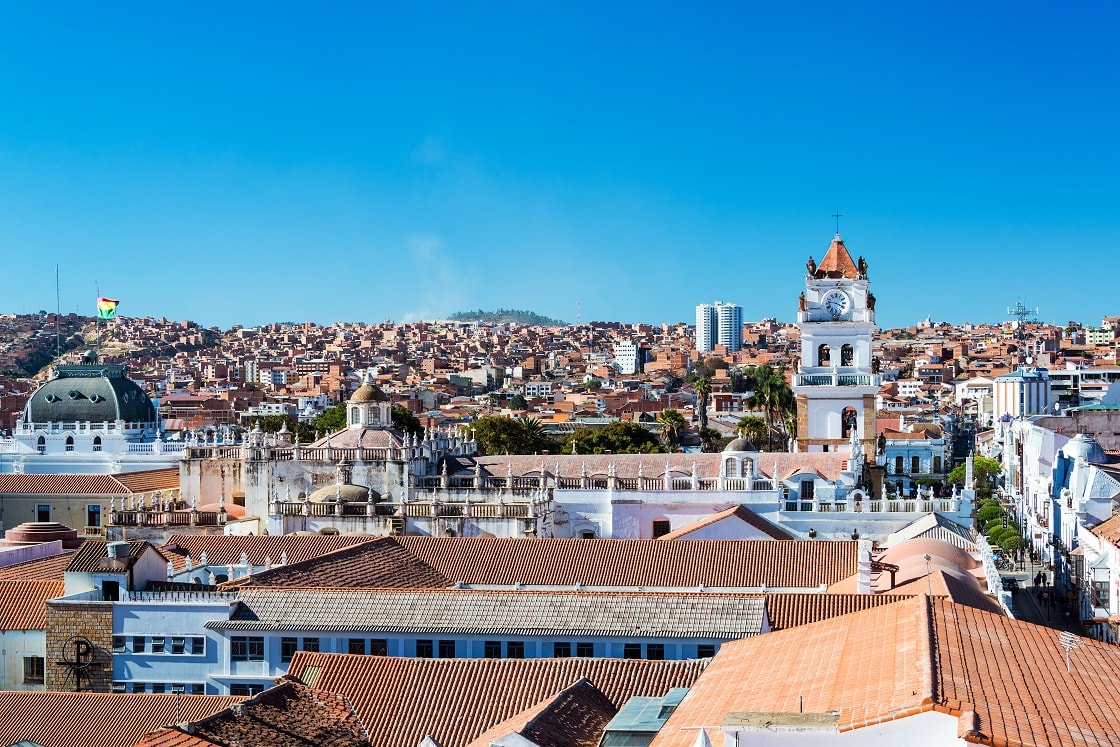
Cityscape Of Sucre With The Tower Of The Cathedral
Bolivia is home to many must-see destinations offering incredible natural settings and unique culture. Sucre, Bolivia’s capital city, is a breathtakingly beautiful metropolis and definitely a must-visit. While exploring the town, you will be immersed among parks and white stone architecture, making this the perfect backdrop for a picnic or leisurely stroll. Sucre is home to many beautiful churches, the National Library, and many restaurants serving authentic local cuisine.
Tarija is another lesser-visited destination tucked on the border of Bolivia, near Argentina and Paraguay. If you want to kick back and relax on your upcoming trip to Bolivia, you will want to make sure to visit Tarija. This town is the epicenter for the up-and-coming South American wine production industry, offering a laid-back vibe and welcoming environment for visitors. As you explore this town, you will encounter quaint street markets, restored museums, eccentric buildings, and relaxing waterfalls.
10. Torotoro Village
Torotoro is a dream destination that is the place to visit for a pleasant climate, vast caverns, breathtaking canyons, and circuits of prehistoric curiosities. This village is home to monumental rock formations for dinosaur enthusiasts, which contain fossils and footprints of dinosaurs from the cretaceous period in the Torotoro National Park. Not into dinosaurs? No problem. Torotoro is still a must-visit village, offering you the opportunity to explore underground caverns, massive canyons, a local museum, and rock paintings.
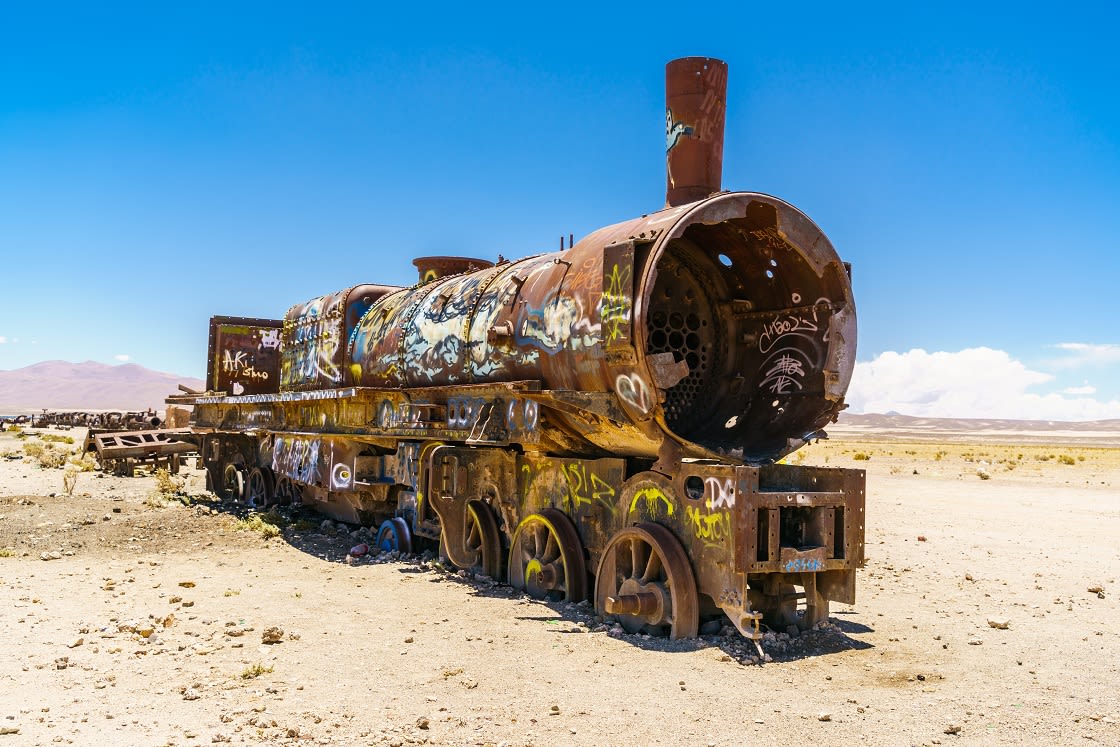
The Train Cemetery – Uyuni
11. Train Cemetery
The Train Cemetery, a few kilometers outside of Uyuni, is a surreal sight and something unique to add to your vacation itinerary. This location was once used to transport cargo to the Pacific Ocean Ports and provides fantastic photo opportunities and memorable vacation experiences. The train graveyard also serves as a playground, meaning if you had your tetanus shots, you can climb all over the trains and capture fun photos.
In Bolivia, you’ll find enchanting cultures new and old, living in peaceful harmony with the untouched natural landscape. Whether you are looking for an outdoor adventure or to experience city life, this country has something for you to enjoy. From the white plains of Salar de Uyuni to the exotic greens and blue of the Amazon rainforest to the red-tiled roofs cascading through the Andes in La Paz, these must see places to visit in Bolivia are waiting for you to discover them.
While Rainforest Cruises aim to provide accurate and up-to-date information, we make no representations as to the accuracy or completeness of any information herein or found by following any link on this site. Rainforest Cruises cannot and will not accept responsibility for any omissions or inaccuracies, or for any consequences arising therefrom, including any losses, injuries, or damages resulting from the display or use of this information.
You may also like
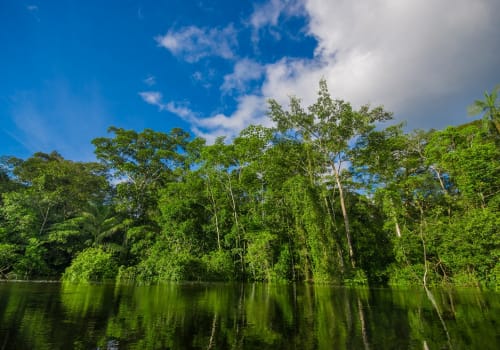
11 Tourist Attractions In The Amazon Rainforest You Must See
When it comes to untouched nature in a wildlife-rich environment, the Amazon Rainforest is one of the last places on earth to explore. Even hearing the word Amazon conjures up images of […]
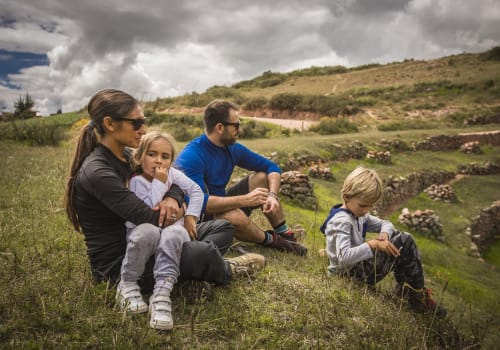
7 Best Family Destinations In South America
Soaring mountains, incredible wildlife and beaches, historical remains, the greatest natural and manmade wonders in the world, and spectacular cultural highlights from food to art, South America is a perfect destination for […]
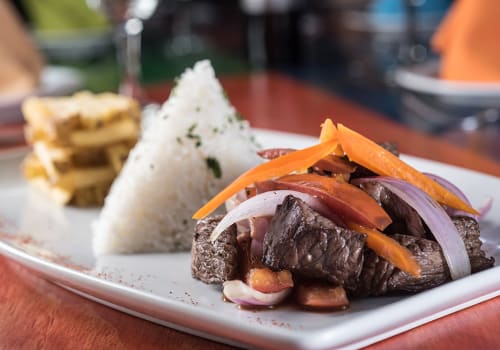
Best Food In South America? 12 Must-Try Specialty Dishes
One of the strongest arguments in favor of vacationing in South America is to have the chance at sampling is fascinating specialty dishes high in colors and flavors. The cuisine has numerous […]
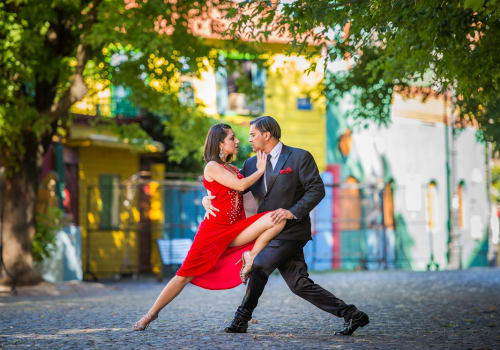
Top 10 South America Tourist Attractions You Have To See
South America is a continent of contrasting landscapes, featuring the highest, the driest, the largest, the deepest, the rarest, and more… If planning a vacation to South America, below please find our […]
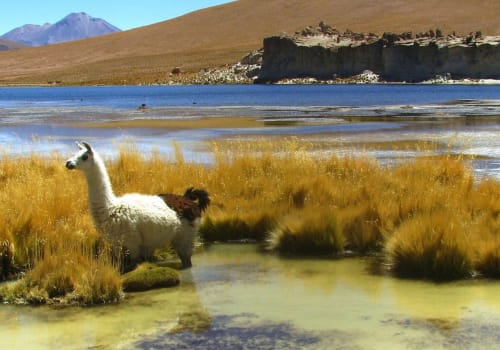
Bolivia Honeymoon Guide: Ideas, Tips, Hotels & Destinations
The first couple weeks after getting married should be an exciting time, and going on a honeymoon adventure is something you want to carefully plan out. Bolivia makes for an exotic honeymoon […]

Where To Stay In Bolivia: The Best Places & Hotels
Visiting Bolivia offers diverse opportunities to experience unique destinations and your hotel stay can be just as unique and memorable as what you see during your vacation. As with most things in […]

Bolivian Food: 13 Traditional & Typical Dishes To Try
Bolivia may not be world-famous for its local cuisine, but the country is rich in traditional dishes available for visitors to try. Many of the traditional dishes available throughout Bolivia are recipes […]

Bolivia Family Travel: 9 Things To Do In Bolivia With Kids
Traveling with kids means making memories that last a lifetime and having fun together as a family. However, not many think of Bolivia as a place with many family attractions as many […]

Top 10 Bolivia Tourist Attractions You Have To See
Bolivia is home to breathtaking landscapes, historic sites, diverse wildlife, and cultural sites. Whether you want to explore nature or experience city life, you will have many options available to choose from […]
On the Lookout for Expert Advice & Offers?
Join over 20,000 discerning travelers and be the first to receive our monthly exclusive discounts, inspiring travel content and expert tips, straight to your inbox.

- Charter (Private)

DEAL FLASH: Get Free Flights On The Nov 27 Thanksgiving Amazon Cruise Aboard Zafiro
Tourist attractions in Bolivia
What to see in bolivia.
2019-08-20 Updated: 2019-08-22
Lake Titicaca , the ciy of La Paz and the surreal Salar de Uyuni are the best known and most visited attractions in Bolivia, but there are also other, less famous hidden gems for those willing to stray from the beaten track: the jungle and pampas in Rurrenabaque , the imponent Sajama peak and the world's highest forest, colonial Sucre , the lavish carnival in Oruro and the still thriving Jesuit Missions in the Chiquitania.
Attractions by place

Attractions by city
The top 10 sights in bolivia.
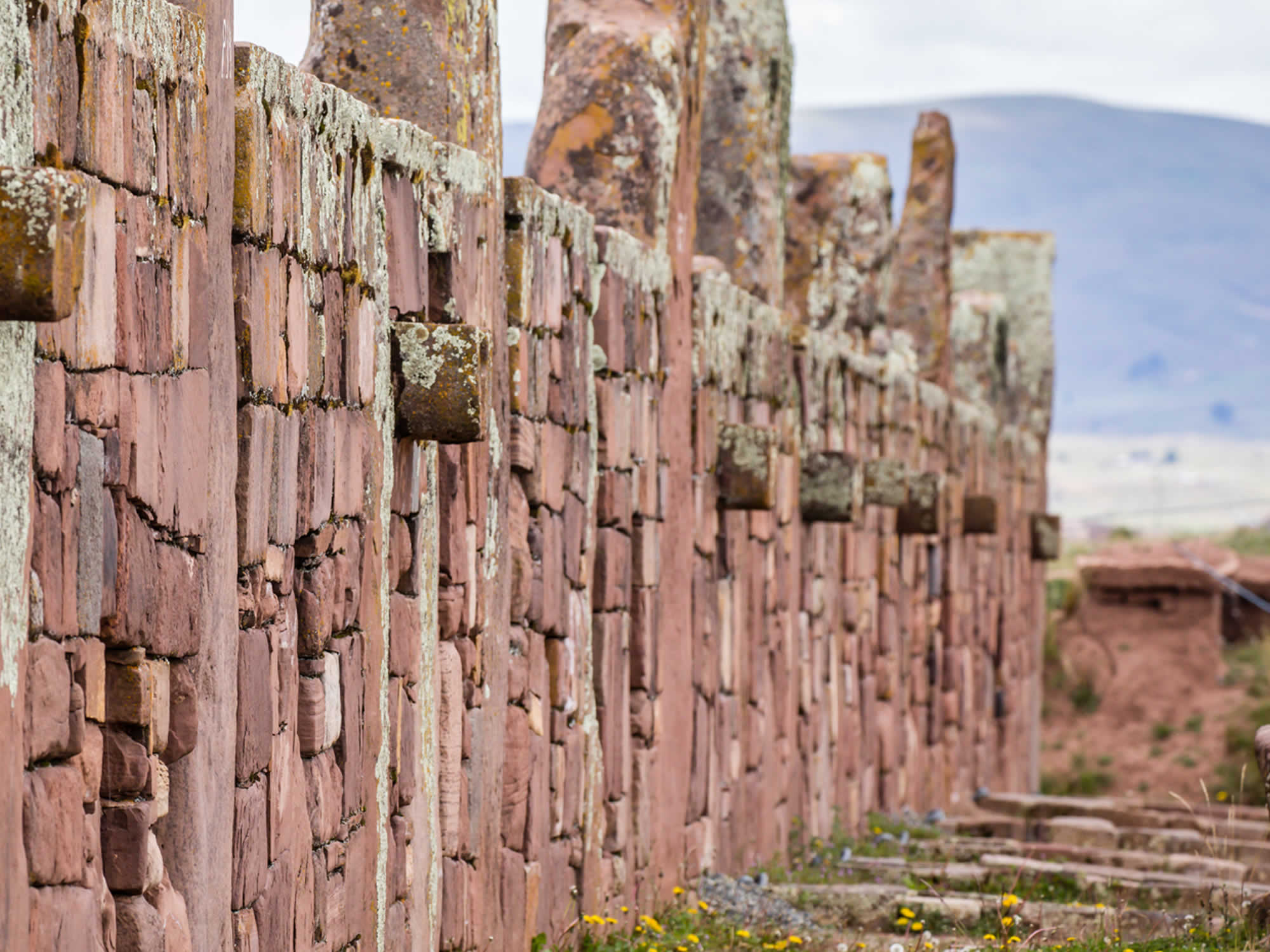
10. Tiwanaku
The ruins of Tiwanaku are found near the south-eastern shore of Lake Titicaca, about 72 km (44 miles) west of La Paz, Bolivia. Tiwanaku is a recognized World Heritage Site.

9. Torotoro National Park
The National Park Toro Toro is located to the north of Potosi, Bolivia. Among the attractions are the cavern of Huma Jalanta, Huaca Senka. There are tracks of dinosaurs, the Inca ruins of Flame Chaqui and cave paintings.
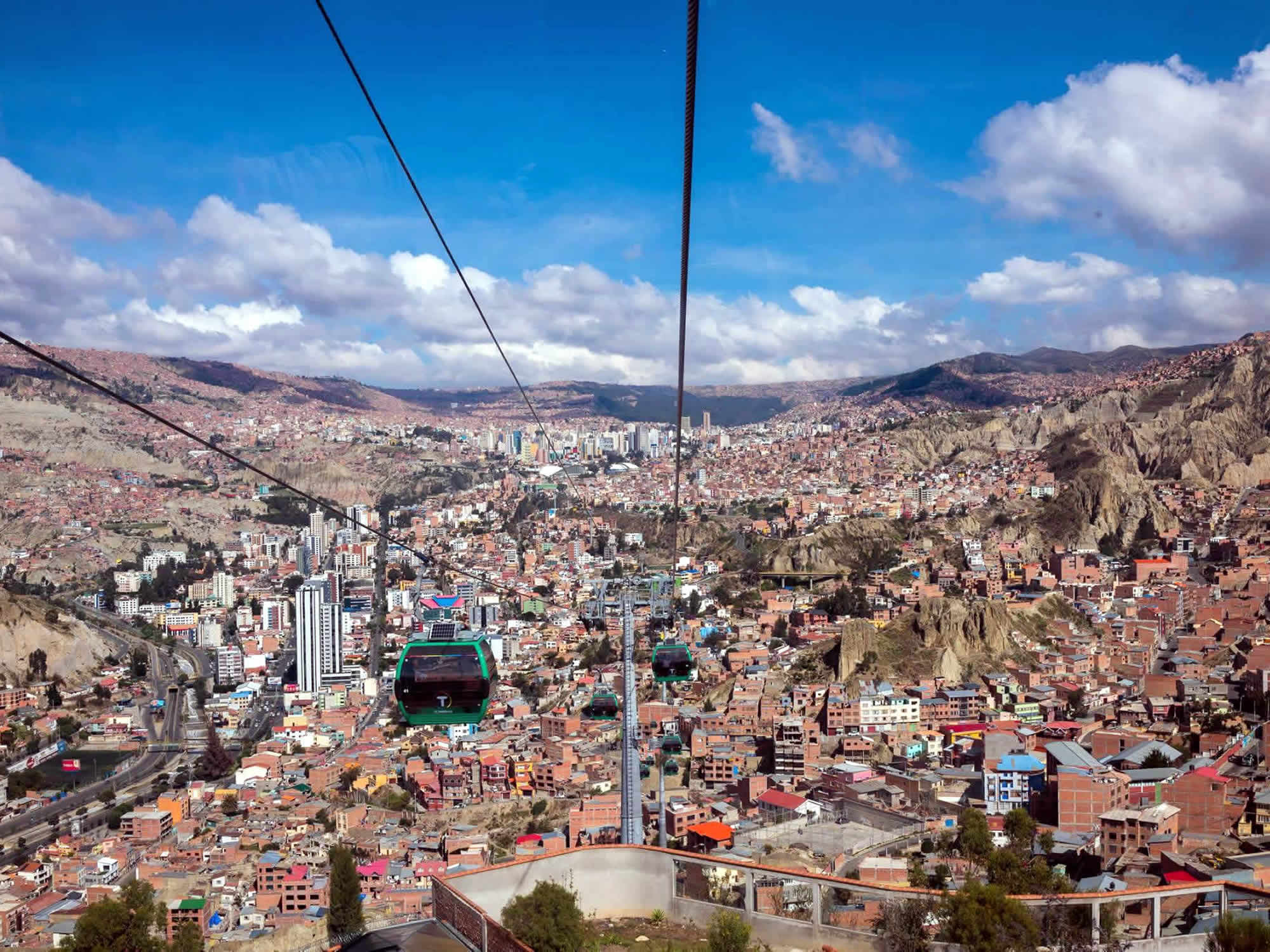
8. La Paz City
La Paz is the administrative capital of Bolivia. Altitude of the city ranges from about 4058 meters (13,313 feet) above sea level in El Alto (where the airport is located) to 3100 meters (10,170 feet) in the lower residential area. It is the highest national capital in the world.

7. Silver Mines of Potosí
One of the main tourist attractions of Potosi in Bolivia is the Cerro Rico. From the depths of this amazing mountain, huge amounts of silver have been extracted since 1545.
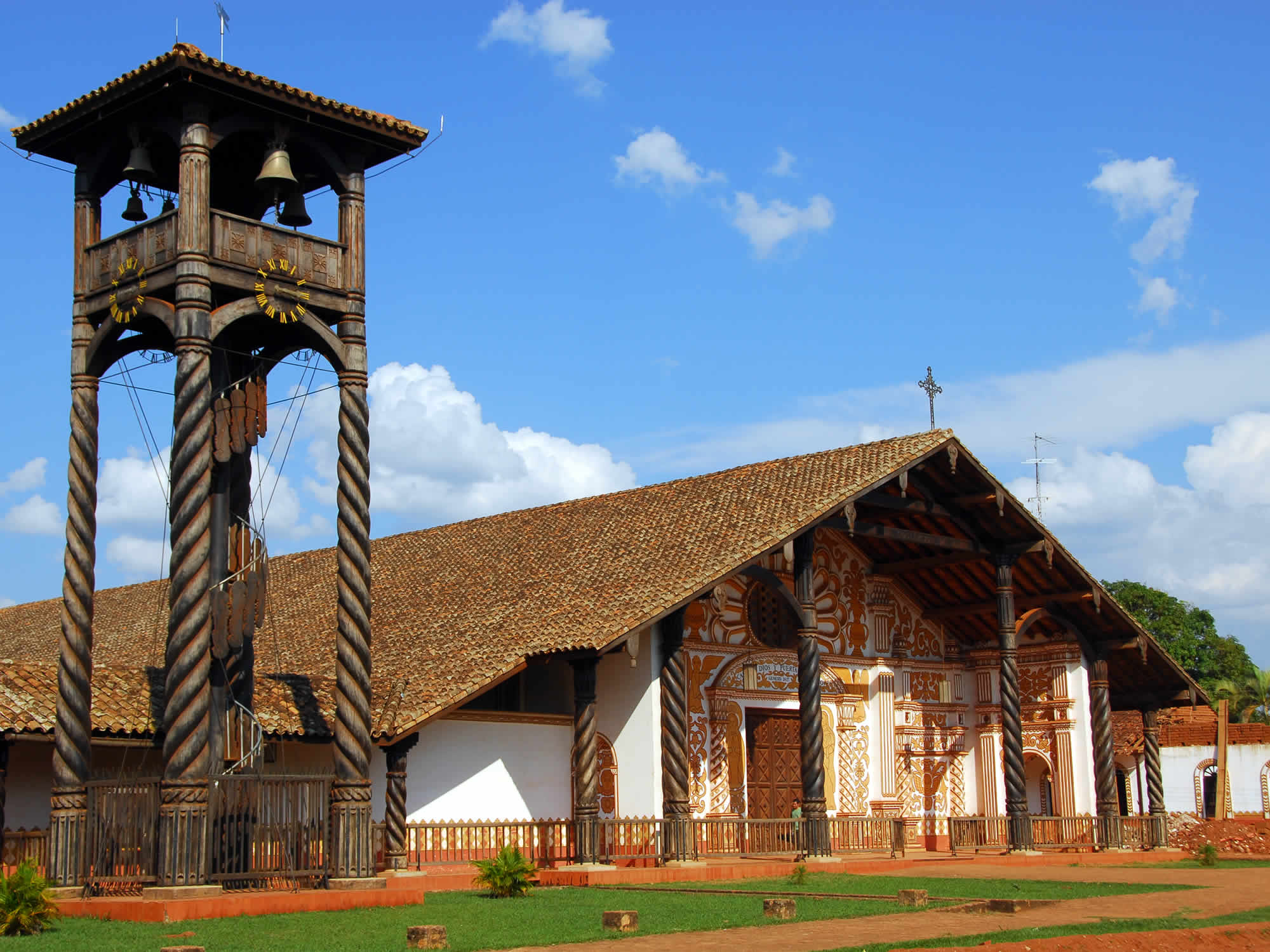
6. Jesuit Missions
The Jesuit missions in Bolivia have remained intact and even after hundreds of years they continue to marvel the visitors. They are located on the eastern lowlands of Santa Cruz, Bolivia, at about 6 hours from the city.

5. Oruro Carnival
The Carnival of Oruro is held as a sign of devotion to the Virgin of Socavon. The Carnival of Oruro is one of the largest cultural events and festivities in Bolivia and Latin America.

4. Sajama National Park
The National Park Sajama is located to the Northwest of Oruro, Bolivia. Features the imposing snow covered Sajama mountain, altoandinas lagoons, thermal water and andinism routes.

3. Lake Titicaca
The Titicaca Lake is the highest navigable lake in the world with an average height of 3,810 meters above the sea level. The Titicaca Lake is a great tourist attraction for nature lovers. A portion of lake Titicaca belongs to Bolivia and the other one to Peru.
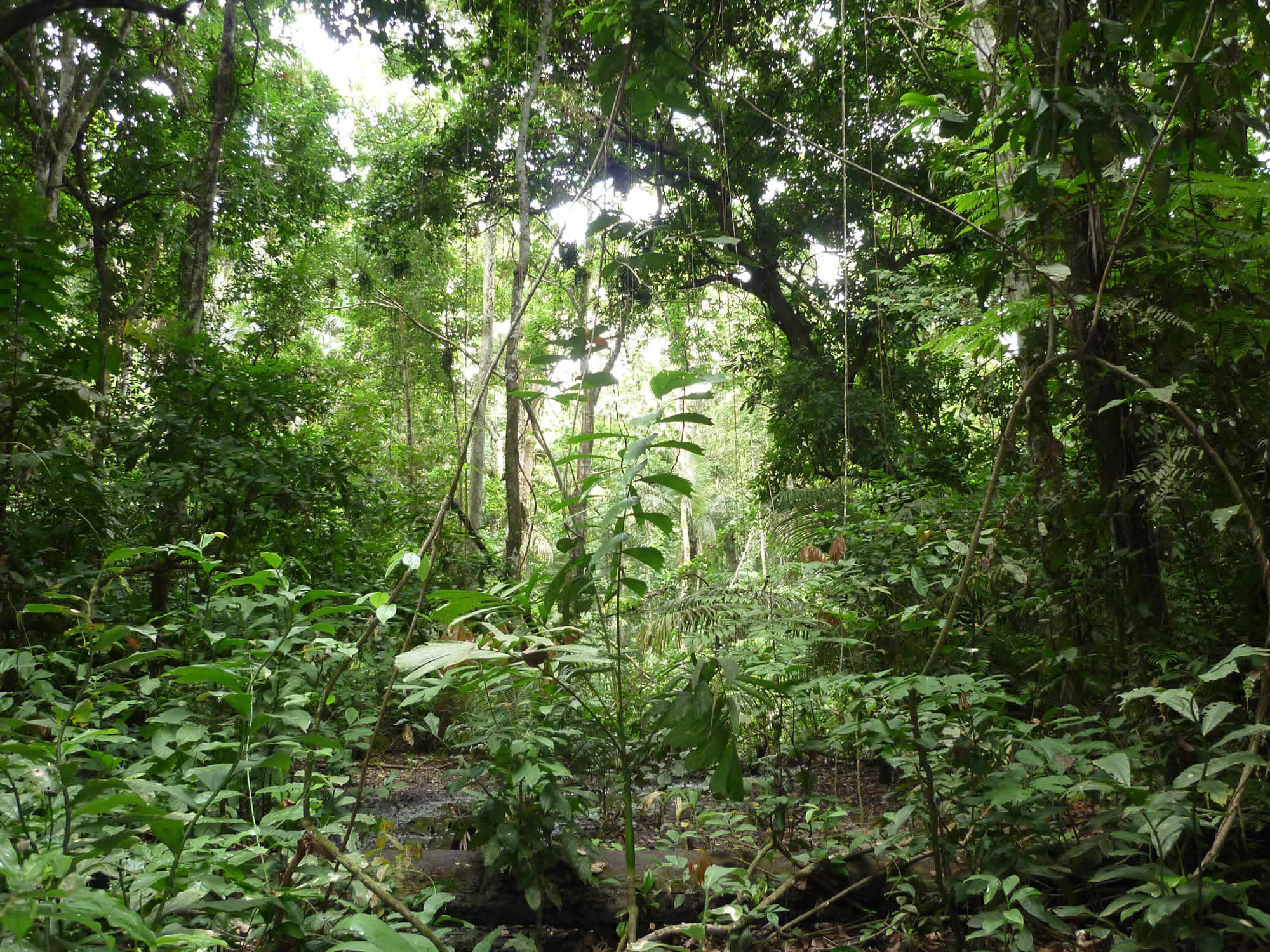
2. Madidi National Park
The National Park Madidi is located to the Northeast of La Paz, Bolivia. Madidi is the protected area with the most diversity of flora: 5,000 to 6,000 species.

1. Uyuni Salt Flats
The Salar de Uyuni in Bolivia was formed by the disappearance of an inland ocean that covered most of the Altiplano and extended all the way to the Titicaca lake. It is an extraordinary experience to cross this lake of salt by car.
Potosí
Follow us on
Contact vivian, our chief bolivia travel expert.
Send us some details so we can start creating your tailor-made trip. Or if you would like to speak to us directly, call us via Skype or Whatsapp.
- Departure date: Number of Participants:
- Tour Length (days): Type of Accomodation: Premium Basic
- *Please note that we are unable to respond to aol.com e-mail addresses due to restrictions by AOL's filters for Bolivia.
- Budget Estimate
- Send Inquiry
+591-68583553

Touropia Travel
Discover the World
10 Best Places to Visit in Bolivia
By Mike Kaplan · Last updated on May 6, 2024
Those who want an authentic and spectacular South American vacation should definitely consider Bolivia. This mountainous country is the only landlocked nation on the continent, and boasts sheer mountains with the world’s highest navigable lake, cultural cities, and spectacular cloud and rain forests.
It is slightly off the beaten tourist path, which makes it possible to travel economically and get a real view of Bolivian life. Here is a look at some of the best places to visit in Bolivia :
10. Rurrenabaque [SEE MAP]
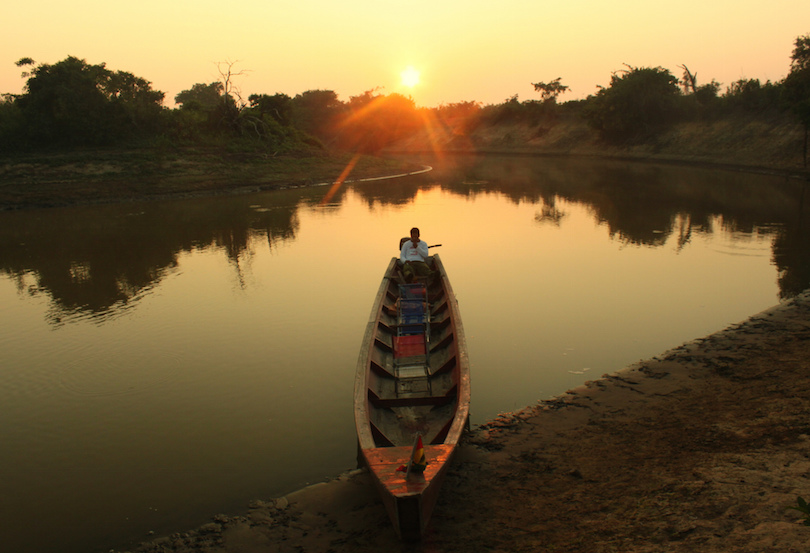
The charming town of Rurrenabaque, or Rurre, is a backpacker’s paradise. It is situated on the shores of the Rio Beni, and is the jumping off point for many jungle, pampas and riverboat tours that last between one and thirty days. The lowland tribe people here, the Tacana, are one of the few who were resistant to Christianity, so the town does not have the typical setup of a central cathedral square. These days, however, it gets a large enough tourist trade that the culture mostly caters to Western tourist tastes.
9. Coroico [SEE MAP]
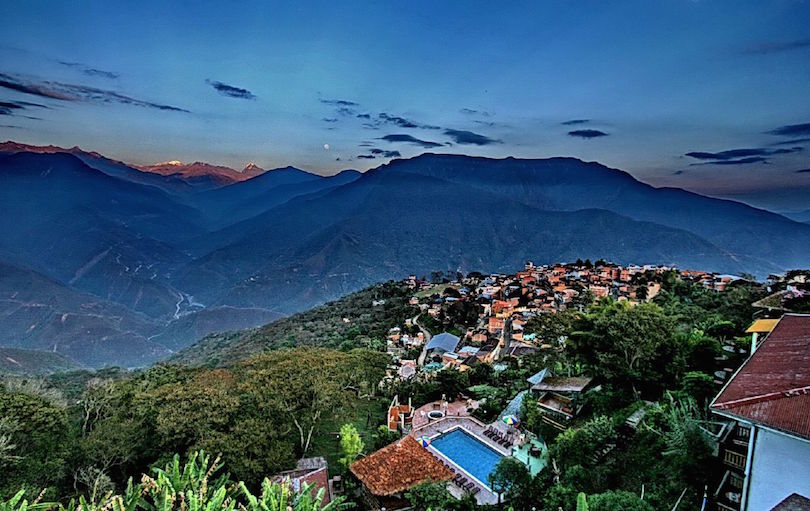
The name of this town is derived from the quechua word meaning “golden hill.” Its location on the side of the Andean foothills gives the resort village of Coroico a spectacular view of lush jungle forest, tropical foothills and jagged, icy peaks. It is low enough in elevation to be warm, and a great stopping point on the way to or from La Paz. Extreme mountain biking is a draw here, though there are several lovely hikes in this region as well to lovely waterfalls and hilltop views.
8. Sorata [SEE MAP]
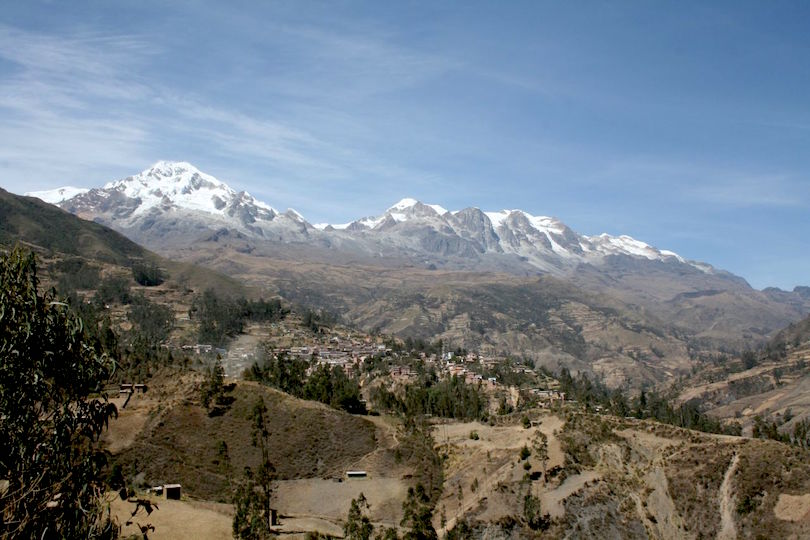
Located between La Paz and Lake Titicaca, the sleepy town of Sorata serves as a base camp for visitors who want to hike in the mountains of the Cordillera Real. The granite slopes of the Cordillera Real lie in the Altiplano, or “high plains,” of the widest part of the Andes Mountains. Six of the towering peaks of the range are over 20,000 feet high. Hikers come to Sorata to plan and prepare for mountain-climbing treks.
7. Copacabana, Bolivia [SEE MAP]
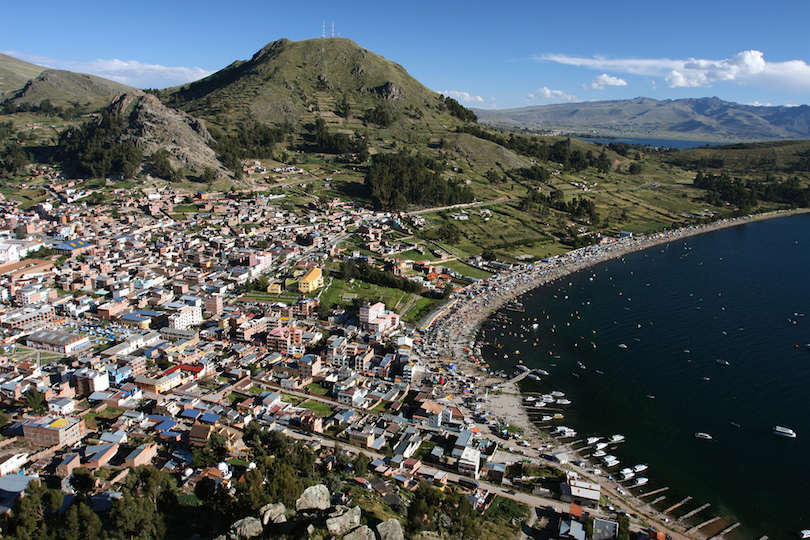
This resort town on the shores of Lake Titicaca appears very touristy, but it has a long history of being a mecca for religious pilgrims. This is the place to board a ferry to the islands of the Sun and the Moon, and to enjoy the beach of the Incas. Those who like to wander outside the touristy part of town will find pleasant hikes and great views, as well as a combination of beautiful Incan and colonial ruins.
6. Potosi [SEE MAP]
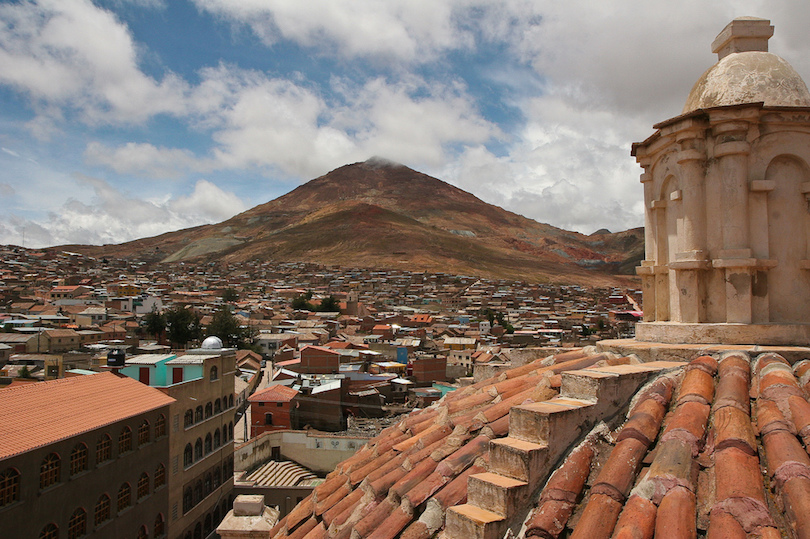
Potosi is one of the world’s highest, and before its discovery by the conquistadors, it was also one of the world’s richest cities. The famed city of silver was by many accounts everything that the Spanish were looking for with El Dorado, except that the metal they found was silver instead of gold. Today, Potosi is a popular place to visit in Bolivia, known for its friendly inhabitants, lovely colonial architecture and tours of the famed mines that once housed over sixty thousand tons of silver.
5. Sucre [SEE MAP]
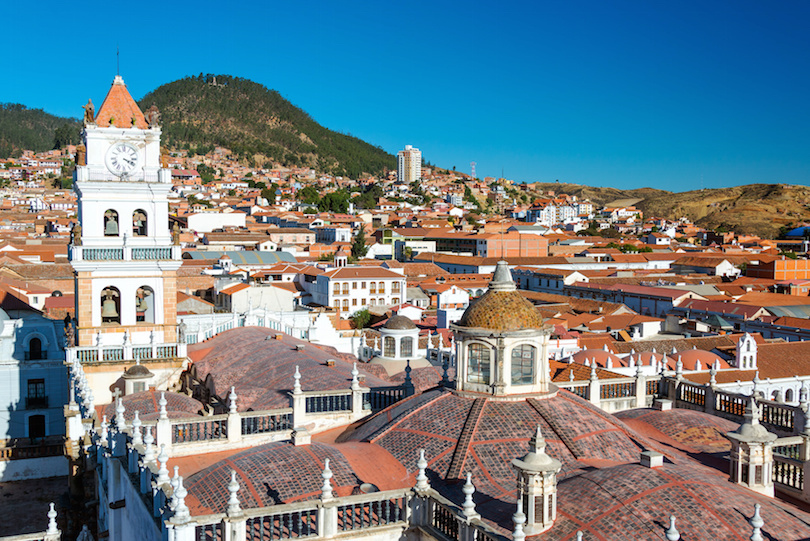
Sucre was once the nation’s capital, and is famed throughout South America as the White city. The town’s central area has beautifully whitewashed and well-kept buildings that are worth seeing. This is an old and wealthy city whose rise in status was tied very closely to Potosi. Guests to Sucre can enjoy the beautiful architecture and local museums, or partake in some fantastic day-trips to see volcanic craters, dinosaur footprints, or the seven waterfalls.
4. Oruro [SEE MAP]
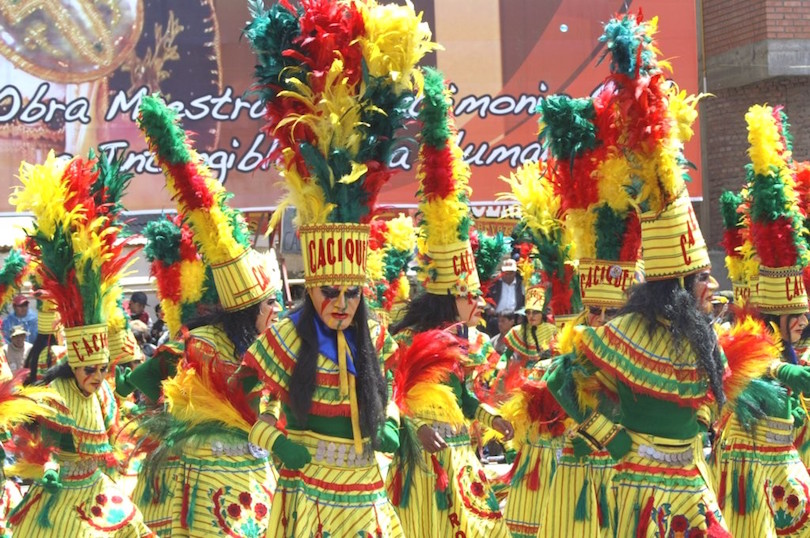
This miners town is one of the largest in Bolivia, and is best known for its lavish costumes and festivities during carnivale season. The festival features thousands of dancers and musicians, performing a broad variety of ethnic dances. Off season, it is a great place to experience the high plains, and is home to several good museums and the artisanal street of Calle La Paz, which makes many of the costumes and masks for the festival, as well as tourist reproductions to bring home and display.
3. Tiwanaku [SEE MAP]

Tiwanaku, found on the southern shore of Lake Titicaca, was the capital city of one of the most important civilizations to exist prior to the Incas. Archaeologists have excavated only a small part of the city, but they estimate that at its peak at least 20,000 people lived in the city. Excavations have shown that the citizens lived in separate neighborhoods, which were enclosed by large adobe walls. Other remains found in Tiwanaku include temples, a pyramid, large gates and carvings of alien-like faces.
2. La Paz [SEE MAP]
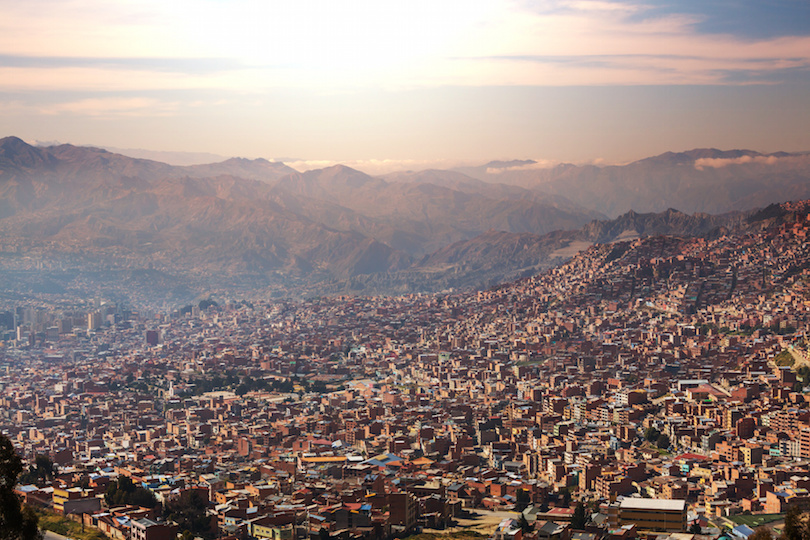
La Paz is the administrative capital of Bolivia, while Sucre is the constitutional capital. Situated on steep hills at an elevation of roughly 3,650 meters (11,975 ft) above sea level, La Paz is the highest “de facto” capital city in the world. The sight from the air as one flies into La Paz is incredible. First, the sprawling slums of El Alto appear, slowly giving way to the sight of La Paz itself, clinging to the sides of what looks like a large gash in the earth.
1. Salar de Uyuni [SEE MAP]
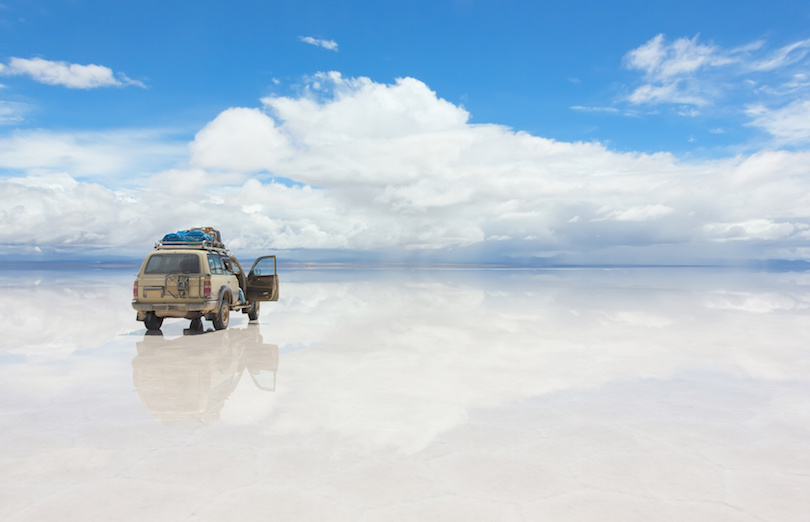
Located in the Andes Mountains, Salar de Uyuni is the largest salt flat in the world. It has an extraordinary flatness with the average altitude variations within one meter (3 feet) over the entire area of the Salar. The expanse of salt creates an unending white landscape during the dry season, but the area is most breathtaking in the rainy season when it is covered in water. The reflection of the blue sky creates a spectacular and surreal landscape, though some tourists insist on seeing the salt.
Map of Bolivia
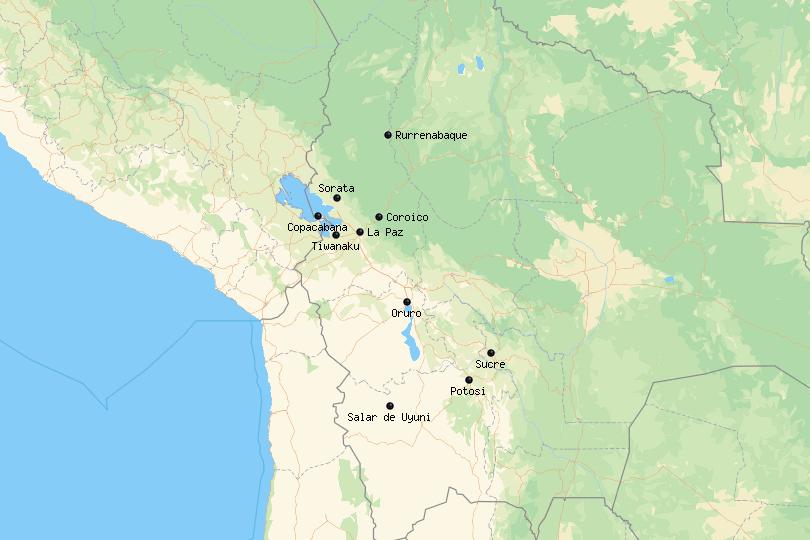
Share this post:

16 Top Tourist Attractions in Bolivia
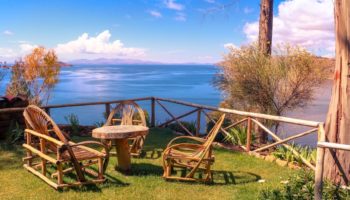
7 Most Amazing Places to Stay in Bolivia
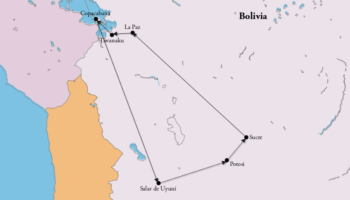
How to Spend 2 Weeks in Bolivia: DIY Itinerary
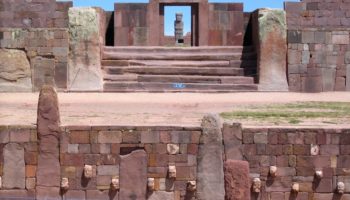
Unravel the Secrets of Tiwanaku in Bolivia
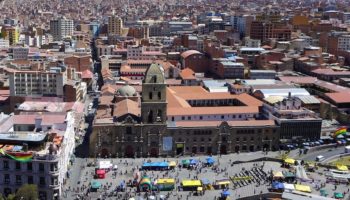
10 Top Things to do in La Paz, Bolivia
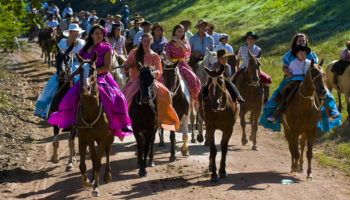
10 Best Places to Visit in Uruguay

25 Best Cities to Visit in Asia
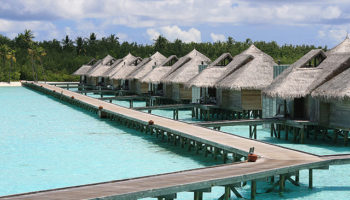
10 Best Luxury Resorts in the Maldives
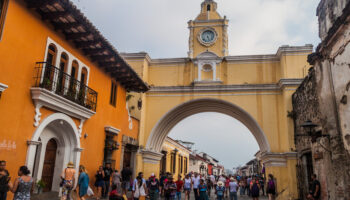
10 Best Places to Visit in Central America
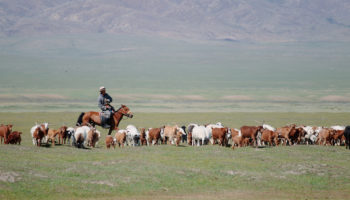
10 Best Places to Visit in Mongolia
Reader interactions.
November 6, 2019 at 9:15 am
Bolivia is not the only land locked nation in the continent. There is also Paraguay.
Leave a Reply Cancel reply
Your email address will not be published. Required fields are marked *
This site uses Akismet to reduce spam. Learn how your comment data is processed .
Awesome, you're subscribed!
Thanks for subscribing! Look out for your first newsletter in your inbox soon!
The best things in life are free.
Sign up for our email to enjoy your city without spending a thing (as well as some options when you’re feeling flush).
Déjà vu! We already have this email. Try another?
By entering your email address you agree to our Terms of Use and Privacy Policy and consent to receive emails from Time Out about news, events, offers and partner promotions.
Love the mag?
Our newsletter hand-delivers the best bits to your inbox. Sign up to unlock our digital magazines and also receive the latest news, events, offers and partner promotions.
- Things to Do
- Food & Drink
- Arts & Culture
- Time Out Market
- Coca-Cola Foodmarks
- Los Angeles
Get us in your inbox
🙌 Awesome, you're subscribed!

The 30 most beautiful places in the world, according to travellers who’ve seen them all
From rainbow-coloured hills to thundering waterfalls and pretty cities, these destinations are some of the most beautiful you’ll find on earth

Choosing the world’s most beautiful places is no easy task. After all, how can you compare a thundering waterfall to a lantern-lit city? Or a rainbow-coloured hill to a gleaming white mosque? The good news is that the planet isn’t held to the same rigid beauty standards as humans are. Whether it’s a tiny island, an entire country or a Buddhist temple, anything goes on our list of the most beautiful places on earth. Spanning every continent, you’ll find some of the usual suspects (what’s a list of beautiful places without Bolivia’s salt flats, after all?) alongside some of the world’s lesser-known beauty spots – all chosen by our network of globetrotting travel writers, who've personally experienced the beauty of every place on this list IRL.
Grace Beard is Time Out’s deputy travel editor, based in London. At Time Out, all of our travel guides are written by local writers who know their cities inside out. For more about how we curate, see our editorial guidelines and check out our latest travel guides written by local experts. RECOMMENDED: 🗺 The world's most underrated travel destinations 🧭 The best places to travel solo 🏝 The best beaches in the world
An email you’ll actually love
The world’s most beautiful places

1. Kotor Bay, Montenegro
In Montenegro, the Adriatic Sea slaloms through narrow passages in the steep Dinaric Alps to form the Bay of Kotor. Here, squeezed between water and rock is the triangular, medieval Old Town of Kotor, with its gravity-defying fortress zigzagging up the steep cliffs above. Although it’s possible to climb the fortress steps from town, I prefer to wander the winding shepherd’s trail on the fortress’ northern flank. It’s here, amid the ruins of a deserted, roadless village, that you can munch on homemade sheep’s cheese and rye bread at the last inhabited farmhouse, overlooking the bay’s glassy, obsidian water.

2. Iceland
You’ll be hard-pushed to find a place with more spectacular natural beauty than Iceland . Its volcanoes, hot springs, lava fields and glaciers have earned it the moniker ‘the land of fire and ice’ – and while the island country’s natural attractions are certainly a sight to behold, Iceland’s towns and cities offer a unique beauty of their own. The capital city of Reykjavik is culturally modern and historically important, with architectural highlights including the nature-inspired Hallgrimskirkja church and Harpa Concert Hall with stunning portside views of Mount Esja. The Westfjords and Austurland regions are dotted with picturesque villages like Ísafjörður , a fishing town surrounded by dramatic mountains, and the artistic Seydisfjordur with its public art and welcoming community.

3. Erg Chebbi, Morocco
Morocco is home to some of the world’s most beautiful deserts, and Erg Chebbi is the most evocative stretch of Sahara sand imaginable. Beyond the town of Merzouga, the Erg Chebbi dunes are a spectacular vision of shape-shifting golden sands that rise up to 300 metres tall and span over 28km in the heart of the Sahara. In the fading light, I trekked out across the desert by camel and spent a night under the stars here in the company of the Berber people. The next morning, I woke early to climb the nearest dune and witnessed a sunrise that will stay with me forever. Seeing the day break over the sloping sands of the Erg Chebbi is as extraordinarily scenic as it gets.

4. Mont-Saint-Michel, France
My first ever trip abroad was a school trip to Brittany, and the first stop on the ferry remains one of the most beautiful sights I’ve ever seen: Normandy’s fairytale island of Mont-Saint-Michel. I’ve been back many times since. I’ve climbed precipitously to the needlepoint of that medieval abbey spire, been guided through the surrounding bay’s miles of quicksand, and slept under ancient beams in a rampart room to watch tides race in at sunrise. What I’ve learned is that, unlike many landmarks, the reality of Le Mont’s fairytale pyramid trumps any photo. No Instagram shot can truly capture the vast misty mirror of sand with one lone fortified pilgrimage site at its heart. It’s like a giant frame for the world’s greatest architectural image.

5. Sheik Zayed Grand Mosque, Abu Dhabi
On approach, the Sheikh Zayed Grand Mosque looms like a white mirage, minarets gleaming, an otherworldly edifice of beauty that could easily pass for Jasmine’s Palace in Aladdin. Inside, the numbers are heady: the mosque boasts the world's single-largest carpet, the world’s third-largest chandelier and acres of pure white Carrara stone. It’s hard to describe the sense of serene peace within, calm and cool even in the melting midday heat. Arrive at opening or closing time to witness the sky’s violet hue reflecting off the marble at night – surely one of the world’s most extraordinary sights.

6. Ella, Sri Lanka
Located in the stunning Hill Country of Sri Lanka , the town of Ella feels like it’s a world away from the surf beaches and bustling cities that have made this country such a popular tourist destination over the years. Ella is a relaxing outdoor-lover’s playground, surrounded by lush greenery, tea plantations and rolling hills. Dozens of hiking trails crisscross the region, including ones that traverse the iconic Nine Arches Bridge – a key sight that makes Sri Lanka’s Kandy–Ella train journey one of the most beautiful rail trips in the world . There is nothing better than returning from a hike and relaxing in one of the town’s many bohemian-style cafes with a cold drink and a delicious bowl of curry.

7. Highlands, Scotland
The majestic mountains, verdant valleys, and lupine lochs of Scotland ’s Highlands are known worldwide for their magic, mystery, and beauty. Many of the most scenic parts of this wild region can only be reached by foot, so this summer, I set out on the country’s oldest and first official long-distance trail, the West Highland Way , with Wilderness Scotland. Over seven days, we hiked 96 miles through wildflower-studded fields and dense forests, stopping overnight in tiny towns, like the quaint lochside village of Kinlochleven. We walked along the banks of Loch Lomond, the largest expanse of fresh water in the UK, climbed the so-called ‘Devil’s Staircase’ trail, and took in views of the UK’s highest mountain, Ben Nevis. I learned that knowing the Highlands is knowing Scotland.

8. Zhangye National Geopark, China
Stripes of crimson, gold, and mossy green paint the hillside. Passing clouds play with the hues, like an artist touching up a masterpiece. Can such vibrant colours be real? Standing on the viewing platform, I had to lift my sunglasses to make sure I wasn’t imagining things. Located in Zhangye National Geopark, the Rainbow Mountains are one of China ’s many beautiful surprises. This stunning technicolour landmass was formed over millions of years by shifting tectonic plates and weather, causing red sandstone and various minerals to mix together.

9. Storms River, South Africa
Driving the forested Garden Route through Western Cape hints at the beauty to come at Storms River, a large river winding between mountains in South Africa ’s Tsitsikamma National Park. Arriving at the coast is absolutely breathtaking: enormous waves crash against the rocks, sending spray into the air, where the sun causes rainbow rays to reflect through the droplets. The long suspension bridge crossing the river is a highlight, with spectacular views up the river gorge or out to sea. Once you’ve taken in the sight of the river and the coastal forest, head out on the famous Otter Trail, which will lead you to the park’s magnificent waterfall.

10. New Forest, England
There aren’t many places where you’ll be startled by a pony or donkey stepping into the road, but that’s the anachronistic beauty of the New Forest in the south of England. This ancient woodland was given its name by William the Conqueror more than 900 years ago. If you choose to visit in the autumn, when the heath is purple with heather, you may find pigs guzzling acorns on the forest floor (they’re sent to protect the delicate stomachs of the 5,000 free-roaming ponies). Perhaps that’s where the famous Pig restaurant and hotel got its name – do pop in for pork scratchings and a pint.

11. Paradise Bay, Antarctica
Towards the Antarctic Peninsula’s tip is mountain-rimmed Paradise Bay, where I cruised past icebergs pristine white on top and electric blue beneath. Disembarking, I felt the solitude of being one of only a few thousand humans on the entire continent, outnumbered by many millions of penguins. The stark landscape is enlivened by these hopping-shuffling-diving birds and large lumps of loafing seals. Nearby, on one unforgettable evening, I watched a pod of orcas hunt their dinner, a wild moment in this dreamlike place at the end of the world.

12. Altiplano, Bolivia
Bolivia is a place of technicolour lakes, seemingly endless jagged mountains and immense salt flats. Hauling into the back of a weatherworn 4x4, I spent four days careening over the Andean plateau and following flocks of low-flying flamingos to the Altiplano’s highlights. Laguna Verde, a perwinkle lagoon backed by a perfectly conical mountain peak. The pink waters of Laguna Colorada, fading purple in the shifting sun. And the Altiplano’s biggest draw: Salar de Uyuni. The cracked white salt flats are lightly flooded in the winter months, forming a perfect mirror of the sky.

13. Hoi An, Vietnam
Silk lanterns sway outside rows of golden-hued shophouses in this ancient river town. Located on Vietnam ’s central coast, life in Hoi An moves like molasses – slow and sweet. When I lived in this dreamy little community, I spent mornings sipping coconut coffee in cafes and afternoons biking through swaying rice paddies past grazing buffalo. Now, I spend a few months a year here, watching lantern-lit boats glode along the Thu Bon river, cycling through Old Town before the evening crowds gather, and lounging on one of Vietnam’s most beautiful beaches.

14. Milford Sound, New Zealand
The most famous of New Zealand ’s fiords, Milford Sound is a marvel of nature within the spectacular Fiordland National Park, on the west coast of the South Island. Enjoy the blissful sound of silence as you cruise the inky waters, where sights include the towering mist-draped mountains, frothing waterfalls tumbling into the cliff faces and fur seals soaking up the sun. The history of this famous site stretches back hundreds of millions of years, and many ice ages later, the beauty of Milford Sound remains as timeless as ever.

15. Jaipur, India
Jaipur, otherwise known as the Pink City for its rosy-coloured buildings, is a creative hub at the heart of India ’s Rajasthan state. As well as being known for a rt forms such as block printing and blue pottery, the city is characterised by its royal past – but the real beauty of Jaipur exists outside of the palaces. Walk through the terracotta pink gates of the Old City and you'll see colour everywhere, from spices and fruits to tiny stalls selling quilts and carpets. If you want to get the full experience of life in Jaipur, visit a bazaar for some street shopping. Walk through the stalls, stop for chai and enjoy the chaos.

16. Hormuz Island, Iran
When I stepped onto this teardrop-shaped island off Iran’s coast, witnessing the sun descending on the horizon and the salt dome come alive in a breathtaking symphony of reds, yellows and oranges – courtesy of over 70 minerals found here – I felt I was witnessing the fullness of life and nature’s artistry. This little-known ‘rainbow island’ is a land of shimmering salt caves and crimson-hued beaches, where a ruby-red mountain casts an other-worldly crimson glow over the shoreline and waves. The red soil here, called gelack, is used in local cuisine as a spice in sauces and curries. Where else in the world can you find soil so beautiful it’s good enough to eat?

17. Puglia, Italy
Facing the sparkling ocean on Italy 's wild Adriatic coast, Puglia is a masterpiece of scenery that's often overlooked in favour of Italy's more Instafamous destinations. Thanks to the region’s slow pace of life, it’s perfect for cycling. I’ve done so several times, crisscrossing streets that haven't changed in centuries, taking in landscapes carpeted with olive groves and admiring the unique beauty of Puglian architecture. The cone-roofed traditional Trulli houses of Alberobello – a Unesco World Heritage Site – are the most well-known of Puglia's sights, but don't miss Lecce's baroque churches, the clifftop town of Polignano a Mare or quaint, medieval Monopoli.

18. Victoria Falls, Africa
Straddling the borders of Zambia and Zimbabwe, Victoria Falls is known to be the world’s largest waterfall. Immense curtains of water stretch along the edge of Victoria Falls National Park –home to giraffe, zebra, baboons, and other wildlife – and spill over cliff faces into the whirling pools of the Zambezi River. The first time I visited, standing at the edge of a dense jungle atop a flat rock table and gazing down into the abyss, I was swallowed by spirals of mist, rising from the bellowing falls and raining back down on me. It’s easy to see how Victoria Falls earned its name in the Kololo language: Mosi-oa-Tunya , meaning ‘The Smoke That Thunders’.

19. Kinkaku-ji, Japan
Nestled in the green hills of northeast Kyoto , the Zen Buddhist temple of Kinkaku-ji glistens in gold leaf. Originally built in 1397, this gilded Buddhist shrine sits among bonsai-style pines, Japanese red maples, and mossy stones. Countless photos have been snapped of the Golden Pavilion and surrounding nature reflected on the mirrored pond, but be warned: it isn’t quite as tranquil as it looks, being one of the most popular sites in Kyoto. Step away from the money shot and explore the wider complex and garden to get away from the crowds. The gentle path beckons you through landscapes beautiful in every season, whether covered in cherry blossoms or thick snow, and is graced by incense, bell chimes, and enchanting temple vistas.

20. South Water Caye, Belize
I’ve had my share of pinch-me travel moments, but South Water Caye is the only place I’ve looked out the window while brushing my teeth and watched an eagle ray glide through water the colour of a Bombay Sapphire bottle. This dreamy island, a short boat ride away from the coast of Belize , is full of screen-saver-worthy sights; the highlight being the untouched barrier reef full of vibrant corals. It’s a place where the only sounds are lapping waves melting into sugar-white shores and palm tree fronds softly clicking in the Caribbean breeze. In one word: paradise.

21. Danakil Depression, Ethiopia
When I arrived at Danakil Depression, after two days of travel across sweeping swathes of sand and dry, cracked earth, I had to blink twice to make sure the landscape wasn’t a mirage. Geometric white salt flats glimmered beneath the afternoon sun and coral-like formations in rich shades of ochre and ruby rose among molten pools of bubbling green-yellow sulfur. Supposedly the hottest place on earth, the Danakil Depression in the remote Afar region of Ethiopia is formed by the slow ripping apart of tectonic plates, creating a surreal realm of lava lakes, colourful hot springs, and towering salt formations.

22. Big Sur, USA
The majestic Santa Lucia mountains meet the Pacific Ocean along California ’s central coast to create the rugged and breathtaking natural beauty of Big Sur. Drive California’s winding Highway 1 along the coast and spend time in Big Sur, meandering through towering trees, along creeks, up mountain ridges, and onto windswept bluffs overlooking the ocean. The fresh air smells of salty ocean, earthy bay laurel and redwoods, and the sight of the waves and the sunlight dancing through the fog is mesmerizing. Keep an eye out for spouts from migrating gray whales and sea otters bobbing out on the water.

23. Maria Island National Park, Tasmania
A small island off the coast of a big island (off the coast off an even bigger island) Tasmania ’s Maria Island National Park is a rare pocket of raw, unbridled beauty. The island known by Aboriginal people as wukaluwikiwayna was once a convict settlement, but today it’s the domain of Australian native wildlife. While hiking, I saw wombats, wallabies, kangaroos, Tasmanian devils and a massive tiger snake in just one hour. Then there’s the honeycomb-coloured cliffs and white-sand beaches with barely a soul in sight. Wondrous wildlife encounters by day, and superior stargazing after dark, Maria Island is the greatest show on earth, day and night.

24. Registan Square, Uzbekistan
It was one of the most mesmerizing sights we’d laid our eyes on. A vast square flanked by three monumental structures that are as grand as they are intricate, as overwhelming as they are welcoming. We were at Registan Square, the ancient beating heart of Samarkand, the quintessential Silk Road city in present-day Uzbekistan. Registan’s three fifteenth- to seventeenth-century madrasahs are a spectacle of arched gateways, glimmering domes, and tall minarets, decorated with geometric patterns in bricks, tiles, and mosaics. And just when you think it couldn’t get more majestic, come dusk, the monuments are lit up in all their glory.

25. Choquequirao, Peru
Arriving at Choquequirao, an ancient Inca city perched high above Peru ’s Apurímac River, is both visually and physically exhilarating. The Choquequirao Trail is challenging, but it made the moment I reached those sweeping canyon and mountain views more rewarding. Known as Machu Picchu’s sister site – but with markedly less visitors – Choquequirao is a sprawling archaeological site high on the canyon rim with about 80 percent still covered by dense cloud forest. The name means ‘ Cradle of Gold’ in Quechua, though the gold is long gone. Walking through the ruins, I was in awe of a civilisation that built with such intricate stonework and chose such a remote and spectacular location.

26. Lord Howe Island, Australia
Northeast of Sydney , this World Heritage-listed speck in the Tasman Sea was described by Sir David Attenborough as ‘so extraordinary it is almost unbelievable’. Lord Howe Island is a croissant-shaped island that cradles a turquoise lagoon, framed by mountains, white sand beaches (I got married here on one!), and fringed by the world’s southernmost coral reef. Just 11km long by 2km wide, Lord Howe is recognised for its volcanic provenance, reef, and incredible biodiversity. Across this tiny stretch of land, you’ll find 241 plant species, 207 bird species and 90 types of coral. Visitor numbers are capped to protect this paradise, so nature reigns supreme here.

27. Red Rocks Amphipheatre, USA
A 20-minute drive from downtown Denver you’ll find one of the most aesthetically (and acoustically) blessed outdoor concert venues on the planet. Joining 9000-or-so other concertgoers, I was utterly dumbstruck when I entered Red Rocks Amphitheatre for the first time. Flanked by rocks the colour of deep rust, this high-altitude venue’s beauty is matched by the all-round good vibes and fresh mountain air that this corner of Colorado is known for. Having hosted the likes of The Beatles, Jimi Hendrix and Louis Armstrong, Red Rocks Amphitheater is as spectacular as concert venues get.

28. Perito Moreno Glacier, Argentina
At first sight of Perito Moreno Glacier, located in Los Glaciares National Park, Argentina , I was overwhelmed. From a boardwalk overlooking milky-green Lake Argentino, scattered with chunks of ice, I gazed at the immense stretch of whiteness disappearing into the horizon, hemmed by dark, foreboding mountain peaks. Jagged spires, split by ice fissures revealing a sudden pop of blue, top the glacier’s 70-metre-high vertical wall, while its base is layered with multiple hues, from a light powder blue to deep turquoise. It’s not just the sight of the glacier that’s astounding, but also the sound. Crackling and rumbling noises echoed in the valley, particularly intense when ice calved off, sending waves across the lake's surface. Just stunning!

29. Savannah, USA
This elegant coastal city in Georgia , one of the oldest cities in the US , stole my heart the very first time I visited. It’s easy to lose yourself in the city’s history, natural splendour and famous southern charm as you wander along its cobbled streets and through its 22 squares. You’ll walk under the shade of live oak trees draped with Spanish moss and past grand, pastel-hued mansions. From Forsyth Park, with its Parisian-inspired fountain, to the lively Broughton Street, where you'll find an eclectic mix of shops and dining, Savannah is truly magnetic.

30. Lapland, Finland
Lying above the Arctic Circle is Lapland, Finland ’s northernmost region. I spent five days in Finnish Lapland during the winter season and was lucky enough to catch the enchanting dance of the Northern Lights in the night sky. The area is home to nature-loving people, such as at HaliPuu , who engage in unique pastimes like arctic cocooning and tree hugging competitions. In the summer, you can hike to your heart’s content in the Midnight Sun, but it’s in winter the region comes into its own. Immerse yourself in winter traditions such as ice water swimming, relaxing in a Finnish sauna and dog sledding through the snowy wilderness.

[image] [title]
Discover Time Out original video
- Press office
- Investor relations
- Work for Time Out
- Editorial guidelines
- Privacy notice
- Do not sell my information
- Cookie policy
- Accessibility statement
- Terms of use
- Modern slavery statement
- Manage cookies
- Advertising
Time Out Worldwide
- All Time Out Locations
- North America
- South America
- South Pacific

IMAGES
VIDEO
COMMENTS
None more so than the fortress-like mint, Casa Nacional de la Moneda, now one of Bolivia's best museums. 5. San Felipe de Neri Monastery, Sucre. Known as the White City of the Americas, there's no better way to take in the city's ivory architecture than from the bell tower of San Felipe de Neri.
3. Visit Lake Titicaca, the birthplace of the sun. Any trip to Bolivia is incomplete without a visit to sacred Lake Titicaca. The highest navigable lake in the world at 3812m (12,506ft), Titicaca's waves kiss picturesque farming villages and envelop legends of ancient civilizations lost in the water's depths.
1. The Salar de Uyuni salt flats. Best for a once-in-a-lifetime experience. Undoubtedly the pick of Bolivia's tourist sights, the endless, dazzling-white Salar de Uyuni (salt flats of Uyuni) were formed by the disappearance of an inland ocean that once covered most of the Altiplano. As the waters evaporated, they left behind the world's ...
1. Bike down the world's most dangerous road. One of the most popular tourist attractions in Bolivia is the famous "Camino de la Muerte" - also known as the Death Road or World's Most Dangerous Road. The best way to experience this crazy ride is to hurtle down it on a mountain bike!
The salt flats appear to go forever! We're starting this list of the best places to visit in Bolivia off with a bang, with the Bolivia Salt Flats.This is one of the most-visited spots in the country and definitely among the top Insta-famous destinations in South America - just check out my photo above!. These huge salt flats take over a whopping 10,000 square kilometers (3,900 sq miles ...
9. Biocentro Güembé. 1,075. Gardens. GUEMBE is a must visit in Santa Cruz de la Sierra Bolivia, come and experience a natural paradise of more than 24 hectares, surrounded by exotic plants, lush forests and exotic animals typical of …. 2023. 10.
This is one of the most mysterious ancient ruins in South America. 9. Biocentro Güembé. GUEMBE is a must visit in Santa Cruz de la Sierra Bolivia, come and experience a natural paradise of more than 24 hectares, surrounded by exotic plants, lush forests and exotic animals typical of ….
One of only two landlocked countries in South America, Bolivia is full of wonders. Within a week, you will visit Lake Titicaca, the de facto capital La Paz, the actual capital Sucre as well as the fascinating Salar de Uyuni. view trip ⤍. 11 days / from 2980 USD. Machu Picchu, Titicaca & Uyuni.
Bolivia. The world's largest salt flat sits at a lofty 3653m (11,985ft) and blankets an amazing 12,000 sq km (4633 sq miles). It was part of a prehistoric salt….
As one of the most important pre-Colombian sites in the Americas, a visit to Tiwanaku is a must for any history buff. Set under the majestic Cordillera Real mountain range, Tiwinaku features an impressive number of beautifully crafted sculptures, gigantic stone building blocks and the mysterious, megalithic stone arch known as El Puerta del Sol ...
Here we have selected 12 of the most popular tourist attractions in Bolivia: Bolivia travel tips. Bolivia has a variety of tourist attractions for all types of travelers, make sure to plan ahead of time! Many travelers continue their journey to Peru. Make sure to check out Bolivia Hop, considered the best way to travel between Bolivia and Peru.
Bolivia tourist attractions The best things to do in Bolivia 1. Explore Salar de Uyuni Salt Flats. The number one place you should visit in Bolivia is Uyuni! Salar de Uyuni Salt Flats are the biggest salt flats on the planet. It's a huge area of over 10,000 square kilometers where the earth is made of salt.
Lesser-known PLACES TO SEE IN BOLIVIA. 11. TIWANAKU. Why visit: The site was once the capital of the Tiwanaku culture, a pre-Incan culture which flourished from around 300 BC to 1150 AD. Inside visitors can marvel at the Akapana Pyramid, the Sunken Temple and a number of intricate stone carvings and sculptures.
Reach new heights at Huayna Potosi, one of the most beautiful places in Bolivia. 2. La Muela del Diablo. Towering over the southern part of La Paz, La Muela del Diablo, or "The Devil's Molar," is a sight to behold. This dramatic rock formation, resembling a tooth jutting out from the earth, is one of the most beautiful places to visit in ...
Bolivia Tourist Information Center. Our friendly staff can give you helpful advice about almost anything regarding your stay in Bolivia. We'll point out things you don't want to miss, offer tips, advice, and inspiration. We are happy to show you how to get to places and guide you the logic way to plan your itinerary.
Here are Bolivia Top 10 Tourist Attractions: 1. Eduardo Avaroa Andean Fauna National Reserve. You will enter a world with some of the most unusual landscapes filled with rare and endangered species, including large colonies of vizcachas and flamingos, as you explore the Eduardo Avaroa Andean Fauna National Reserve.
Area Protegida Municipal Aquicuana. This lush jungle reserve 22km north of Riberalta (B$30 by moto-taxi) is a great spot for bird-watching, wildlife watching (particularly caimans and…. Discover the best attractions in Bolivia including El Fuerte, Casa Nacional de la Moneda, and El Picacho.
From the high peaks of the Andes mountains, the mind-blowing salt flats in Uyuni, to the hot and sweaty jungles of the Amazon, Bolivia has a little bit of everything. See the top 10 tourist attractions in Bolivia below!: 1. Uyuni Salt Flats. The Uyuni Salt Flats (Salar de Uyuni) located at about 3800 meters above sea level amid the Andes in ...
Here are the most interesting, must see places to visit in Bolivia on your vacation: Bolivian Jungle. 1. The Bolivian Amazon. The Bolivian Amazon may rest more than a thousand kilometers from the flow of the Amazon River itself, but the piece of the Amazon Rainforest that lies within Bolivia's borders is some of the best you'll find.
Tourist attractions in Bolivia What to see in Bolivia? 2019-08-20 Updated: 2019-08-22. Lake Titicaca, the ciy of La Paz and the surreal Salar de Uyuni are the best known and most visited attractions in Bolivia, but there are also other, less famous hidden gems for those willing to stray from the beaten track: the jungle and pampas in Rurrenabaque, the imponent Sajama peak and the world's ...
It is slightly off the beaten tourist path, which makes it possible to travel economically and get a real view of Bolivian life. Here is a look at some of the best places to visit in Bolivia: 10. Rurrenabaque [SEE MAP] hood.jonathan / Flickr. The charming town of Rurrenabaque, or Rurre, is a backpacker's paradise.
Almost three times the size of Montana, Bolivia is big on travel appeal. Some of the best places to visit and see range from pink dolphins to the world's largest salt pan.
🧭 The best places to travel solo 🏝 The best beaches in the world. ... Bolivia is a place of technicolour lakes, seemingly endless jagged mountains and immense salt flats. Hauling into the ...